What Does the Phrase “Slow Travel” Actually Mean?
By Sebastian Modak

This is part of a collection of stories on slow travel—read more here.
For about a decade, Paul Salopek, a Pulitzer-winning journalist, has been walking. By that, I don’t mean he’s consistently hit his 10,000 steps on daily constitutionals. In 2013, Salopek set out on the Out of Eden Walk , a project to follow the 80,000-year-old footsteps of our forebears, following the 24,000-mile route of human migration from Ethiopia to the southern tip of South America —all on foot just as they had done. Salopek’s still-unfolding, extraordinary journey might be considered the ultimate experiment in so-called “slow travel,” a term that is being used more and more frequently to describe everything from backcountry bikepacking expeditions to mega-ship cruises. But when I reach Salopek on Zoom to ask him about it, he is in the Chinese province of Shaanxi and is audibly confused about what the term even means. “There’s been no other way but ‘slow travel’ for 99 percent of our history,” he says. “I guess in today’s world to premise anything on going slowly is revolutionary.”
It’s hard to pinpoint its exact beginnings but the slow travel revolution—an intentional move towards more mindful, more environmentally responsible, less purely convenient modes of getting around—organically emerged from another revolution. In 1986, a journalist named Carlo Petrini, in the most Italian protest ever conducted, handed out bowls of penne pasta to passersby and demonstrators who yelled, “We don’t want fast food. We want slow food!” The target? A McDonald’s, the first in Italy , set to open at the foot of the Spanish Steps in Rome. The McDonald’s did indeed open, and is still there, but by actively resisting the very concept of fast food, Petrini started what became known as the slow food movement, a culinary practice that emphasizes natural ingredients, traditional cooking methods, and long, languorous meals where food is relished rather than treated as fuel.
If slow food is defined, at least partially, by what it’s not, then the same can be said for slow travel. Slow travel can be best understood as a collective reaction to our post-industrial obsession with convenience, where time, and using as little of it as possible, is the biggest priority in getting from point A to point B. Some have tried to give slow travel a more concrete definition. In 2010, for example, a decade before the coronavirus pandemic saw skyrocketing interest in trekking, cycling, and domestic trips, two tourism researchers out of the UK, Janet Dickinson and Les Lumsdown, wrote that slow travel was “an emerging conceptual framework which offers an alternative to air and car travel, where people travel to destinations more slowly overland, stay longer and travel less.” Seems simple enough. Take a train, a bike, kayak, or your own two feet instead of a plane and car and just like that, you’ve taken your vow of mindfulness; welcome to the church of slow travel?
Of course, like any trend that starts with a kind of radical thoughtfulness, the definition of slow travel gets slippery with the more questions you ask. What if, on that train ride, you do nothing but scroll on TikTok? What if the place and the people you really want to get to know and learn from are just too difficult to reach without getting on a plane, because of other obligations, money, or a disability? Does that disqualify you? Run a Google search of slow travel and you won’t need to scroll long before you’re accosted with shiny images of beautiful people on pristine beaches and “must-have” checklists for worthwhile “slow travel” experiences. What if you can’t afford the five-digit price tags associated with the two-week yacht trips, luxury train rides, and wilderness resorts that market themselves as the ultimate in slow travel indulgences?
What emerges then is a far more complex definition of what it means to travel slowly. Traveling slowly can mean exploring your own backyard, avoiding environmentally damaging transportation when possible, spending a lot of time in one place instead of a little time in many—but it also is an internal process. It means tamping down our own built-in, conditioned obsessions with time and allowing the world to move just a little slower so that we can actually notice it. Slow travel is a mindset: you don’t need three weeks of vacation to slow down. A day spent strolling through an unfamiliar neighborhood without a crammed to-do list or exploring a state park with nothing but a route map and a bag of snacks could fall under the umbrella of slow travel. It comes down to how you engage with the world as you move through it.
“It’s about taking the time to make a connection—to the land and each other,” says Chyanne Trenholm
“If slow travel is about stopping and taking the time to properly connect with a place and its people, then yes, it’s something I’m all for,” says Chyanne Trenholm, a member of the Homalco First Nation, and the assistant general manager of Vancouver Island-based Homalco Wildlife and Cultural Tours . The Indigenous-owned company organizes visits to local communities, and Bute Inlet wildlife excursions. Trenholm says the idea of taking it slow and being present has been ingrained in her culture as a steward of the land. “Slow tourism is not the term we’ve used much, because it’s not just how we think of our brand—it’s who we are,” she says. She feels a certain sense of responsibility in instilling that kind of thinking in visitors who might arrive looking to get that one shot of a grizzly bear with a fish in its mouth and then leave. “It’s about taking the time to make a connection—to the land and each other,” she says. “I think humans in general can learn a lot from the act of making those connections.”
Monisha Rajesh , the author of three books on long-distance train travel, thinks that moving slower gives our brains the time it needs to process our experiences. “On a plane, you lift out of one place and drop into the next without any awareness of the in-betweenness,” she says. “On a train, the journey starts the second you get on board. I don’t know who is going to enter my story and the surroundings are part of the adventure.” Instead of the time it takes to get from origin to destination being a kind of blank nothingness—a necessary, if somewhat annoying, component of travel—suddenly, it teems with possibility.
When people hear about long, slow journeys—a cross-country bike trip , a paddle down the Mississippi, a 10-year-and-counting walk in the footsteps of early Homo sapiens—the reaction is usually a mix of “you-did- what?” shock and “I-could-never” envy. It’s a strange reaction considering our history as a species. Salopek tells me that he’s noticed something almost primeval about entering a community that is not your own by foot. “They see you coming from a distance. By the time you walk up to them and say hello there’s this ritual of greeting that you’re both prepared for,” he says. “We’ve been walking into each other’s viewsheds for 300,000 years and that’s why it feels so good.”

By signing up you agree to our User Agreement (including the class action waiver and arbitration provisions ), our Privacy Policy & Cookie Statement and to receive marketing and account-related emails from Traveller. You can unsubscribe at any time. This site is protected by reCAPTCHA and the Google Privacy Policy and Terms of Service apply.
- Work + Money
- Relationships
- Slow Living

What Does Slow Travel Mean? (And How To Do It)

The first time I traveled on my own, I was 19 and studying abroad in the Netherlands. Every weekend was a mad dash to see a different city in 48 hours, and to experience as much of each city as possible — no museum, cathedral, park, or touristy attraction left unturned. 😵💫
“That breakneck speed, while a great tool to check destinations off a list, was no way to truly experience a destination.”
Spring break was the maddest dash of all, encompassing four cities in nine days and about half as much sleep as I should’ve gotten. Barcelona to Rome to Florence to Venice, then back in time for an 8 a.m. class on Monday.
I was beyond lucky to have had that experience, learning how to travel on my own, how to figure out a new city’s public transportation, and how to manage my time and budget. But that rapid pace began to set the tone for future trips I’d plan. A week in France? Make it two nights in every city. Three days to travel the whole of Ireland? No problem.
That breakneck speed, while a great tool to check destinations off a list, was no way to truly experience a destination . During the weekdays while abroad in the Netherlands, I absorbed characteristics of the culture: The 10 a.m. coffee break everyone seemed to take, the food folks would eat for lunch, the way no one drew their shades at night. But the quick trips were something different. Sure, I checked Prague off my list — but I couldn’t even tell you how to say “thank you” in Czech, which sort of makes you question what the purpose of travel is in the first place.
“‘Slow travel’ presents an alternative to the see-every-country ethos.”
“Slow travel” presents an alternative to the see-every-country ethos. It tells us to accept that we won’t experience the entire world in one lifetime, and presents more sustainable travel options.
What is slow travel?
Like slow living , slow travel comes from the mother of all “slow” movements: Italian political activist Carlo Petrini’s International Slow Food movement, founded in 1989.
“At its core, I think slow travel is about intentionality and connection,” says Gi Shieh , a slow travel content creator. “It’s about spending more time at a destination to immerse yourself fully in the beauty and uniqueness of the land and its people.”
“Simply put, traveling slowly means staying for longer in one place.”
Simply put, traveling slowly means staying for longer in one place. Say you have nine days to travel — instead of hopping to three different cities or countries, consider spending all nine days at one destination, really getting to know the area.
Slow travel might also look like choosing destinations more off the beaten path, avoiding over-toured spots. According to CNN, some of 2023’s worst destinations for overtourism included Amsterdam, Phuket, and Venice, but some less traveled, alternative destinations might include the Netherlands’ Utrecht, Thailand’s Chiang Mai, or Italy’s Tuscan countryside.
Take the opportunity to connect with local people at your destinations. Stay in smaller bed-and-breakfasts, dine in small, locally owned restaurants, and chat with shop owners.
“In general, move around less — and when you move, move slower.”
And when choosing transportation methods, you’ll want to think about the most sustainable options. When possible, replace planes with trains; or car rides with bikes and walks. In general, move around less — and when you move, move slower. It might take a few more hours to get from point A to point B, and that’s kind of the well, point. You’ll understand the landscape of a country from your train window, or the way the wind smells while you’re riding a bike.
“Slow travel also means taking the time to note all the little details that make a place beautiful,” says Shieh, who also runs a blog on slow travel and sustainable fashion. “Like, how the Mediterranean sun hits the laundry drying on a balcony in the south of Italy or the specific cadence of honks of Vietnamese motorbikes during rush hour in Hanoi.”
What are the benefits of slow travel?
Besides lowering the carbon footprint of your trip, traveling slowly gives you a more mindful connection to the place you’re visiting. You likely won’t remember the time spent waiting in line to enter a popular sightseeing destination, but you will hang onto the conversation with a friendly local or the way you felt after a long, leisurely lunch.
“Traveling slowly gives you a more mindful connection to the place you’re visiting.”
Less time spent on planes or tour buses zipping around to new spots means more time (and money) to spend at restaurants that cook with local ingredients or wandering a town and picking up a handmade trinket that catches your eye. And when you choose less heavily toured destinations, it takes pressure off of over-toured spots with thinly stretched resources, like Hawaii or Bali.
Tips on traveling more slowly
1. plan to take some extra time..
“Unfortunately, in today’s society, it’s hard to step away for an extended period of time,” says Shieh, noting that travel itself is a luxury. “It’s important to acknowledge that slow travel is a huge privilege,” she says. “I feel so lucky to be able to experience the world at a slower, more intentional pace, and not everybody has the opportunity to do so!”
“If you only have a short travel window of a few days, use it to explore destinations closer to home that don’t require a flight.”
Not everyone has two weeks or more to spend leisurely roaming a foreign country, but that doesn’t mean you can’t still travel more slowly. Plan trips many months in advance and for as long as you feel comfortable — maybe a six-day trip becomes a nine-day one that you spend in just one place. And if you only have a short travel window of a few days, use it to explore destinations closer to home that don’t require a flight.
And while traveling, “don’t overpack your itinerary,” says Lauren Fremont, executive director of the Winegrowers of Dry Creek Valley , a small wine region known for slow travel and sustainable practices. “Leave room for unexpected delights and meaningful connections. That’s where the magic happens.”
2. Do your research.
“Think about going beyond the pictures you’ll take for social media.” – Matilda Reuter Engle, proprietor of Middleburg Hospitality
With a little extra time and planning, slow travel becomes a lot more feasible. Do your research on destinations, rather than just heading out where you’ve seen others go. Think about what you want to learn and experience during a trip, says Matilda Reuter Engle, proprietor of Middleburg Hospitality , which is focused on preserving historical traditions via hospitality in Virginia Piedmont. “Think about going beyond the pictures you’ll take for social media,” she says. “Identify the lifestyles, history, and ancestral traditions that ignite your curiosity.”
If you’ve planned for a bit more time, consider stacking destinations relatively close to each other to make your travel more sustainable. For example, instead of spending a week in a European country this year and a week in a different European country next year, try doing the entire two-week trip in one go.
3. Stay at B&Bs or small hotels.
Once you have your destination, look for small business accommodations. Bed-and-breakfasts are fantastic — usually independently run, they pretty much hand you the opportunity to engage with the owners and the local community.
Choose small hotels over larger ones, especially all-inclusives that tend to use resources like food and water inefficiently. Of course, there are exceptions to this rule — some hotels have fantastic sustainability practices, but finding those involves, again, lots of time and research.
“If you go the Airbnb route, consider renting a room in house rather than an entire place to yourself.”
If you go the Airbnb route, consider renting a room in house rather than an entire place to yourself. Your host should have a wealth of information about exploring the area like a local, and staying with residents helps minimize your impact on the area’s housing stock.
4. Find ways to connect with the culture.
Along with accommodations that prioritize sustainability, Fremont looks for “experiences that showcase the region’s unique history, food, and traditions,” she says. “It’s about seeking authenticity and supporting businesses that share our ethos.”
“Maybe you join a fishing crew for the day and get to eat your catch, or your do a cheese tasting at the farm where it’s made.”
Read up on tours and activities that immerse you in the local culture — maybe you join a fishing crew for the day and get to eat your catch, or you do a cheese tasting right at the farm where it’s made, or you take a cycling tour from town to town.
“Go with the intention of honoring diverse ways of life, and stepping away from the fast-paced, technological world so many of us reside in on a daily basis,” says Engle. And if language is a barrier, Shieh offers that Facebook events and expat forums can be particularly helpful.
5. Ease yourself into it.
“Try not to put too much pressure on yourself to change your travel habits right off the bat,” says Shieh. If your travel history has looked anything like mine, that pedal-to-the-metal mindset won’t change overnight.
“If your travel history has looked anything like mine, that pedal-to-the-metal mindset won’t change overnight.”
Maybe you start by bringing more intentionality into your domestic trips. If you’re traveling for a wedding, consider spending the week before or after exploring the area. Perhaps next year you spend a week somewhere you would’ve typically spent a few days, or you replace one or two flights with train rides. And then take it from there.
“We have an entire lifetime to travel.” – Gi Shieh, a slow travel content creator
“We often feel this pressure to see it all while we’re young,” says Shieh, “but actually we have an entire lifetime to travel.” Something that helped me feel better about doing and seeing less while traveling? No matter how fast you travel, you’ll never see, let alone experience, the entire world.
“By spacing your travels out over the course of a few years or even a few decades, it removes some of the pressure and allows you to fully settle into the experience that is happening right now,” says Shieh.
Make peace with not seeing the whole green earth, and it will allow you to make deeper connections in the places you do. 😌
Natalie Gale is a Boston-based freelance journalist. When she’s not writing about art, food, or sustainability, you can find her biking to the farmers’ market, baking, sewing, or planning her next Halloween costume. Say hi on Instagram !
RELATED READING

How To Set (Actually Helpful) Goals For Therapy

How ChatGPT Can Bring Ease To Your Daily Mental Load
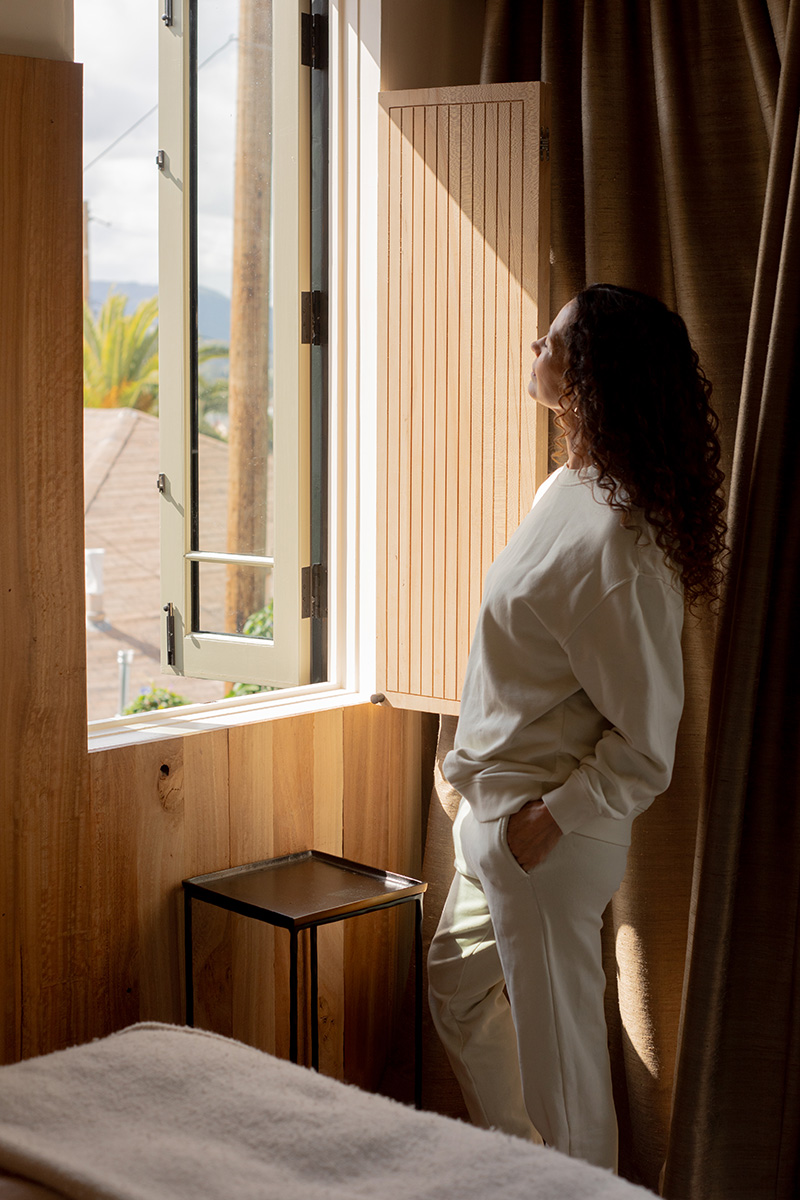
Are Naps Actually Beneficial?
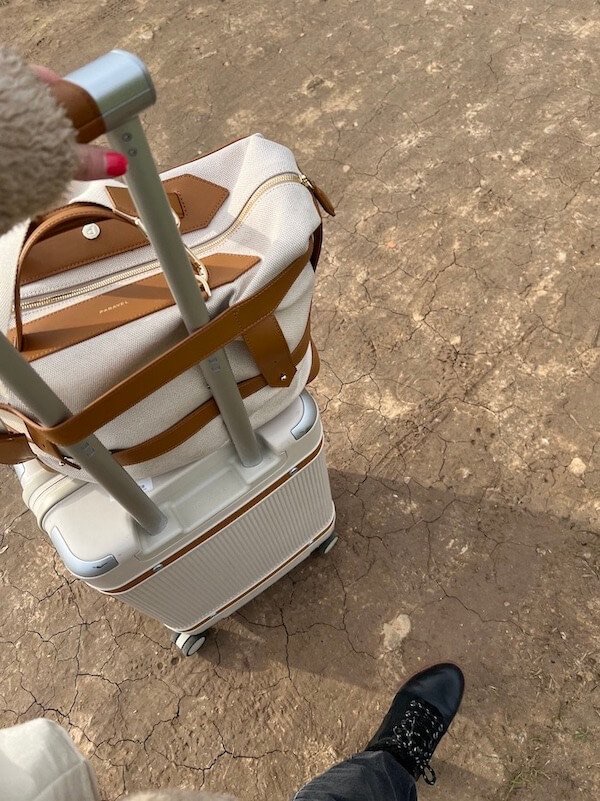
9 Sustainable Luggage Brands To Travel The World (2024)
Inicio » [Slow Travel] Qué es y 7 consejos imprescindibles para viajar sin prisas y recargar tus pilas
[Slow Travel] Qué es y 7 consejos imprescindibles para viajar sin prisas y recargar tus pilas
Equipo Inteligencia Viajera y END
Tabla de contenidos.
Si alguna vez has dicho o escuchado la frase “¡Necesito unas vacaciones de mis vacaciones!” , entonces ha llegado el momento de que hablemos del Slow Travel.
Llevamos un ritmo de vida vertiginoso y frenético. Siempre vamos con prisa para llegar a algún sitio o completar alguna tarea.
El Slow Travel pretende mostrarnos una forma de viajar menos acelerada.
Dejar de correr de un punto a otro para cumplir con una ruta preestablecida, y disfrutar de verdad del lugar que estamos visitando.
Sin prisas, please .
Entonces… ¿qué es el Slow Travel y cómo puedes unirte a esta forma distinta de viajar?
¡Vamos con un poquito de historia!
El Slow Travel forma parte de una corriente más amplia llamada Movimiento Slow, que tuvo sus inicios en Europa allá por los 80.
Todo comenzó con el nacimiento del Slow Food, donde se defendía el valor de la cocina autóctona, con productos de la tierra y de manera relajada . Y al mismo tiempo, se oponían al sistema de Fast Food que perjudica al medio ambiente, la salud humana y el bienestar animal.
Como ves, los valores principales eran la tranquilidad y la sostenibilidad.
Vale, ¿y qué tiene que ver todo esto con el Slow Travel?
Pues bastante. Hoy vamos a hablar de todo ello en profundidad. De cómo el Slow Travel es bueno para ti, bueno para los lugares a los que visitas y bueno para el medio ambiente . En ese sentido, tiene mucho que ver con el ecoturismo .
De hecho, Antonio G y Cris llevan bastante tiempo defendiendo y practicando este tipo de turismo que tantas ventajas ofrece.
Por eso hoy vamos a explicarte los siguientes puntos clave para hacer Slow Travel:
- Concentra los objetivos del viaje.
- Pasea siempre que sea posible.
- La flexibilidad del viajero.
- La importancia del tiempo para relajarse.
- Disfruta del transporte terrestre.
- Menos fotos y más notas.
Pronto vamos a desgranar cada punto y verás como encajan todas las piezas del puzzle. Además, al final te regalamos un motivo extra por el cual deberías probar el Slow Travel…
Pero antes de meternos de lleno, tenemos que hablar de una patología que te puede fastidiar cualquier viaje: el FoMo.
¿No sabes lo que es? Sigue leyendo… 😉
Superar el FOMO es imprescindible para viajar en Slow Travel
¿Qué es esto del FOMO? Son las siglas de Fear Of Missing Out. Es decir, el miedo a perderse algo.
No es nada nuevo, pero las redes sociales le han pegado un buen empujón a este fenómeno que, demasiadas veces, nos impide disfrutar de la vida.
Piensa en las siguientes situaciones:
- Te vas de cena con los amigos.
- Asistes a una boda (y sobre todo al convite).
- Te encuentras en un concierto.
Seguro que no perderías la ocasión de hacer fotos para el recuerdo, ¿verdad? Eso está genial.
Pero demasiadas veces nos encontramos en un evento que deberíamos estar disfrutando, y nuestra atención se centra en hacer fotos o vídeos con la única intención de subirlas a las redes sociales.
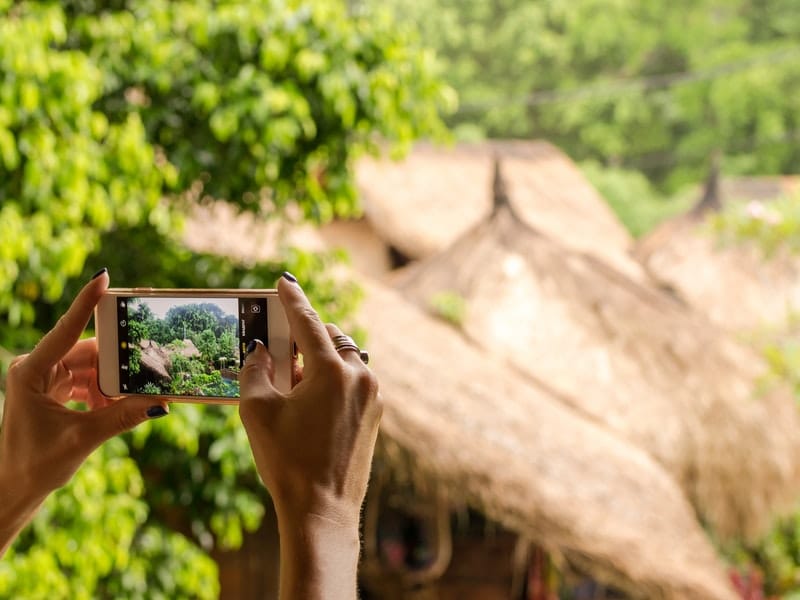
Siempre estamos viendo las publicaciones de otras personas en las que se ve cómo disfrutan de la vida, y sentimos que nos quedamos atrás si no hacemos lo mismo.
Como si nuestra vida fuera más insulsa y menos emocionante que la del resto por no tener un Instagram «maravilloso e impecable»…
Esto no es así, y tú también lo sabes.
El FOMO cuando viajamos
Este efecto se aplica de la misma manera cuando viajamos.
Sentimos que debemos visitarlo todo, vivirlo todo y experimentarlo todo.
Y además dar fe de ello posteando en redes sociales.
Tenemos miedo de no haber aprovechado al máximo nuestro viaje y para tratar de combatir esta ansiedad, preparamos una check list con un montón de sitios que debemos visitar.
- El monumento famoso con foto para el Insta.
- El restaurante del que todo el mundo habla y al que fue mi amigo y dijo que era increíble. ¿Cómo me lo voy a perder yo? Y de paso, foto para el Insta.
- El museo con la obra de un pintor vanguardista. No tengo tiempo para entender la técnica o su trasfondo, porque en una hora tengo que estar en mi siguiente destino. Pero ya tengo foto para el Insta.
Y la lista sigue y sigue.
Cuando nos queremos dar cuenta, hemos preparado una ruta de viaje que nos obliga a desayunar en 10 minutos, comer una hamburguesa en un local de comida rápida y llegar a las 11 al hotel con un cansancio insoportable.
Y lo mismo al día siguiente.
¿Te suena? Casi seguro que sí.
Para disfrutar del Slow Travel debemos deshacernos en la medida de lo posible del efecto FOMO, pero curiosamente, esta forma de viajar es una manera estupenda de ir superando este problema.
Vas a ver cómo en la siguiente parte del post.
Los 7 consejos para hacer Slow Travel y que de verdad puedas sentir sus beneficios
Si aplicas los siguientes puntos en tu próximo viaje, verás como vuelves con el cuerpo más descansado y la mente más despejada.
Al fin y al cabo, las vacaciones y los viajes son para volver con las pilas cargadas, y no al contrario . Por cierto, recuerda que el Slow Travel puede funcionar tanto en los destinos más clásicos como en destinos menos menos típicos .
1. Concentra los objetivos de tu Slow Travel
No pretendas verlo todo.
A veces esto casi parece una competición por ver quién ha visitado más lugares.
Es mejor centrarse en un área en concreto y visitarla con calma, que intentar cubrir un país entero en unos pocos días.
Es cierto que no verás tantas cosas, pero no se puede tener todo en esta vida.
Sin embargo, disfrutarás más y mejor de lo que este nuevo lugar tiene que ofrecerte . Uno de los fundamentos de esta filosofía viajera es sentir el lugar en el que estás.
Si vas con prisas para coger el próximo tren o vuelo, no tendrás tiempo de apreciar el lugar que estás visitando. Viajar sintiendo implica conocer el lugar, ver a sus gentes, observar su forma de hablar, de moverse y de vivir.
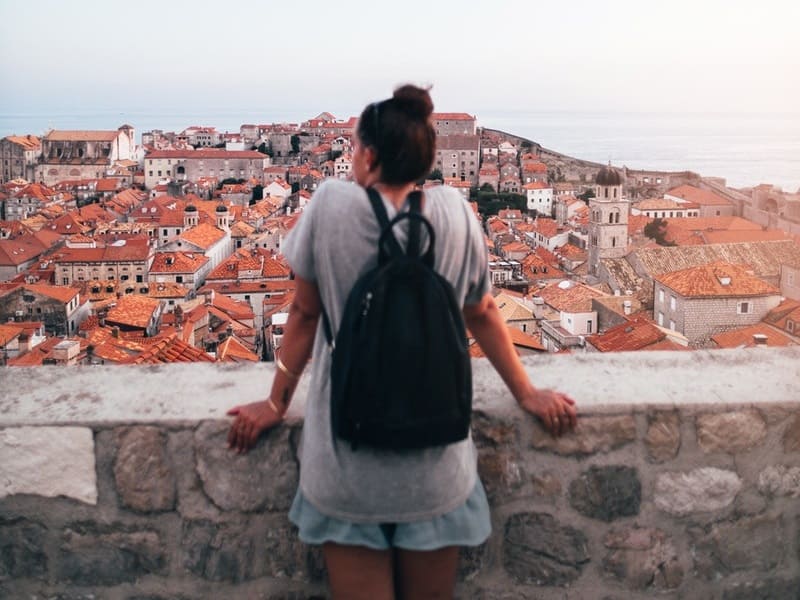
Aunque sea durante unos días, pasar a formar parte de ese lugar y tratar de mimetizarte con el viaje sin el agobio que produce sentir que estás llegando tarde a alguna parte.
Y como podrás imaginar, no puedes disfrutar de algo así cuando en tu mente solo está el próximo sitio que debes tachar de tu checklist.
2. Pasea siempre que sea posible
Este punto está muy relacionado con el anterior. Y puede parecer un poco contradictorio, porque en este artículo estamos hablando de volver con el cuerpo descansado.
Y no es ningún secreto que aunque una buena caminata sienta genial, puede dejarte el cuerpo para estar durmiendo 2 días seguidos. Especialmente si no estás acostumbrados.
Pero no tiene nada que ver caminar con prisa por un aeropuerto hasta la puerta de embarque, que pasear tranquilamente por un lugar bonito . Y a esto último es a lo que nos referimos.
Dado que normalmente buscamos exprimir el tiempo al máximo, buscamos un taxi para ir del punto A al punto B de la ciudad lo más rápido posible.
Cuando practicas slow travel, deberías ahorrarte esto.
No hay mejor manera de vivir y sentir una ciudad que paseando por sus calles.
Caminar observando sus locales, sus edificios y personas. Disfrutar del aroma que sale de sus restaurantes y escuchar el tono y la musicalidad de la lengua que hablan sus habitantes.
Viajar en transporte público te ahorra tiempo, sin duda, pero dentro de un taxi o del vagón de un metro difícilmente vas a poder apreciar la esencia de un lugar que estás visitando.
Además de todo ello, y como te decíamos al principio, caminar no solo será bueno para ti. También estarás fomentando un turismo más sostenible medioambientalmente al hacer menor uso de taxis, autobuses y metros.
¡Todo el mundo gana!
3. La flexibilidad del viajero Slow Travel
¿Flexibilidad? ¿Debo ser maestra de yoga para hacer Slow Travel?
No, no nos referimos a esa clase de flexibilidad. 😅
Alguien que viaja en modo Slow Travel tiene que ser flexible y adaptable a los posibles cambios que puedan surgir durante el viaje.
Como te decíamos en el primer punto, hacerse una checklist de obligatorio cumplimiento solo te va a generar estrés y ansiedad.
Puede que haya uno o dos puntos que sí o sí te apetezca visitar, y eso está bien. Pero el resto de visitas y aventuras deberían venir de manera natural.
Pregunta a la gente local por los mejores sitios para comer o cenar. Que te indiquen dónde se consiguen las mejores vistas o cuál es el monumento que consideran más bonito.
Te sorprenderá ver la cantidad de lugares curiosos que descubres, que de otra manera habría sido imposible.

Lo más seguro es que no hables el idioma del país en el que estás, por eso te recomendamos que lleves siempre un mapa contigo. Sí, uno de papel, de los de toda la vida. ¡A la porra el Google Maps!
Antes de iniciar tu viaje, prepara una lista de preguntas en el idioma del país que vayas a visitar que te sirvan para llegar a tus destinos, por ejemplo:
- ¿Dónde se come bien aquí?
- ¿Qué monumento me recomienda ver?
- ¿Hay algún parque/bosque/lago/estanque/jardín bonito cerca?
Y sobre todo:
- ¿Podría indicármelo en el mapa?
Tener un punto señalado en ese mapa te ayudará a encontrar el destino que estás buscando.
Te asombrará descubrir lo amable que es la gente local y lo dispuestos que suelen estar a orientarte y ofrecerte sus consejos. ¡Especialmente si ven que te has currado el detalle de prepararte las preguntas en su idioma aunque no lo domines!
4. Tómate tu tiempo para relajarte
Si te cansas, para. Así de simple.
Slow Travel no significa que te quedes quieta o quieto sin moverte. Andarás, claro que andarás. Y sin duda alguna, llegará un momento en que se cansen tus piernas cuando lleves unas horas caminando de aquí para allá.
En un viaje normal, tratas de hacer a un lado este cansancio y seguir el ritmo, porque si no, no llegas a todo lo que debes ver. Ya descansarás en el hotel.
Cuando haces Slow Travel, aprendes incluso a disfrutar de este cansancio.
Cuando te sientas así, encuentra un lugar que te agrade. Que tenga sombra y aire fresco si hace calor, o que esté cobijado y calentito si hace frío.
Y descansa, relájate. Hidrátate (muy importante esto) y come algo mientras te sientas aunque sea en el suelo.
Concédete el tiempo que necesites para recuperar fuerzas y cuando sientas que estás listo/a, entonces continúa tu aventura.
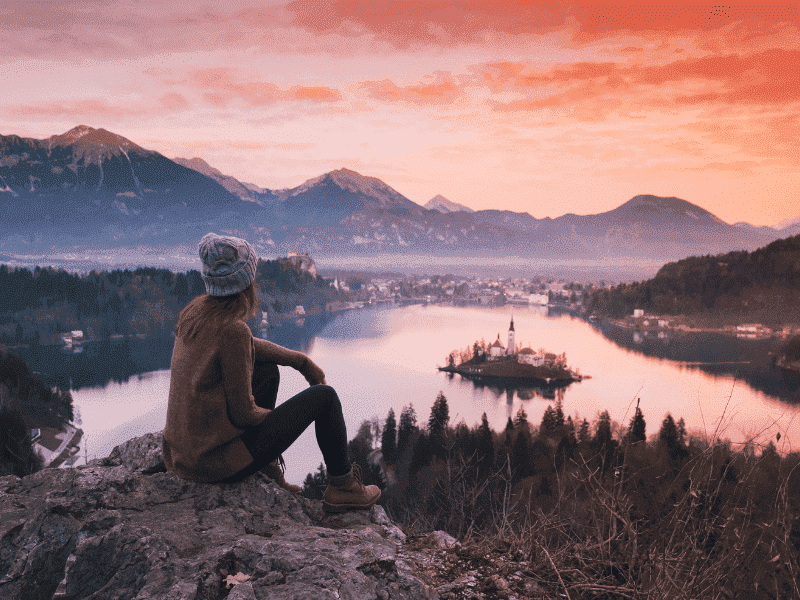
Estos pequeños descansos permiten que el cuerpo recupere fuerzas y pueda continuar el ritmo sin sufrir una fatiga excesiva después de la caminata.
Eso sí, recuerda no estar parado o parada demasiado tiempo, porque si no tu cuerpo se enfriará y te costará retomar la ruta.
5. Adáptate al horario local
Este punto es importante.
A menudo cuando viajamos por unos pocos días, seguimos funcionando con el mismo ritmo que en nuestro país de origen.
La gente de la Europa mediterránea en general y los españoles en particular estamos acostumbrados a cenar realmente tarde. Suele ser habitual para nosotros cenar entre las 9 y las 11 de la noche.
Y eso está muy lejos de ser algo común en el resto del mundo.
Siendo así, puede que te haya ocurrido alguna vez lo siguiente:
Terminas tu famosa checklist del día con las piernas agotadas y el estómago rugiendo de hambre. Es hora de buscar un buen lugar donde puedas cenar y recuperar fuerzas.
Entonces compruebas con resignación que la mayoría de lugares de restauración ya han cerrado su cocina y no hay ningún sitio donde puedas pedir algo de comer.
Y así, acabas en algún McDonald’s o similar, que es lo único que está abierto a esas horas.
No es que sea algo desastroso, no nos malinterpretes.
Pero si te adaptas al horario local, tendrás la oportunidad de sentarte a disfrutar de los deliciosos platos de comida autóctona en restaurantes locales.
Nosotros somos de la opinión de que mediante la gastronomía de un lugar se aprende mucha cultura.
Y de una manera indirecta, estás ayudando no sólo al comercio local sino también al medio ambiente.
Los productos que utilizan los restaurantes locales tienen una procedencia más cercana y suelen requerir menos gasto energético en cuanto a transporte y gestión.
¿Recuerdas que al principio te hablábamos del Slow Food?
Pues aquí es donde se junta con el Slow Travel.
6. Disfruta del transporte terrestre al hacer Slow Travel
Cuando pensamos en viajar a otro país, el medio de transporte que nos viene a la mente de manera inmediata es el avión, sin duda.
Es rápido y seguro. Y en algunas ocasiones, es sencillamente la única manera de llegar a algún destino.
Pero quizá te sorprenda saber que los viajeros Slow suelen utilizar el tren y los autobuses siempre que les es posible.

Recordemos que el Slow Travel tiene como gran objetivo descansar cuerpo y mente, y seamos honestos, ¿hay algo más estresante que el proceso de tomar aviones? Especialmente si hablamos de vuelos con escalas.
Viajar en tren te llevará más tiempo, pero generalmente te reportará menos estrés . Y eso es justamente lo que buscamos.
- No necesitas estar entre 1 y 2 horas antes de que parta el tren.
- No tienes que preocuparte por el peso de tus maletas .
- Suele ser más económico que el avión.
- Está muchísimo menos limitado por las condiciones meteorológicas por lo que suelen cancelarse menos viajes.
- Los asientos por norma general son más anchos y espaciosos.
- A diferencia de los aeropuertos, las estaciones de tren suelen estar en la propia ciudad.
- Mientras viajas en tren puedes ver el terreno, los campos y la orografía, lo cual es ideal para tomar fotos.
- Además, viajar en tren es más ecológico . 😉
Podríamos seguir, pero seguro que ves por dónde vamos. Y con ese punto de las fotos nos vamos a ir al siguiente consejo.
7. Menos fotos y más notas
Vale, este consejo puede que te descoloque mucho.
En un momento de la vida en el que le hacemos fotos incluso al ramen que estamos a punto de comer, la mera proposición de de jar a un lado la cámara del móvil parece poco menos que una locura.
Pero te recomendamos que lo pruebes. No es necesario dejar por completo de hacer fotos, por supuesto. Pero hay una opinión generalizada de que los viajes que más se disfrutan, son aquellos en los que se han hecho menos fotos.
¿El motivo?
Queremos siempre la foto perfecta, el encuadre perfecto, el color perfecto.
Nos preocupa más inmortalizar en una foto ese atardecer increíble que verlo con nuestros propios ojos. Deja de ver ese atardecer a través del objetivo y disfrútalo en tiempo real.

En lugar de las fotos, te recomendamos otra manera de recordar tus viajes: con un cuaderno o libreta.
Vive ese momento, disfrútalo, concéntrate en lo que te está haciendo sentir. Y cuando termine, anótalo.
Escribe lo que has visto o hecho, anota cómo te has sentido y lo que ha pasado por tu mente. Esta parte tiene mucho que ver con el mindfulness y vivir el presente con atención plena.
Complementa en esta libreta con las entradas de los lugares que has visitado, o con algún ticket de algún restaurante que te haya hecho disfrutar.
Apunta todo lo que te ha hecho disfrutar y conserva ese cuaderno. Cuando pasen los años y lo leas de nuevo, fliparás al descubrir que recuerdas ese viaje Slow Travel con más nitidez que si vieras una foto .
No es que no hagas fotos, ¡claro que no! Sino que no te obsesiones con ello tanto como para dejar de vivir otras experiencias.
Slow Travel como remedio contra la depresión postvacacional
Llega el momento de volver de las vacaciones. Entras en casa muerta o muerto de cansancio. Has visto un montón de sitios, pero ahora mismo sientes que necesitas otra semana para recuperarte de la paliza que te has pegado .
Y entonces te acuerdas de que mañana empieza de nuevo tu rutina y tienes que madrugar para ir a trabajar.
¡Pero si estás aún más cansado/a que cuando te fuiste!
¿Quién no se deprimiría ante esta perspectiva?
Déjanos un comentario aquí abajo si alguna vez te has visto en esta situación. Si es así, te recomendamos encarecidamente que pruebes a hacer un Slow Travel.
No nos engañemos, la depresión postvacacional es algo de lo que muy poca gente se libra. Sin embargo, existe una gran diferencia entre superarla a los 2 días de retomar la vida laboral, y superarla a los 15 días (o no hacerlo en absoluto y acabar pronto con el Síndrome de Burnout ).
Volver al trabajo con las pilas cargadas, el cuerpo descansado y la mente despejada es imprescindible para seguir funcionando correctamente y ante todo, ser feliz con lo que haces.
Y nosotros lo hemos conseguido, entre otras cosas, viajando Slow.
Destinos perfectos para disfrutar del Slow Travel
Como te decíamos al principio, cualquier destino es adecuado para hacer Slow Travel. Sin embargo, aquí vamos a dejarte una lista con 5 destinos que pensamos que pueden ser ideales para viajar despacio y disfrutar al máximo.
¡Comenzamos!
1. El Camino de Santiago
No podíamos empezar de otra manera. El Camino de Santiago esconde innumerables lugares que descubrir.
Es un trayecto perfecto para poner en práctica todos los puntos que recomienda el Slow Travel.
Las vistas que ofrece, los senderos para caminar sin prisa, las oportunidades de hablar con otras personas y dejarse guiar…
Si quieres realizar tu primer Slow Travel y tienes la posibilidad, el Camino de Santiago podría ser una muy buena opción.
2. Guatemala
Tranquilas playas caribeñas en la costa del Atlántico y rugientes olas en la costa del Pacífico. Selvas exuberantes, lagos inmensos. Y volcanes, enormes volcanes.
Toda Guatemala invita a la observación pausada. Cada detalle de este país te permite pararte a disfrutar del momento y sentir con intensidad.

Imagina lo que debe ser caminar entre las ruinas Mayas y conectar, sin prisa, con el pasado.
Viajar por Escocia nos parece otro acierto para hacer Slow Travel.

Es una tierra llena de lugares mágicos, cargada de historia y folklore. Aquí no tendrás problemas en encontrar lugares que visitar y paisajes asombrosos que contemplar con calma.
4. Tailandia
Todo el país es una elección fantástica, pero Chiang Mai y Pai en concreto, en el norte de Tailandia son destinos asombrosos para practicar Slow Travel.

En este destino podrás disfrutar del viaje en tren desde Bangkok y, como te decíamos, disfrutar de esa ruta terrestre llena de campos.
También nos consta de que es un lugar perfecto para disfrutar de la cocina local y probar nuevos y deliciosos sabores.
5. Islandia
En Islandia encontrarás un paraje de contrastes. Glaciares y volcanes. Una tierra de hielo y de fuego que te ofrece vistas únicas.
En sus tierras podrás descubrir playas de arena volcánica, negra como la noche, cascadas inmensas y preciosos glaciares.

La tranquilidad que reina en sus parajes te permitirá olvidarte sin problemas del reloj y de las prisas cotidianas.
Slow Travel después de la pandemia
No te pillará por sorpresa, pero el Coronavirus ha cambiado por completo el concepto que tenemos de viajar.
Los más viajeros hemos sufrido un duro revés con todo este proceso, y aún permanecen cerrados muchos destinos de viaje.
Precisamente por esto el Slow Travel ha cobrado una importancia enorme en los últimos tiempos. Aunque te hemos presentado unos destinos geniales para viajar lento, la verdad es que puedes practicarlo dentro de tus propias fronteras .
El Slow Travel se ha convertido en tendencia al ofrecer unas ventajas interesantes en tiempos postpandemia:
- Los viajes son en grupos pequeños, por lo que no presentan tantos problemas a la hora de reservar en restaurantes y hoteles.
- Funcionan muy bien destinos dentro de tus fronteras y no es necesario viajar a otros países.
- Al ser zonas poco masificadas, te encuentras con menos turistas y viajeros, reduciendo el riesgo del virus.
- Se trata de viajes más baratos, algo muy conveniente para muchas personas que han sufrido algún revés económico con las restricciones.
Puede que la pandemia haya cambiado muchas cosas, pero no ha minado nuestras ganas de conocer nuevos lugares y culturas . Y el Slow Travel es una manera genial de retomar nuestra pasión.
¡Esperamos que hayas disfrutado de este post y te haya hecho ver los viajes desde otro punto de vista!
¿Y tú? ¿Has probado el Slow Travel? ¡Cuéntanoslo en los comentarios! ¡Te esperamos!
Comparte esta publicación:
Mejores recursos:
¿Tienes problemas de tiempo y dinero que te impiden viajar más ?
Aenean risus. Vestibulum scelerisque placerat sem. In eget sapien vitae massa rhoncus lacinia. Nullam at leo nec metus aliquam semper.
Déjame tu nombre y tu correo y te lo cuento

Antonio G Creador de Inteligencia Viajera y fundador de la Escuela Nómada Digital
6 comentarios
Sin duda me animaste a vivir la experiencia de viajar sin prisas y sobre todo ir a escocia
¡Claro que sí Noe!
Escocia es un país pequeño que anima mucho al «Slow Travel» para poder impregnarse de sus maravillosos paisajes verdes, ¡te animamos a que lo conozcas! Échale un vistazo al post del blog sobre este destino y seguro que no te podrás resistir.
Si lo haces, te recomendamos que intentes viajar en agosto para disfrutar de los festivales al aire libre de su capital, Edimburgo; aunque tendrás que reservar con tiempo, porque estos festivales callejeros atraen a muchos curiosos 😉
No te olvides de contarnos tu experiencia y tus descubrimientos cuando vayas, ¡nos encantará leerte! 🙂
Vicky – Equipo de Inteligencia Viajera
Me encantó me gustaría conocer más y viajar con ud
¡Hola Silvia!
Para conocer más solo tienes que empezar a moverte; ya ves que no hace falta irse lejos o hacer tours a velocidad imposible, sino disfrutar de cada paso que se da sin pensar en lo que se está dejando de ver.
Si además te gusta viajar y conocer gente, entonces no te pierdas este post sobre Couchsurfing donde te damos muchas tips para que no tengas excusa ninguna para no empezar a viajar 😉
¡No te olvides de contarnos tus experiencias!
Hola me encantaría viajar y conocer,¿se viaja en grupo? O solo?
¡Hola Margarita!
Es genial que tengas ganas de viajar y conocer otras cosas, si aún no lo has probado ¡tienes que hacerlo!
Viajar no solo te reporta beneficios , sino que además de cada viaje puedes llevarte aprendizajes .
Y lo mejor es que hay montones de alternativas, ¡puedes viajar como prefieras! En este blog encontrarás muchísima información para que puedas decidirte: tanto si prefieres viajar sola como en pareja , si lo tuyo es el turismo responsable o solidario , si tu presupuesto es bajo o si prefieres ir a tu aire , ¡hasta si tienes niños ! Tienes de todo para que dejes las excusas a un lado y empieces a preparar tu viaje 🙂
Y si no sabes a dónde ir, también tenemos información de montones de destinos, y algunas recomendaciones 😉
¡Que disfrutes de la experiencia! Y no te olvides de contarnos a la vuelta, nos encantará leerte.
Deja una respuesta Cancelar la respuesta
Tu dirección de correo electrónico no será publicada. Los campos obligatorios están marcados con *
Comentario *
Correo electrónico *
Guarda mi nombre, correo electrónico y web en este navegador para la próxima vez que comente.
Current ye@r *
Leave this field empty
¿Tienes problemas de tiempo y dinero que te impiden viajar más?
+ 64K seguidores en instagram
+ 19.3K seguidores en youtube
+2.2K seguidores en tiktok
+14K seguidores en telegram
+7K de seguidores en X
Guía para viajar más barato y descuentos de viajes
Únete a nuestra comunidad de viajeros inteligentes y llévate de regalo un guía para aprender a hacer tu viaje más económico y descuentos que podrás usar en tus viajes.
Cerrar aquí .
Responsable: Nomad Wisdom SLU – Finalidad: envío de mis publicaciones así como correos comerciales. La Legitimación; es gracias a tu consentimiento. Destinatarios: tus datos se encuentran alojados en mis plataformas de email marketing InfusionSoft suscrita al PrivacyShield. Podrás ejercer Tus Derechos de Acceso, Rectificación, Limitación o Suprimir tus datos Encontrará más información en la política de privacidad
¿Tienes problemas de tiempo y dinero que te impiden viajar tanto como deseas?
Apúntate a mi masterclass gratuita.

- Política de privacidad
- Cookies estrictamente necesarias
- Cookies de terceros
- Política de cookies
Utilizamos cookies propias y de terceros para fines analíticos y para mostrarte publicidad personalizada en base a un perfil elaborado a partir de tus hábitos de navegación (por ejemplo, páginas visitadas).
Las cookies estrictamente necesarias tiene que activarse siempre para que podamos guardar tus preferencias de ajustes de cookies.
Si desactivas esta cookie no podremos guardar tus preferencias. Esto significa que cada vez que visites esta web tendrás que activar o desactivar las cookies de nuevo.
Esta web utiliza Google Analytics, Google Tag Manager, para recopilar información anónima tal como el número de visitantes del sitio, o las páginas más populares.
Dejar esta cookie activa nos permite mejorar nuestra web.
<p>Si desactivas esta cookie no podremos guardar tus preferencias. Esto significa que cada vez que visites esta web tendrás que activar o desactivar las cookies de nuevo.</p>
Más información sobre nuestra política de cookies: Política de cookies

What is Slow Travel? Benefits and How To Be a Slow Traveller
LAST UPDATED: 28th February 2024
We hear people say slow travel is better than fast tourism, but do you know what is slow travel?
Slow tourism has gained popularity due to its alignment with the changing values and priorities of modern travellers. Embarking on an immersive travel experience offers a more sustainable, flexible, and mindful approach to exploring the world.
So, let’s learn about authentic travel, the benefits of slow travel, and, practical tips on travelling slower.
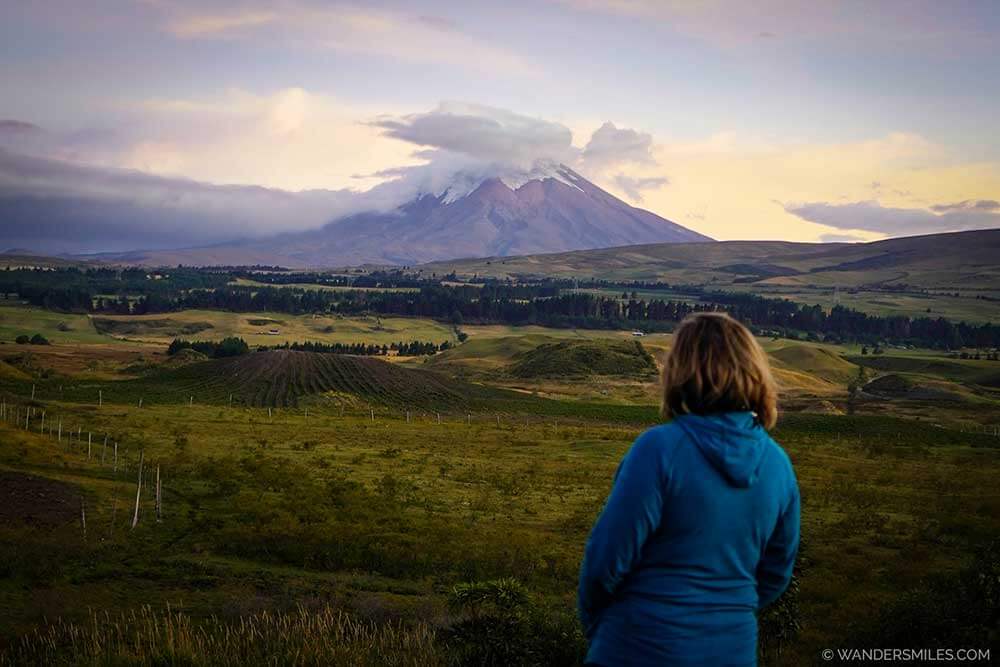
What is slow travel?
Slow travel is a deliberate, unhurried approach to exploring destinations, emphasising meaningful experiences, and cultural immersion.
Travelers stay longer in one place, support local economies , and seek sustainable, mindful journeys that promote a deeper connection with people and environments, in contrast to traditional, fast-paced tourism.
Why slow tourism is becoming more popular?
Slow tourism has seen a surge in popularity for several reasons, including:
Rise since COVID-19
The COVID-19 pandemic prompted a re-evaluation of travel practices. Travellers, concerned about the safety and eager to avoid crowded places, turned to slower, less hectic tourism. Many preferred remote and less touristy destinations, fostering the growth of slow tourism.
More people working remotely
The increase in remote work has freed people from the constraints of traditional office jobs, allowing for greater flexibility in travel. Slow tourism complements this lifestyle, enabling travellers to work while exploring new places at a more relaxed pace.
Increased interest in sustainable living
As people become more environmentally conscious, they are drawn to travel options that align with sustainable living principles. Slow tourism often involves eco-friendly practices, supporting local communities, and reducing the carbon footprint.
Self-care and well-being
The pandemic underscored the importance of mental and physical well-being. Slow tourism provides opportunities for relaxation, mindfulness, and disconnecting from the stresses of daily life, contributing to personal self-care and rejuvenation.
What are the benefits of slow travel?
Slow travel reduces carbon footprint.
Staying longer in one place reduces the need for frequent travel , and supporting local businesses promotes sustainable practices. This approach aligns with environmental conservation efforts, mitigating the impact of traditional travel on the planet.
Fast travel with short-haul flights causes more emissions than public transport . Travelling slower allows time to prioritise more eco-friendly transportation options , such as trains or bicycles. For travellers who do not have the luxury of slow travel, it is still worth taking on board the more responsible and eco-friendly ways to travel .
Slow travel saves money
Many hotels or guest houses will offer better deals on accommodation for longer stays to guarantee their income, and to compete with the AirBnB market.
Not being in a hurry to get from A to B will help cut your transport costs . Having the luxury of hanging around until the cheap flight comes up or the next public bus goes really does help the wallet.
Slow travel helps disconnect
Slow tourism enables travellers to cut off from their busy lifestyles . Fast travel can be stressful in itself, rushing out of the office to your destination, squeezing in some downtime, and heading back home. Slow travel helps us break free from the daily grind.
Deep travel gives us time to truly connect with other travellers . Meeting new like-minded people is part of the adventure, getting to know their story, and even planning part of your journey together if you are heading in the same direction.
Slow travel helps travellers to cut off from digital overload . Whilst it is easy to get targeted with ‘bad news’ on online media, I found it good for the soul to remove myself from the daily negative news on TV for a longer period.
Slow travel helps burnout. The increase in wellness retreats and digital detox experiences demonstrates how we are crying out to disconnect to give our minds and bodies a chance to heal and reenergise. Whether you decide to spend time on a retreat or just time out of normal life, this truly helps with general weariness.
Slow travel alleviates travel fatigue by emphasising leisurely exploration over rushed itineraries. Travelers have time for rest, reflection, and acclimatisation, reducing the stress and exhaustion associated with rapid travel. The relaxed pace and mindful experiences of slow travel contribute to overall well-being and a more fulfilling travel experience.

Slow travel is more immersive
Slow travel encourages engaging with the local community , fostering deeper cultural insights. Travelers learn about the lives of residents, their traditions, and daily routines. Getting involved in cultural festivals allows for first-hand experiences of local customs, traditions, and celebrations, contributing to a richer and more immersive travel experience.
Learning the regional language during slow travel promotes cultural understanding and meaningful interactions. Many backpackers will start their Latino trip with time in a Spanish School or living with a host family as I did in the Galapagos.
Engaging in volunteering while slow traveling enhances the journey’s meaningfulness. It allows travelers to give back to the community they visit, contribute positively, and create lasting impacts. This hands-on involvement provides a deeper understanding of local needs, fosters connections, and adds purpose to the travel experience, making it even more enriching and rewarding.
Slow travel is adventurous
Time gives us to travel to off-the-beaten-path destinations much easier. Exploring the lesser-visited places where transport is limited, or primitive, such as heading into the Darien jungle in Panama, or being about to journey down the Colombian Amazon instead of day trips from Leticia . Getting away from the obvious places to visit which suffer from mass tourism, opens our eyes to new cultures and intrepid experiences.

Tips on how to be a slow travel ler
Stay longer in each place.
Extend your stay to immerse yourself in the culture of the destination. It’s hard to get the feel of a place when you are passing through.
Build in stop days. It is easy to get caught up in seeing ‘everything’. When creating your itinerary on your slow adventure, plan some down days to sit back, and avoid travel fatigue.
Be flexible
Overplanning can restrict opportunities that may arise along the way. There is always some random offer by a group of travellers that has a spare place for something exciting, or a festival you didn’t know was happening. Have a loose list of what you want to see in a destination but leave a bit of wiggle room for the unexpected.
Seek local recommendations
Don’t pre-book your trips with bigger online companies. Ask around when you arrive at a destination means the money is going directly to the families
Local people know the hidden gems to discover off-the-beaten-track authentic experiences. Make sure you ask more than one person too, each local will have different insider tips.
Eat like a local to get the best culinary delights possible. Find out where they eat, and what traditional dishes you should try.
Shop at local markets to support the community. In some countries such as Ecuador, locals would come down from the highlands with their home-grown produce. Ask to try their r egional fruits , and buy your favourites.
Buy local artisan products. Ask locally where the best market is to buy the ‘genuine’ handicrafts. For example, in San Cristobal de las Casas , I was made aware of which streets have imported cheaper products taking away from the real artisans of the community.
Stay at locally-owned guesthouses or homestays to foster cultural exchange and support local economies. I have stayed in many guesthouses on my travels that offer more authentic experiences with wonderful characters who know the area well.
Spread the spend
Explore lesser-visited areas to spread the economic impact whilst uncovering hidden gems.
Travel at off-peak times brings money to communities and allows you to stay longer as the cost per night will be more favourable.
Be informed of the transport options
Whilst slow travel means you are less concerned about time, it is best to familiarise yourself with the travel options, and factor in these considerations;
- If you have landed in a remote location, local buses or transport may only go on certain days .
- If you want a little comfort, sometimes shuttles can get booked up .
- Depending on your country, buses and local transport can often take longer so if you are booked for a tour or hotel in the next destination
- You may wish to avoid travelling at night for safety reasons so best to plan your route ahead of time.
Prepare for border crossings
Border crossing experiences can vary widely between countries and regions, so thorough research and preparation are crucial for a smooth and hassle-free transition from one country to another. Here are some essential steps to consider:
Research and Documentation: Understand the visa and entry requirements for both countries.
- Understand the visa and entry requirements for both countries. Ensure you have the necessary visas, passports, and any required permits.
- Check visa validity and make copies of important documents.
- Keep track of entry and exit stamps or documents provided by border officials for visa extension or exit.
- If driving, carry your vehicle’s registration, insurance, and any required permits.
- Check if vaccinations or health certificates are required for entry. Carry necessary medications and health insurance.
Currency and Money: Think about what you might need money for on each side.
- Exchange currency or carry enough local cash for border fees, transportation, and expenses upon entry.
- Change your currency to the local one for easier transactions on the other side. It’s worth chatting with other backpackers in the hostel who may want to sell some currency from their last country.
Transportation: Plan your route and transportation method, and consider the availability of local transport on the other side of the border. Ensure your vehicle meets local requirements if you’re driving.
Border Timings: Borders may have specific operating hours; confirm the opening and closing times and plan your arrival accordingly.
Communication: Have a working phone with local SIM cards or international roaming to stay connected in case of emergencies. I use Airalo for these situations to avoid me feeling vulnerable as a solo female traveller.
Local Language: Carry a phrasebook or language app to help with communication, as border officials may not always speak English.
Stay safe with slow travel
Ensure you have comprehensive travel insurance covering medical emergencies, trip interruption, and lost or stolen belongings. Here are my tried-and-tested travel insurance options.
- SafetyWing for Digital Nomads . Benefit from 24/7 assistance, comprehensive and medical cover including Covid-19. Buy insurance whilst you are travelling, with the option of global health insurance.
- Get 5% off your travel insurance with IATI . Discover a range of policies from basic to premium, and multi-country trips for up to 3 months. IATI will cover countries where the FCDO advises against all travel. All include 24/7 Emergency Travel, Crisis, and Medical Assistance services.
- Get 5% off your travel insurance with HeyMondo . Benefit from 24-hour medical assistance, 365 days a year with single, multi-trip, and long-stay insurance (up to 90 days), cover for COVID-19 and non-refundable expenses. The handy app makes this a simple process! They give a little back too by contributing to ‘Doctors Without Borders’.
PIN FOR YOUR SLOW TRAVEL ADVENTURE

Disclosure : This post contains affiliate links, which means I may receive a small commission if you click a link and purchase something that I’ve recommended. It comes at no cost to you. Thank you for your support.

I'm a content creator for She Wanders Miles ♡ Digital marketer, photographer, hiker, and nature lover ♡ Passion for slow, sustainable and responsible travel ♡ Join me in discovering our beautiful world across 7 continents.
Similar Posts

How to spend a morning in Amman | Jordan

How to visit Elephanta Cave Temples | Mumbai

Why we should visit Auschwitz-Birkenau | Poland

19 Amazing Things to do in Cartagena Colombia

Explore Samarkand | Heart of the Silk Road

Visit Guano from Riobamba Ecuador | What to Do + Eat
Absolutely 100% in agreement.
With each successive trip, my travel has become slower — and much more fulfilling and healing.
Totally agree. If you can afford the luxury of time to get to know a place better, slow travel becomes a more fulfilling experience.
Leave a Reply Cancel reply
Your email address will not be published. Required fields are marked *
The Art of Slow Travel: A Guide to Mindful Exploration With FlightHub
Plus: top travel destinations for 2024.
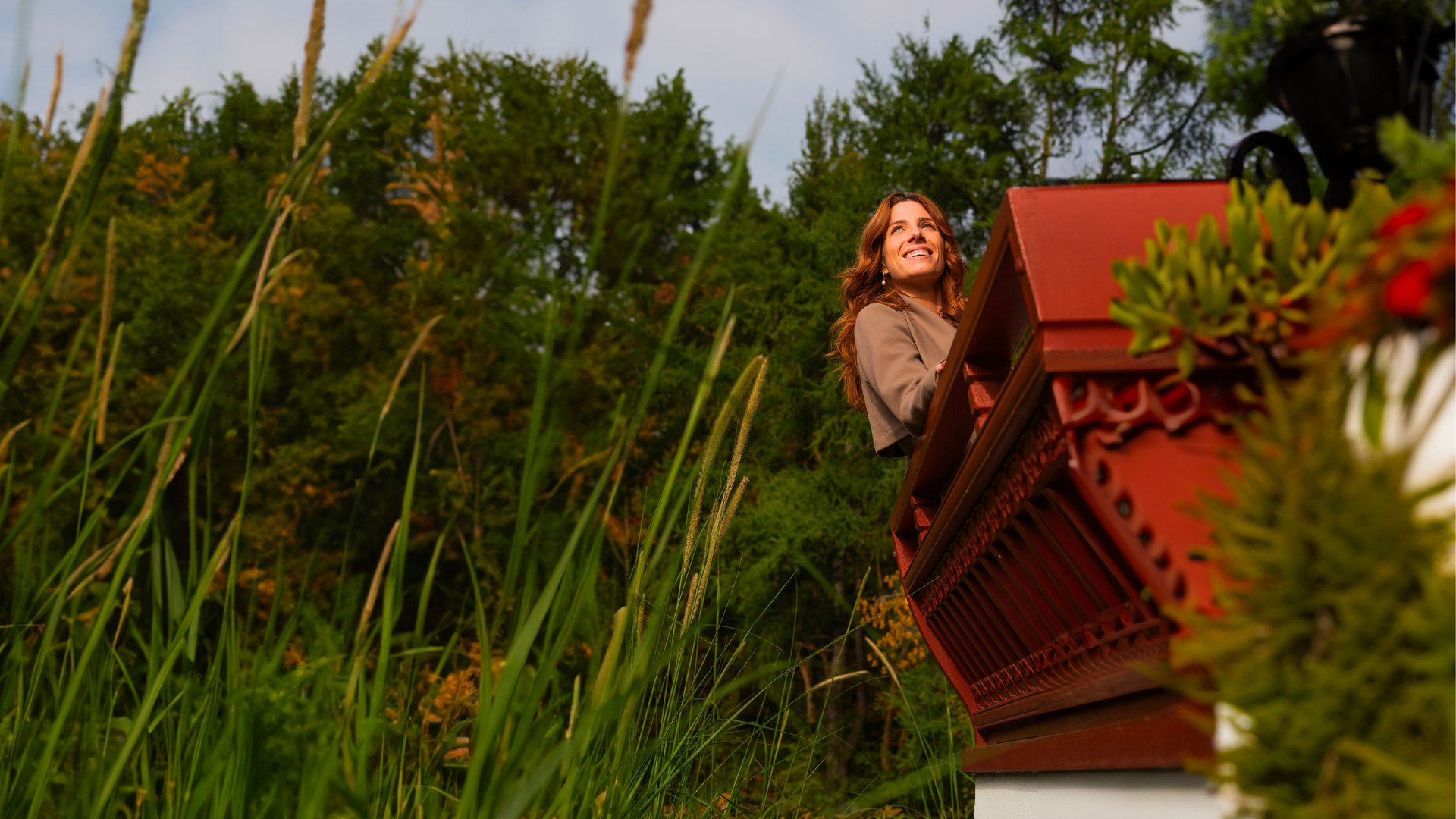
Created for FlightHub
In an increasingly fast-paced world where we’re all constantly on the go, planning a getaway where you can slow down and enjoy a more relaxed pace of life in a new destination can be a total game changer. That’s why slow travel is trending right now. Taking a more mindful approach to travel means you can take the time to engage with your destination on a much deeper level. FlightHub makes it easy to book meaningful travel experiences through customized, flexible arrangements and extended stays. That means you can kick back and fully immerse yourself in a new culture without worrying about the details.
What is slow travel?
Ultimately, it’s all about fostering a deeper appreciation for the places you visit, with an emphasis on connecting with local culture through people, food and music. Slow travel means taking in the educational and emotional impact of your destination while being present in the moment. It also encourages a more sustainable approach to travel, keeping the future of local communities and the environment in mind. This might sound unattainable, but FlightHub makes it affordable to visit a ton of memorable destinations that are perfect for more mindful experiences. Head to Peru this summer and book a local guide to hike the Inca Trail, a rugged two- to four-day mountain trek that offers unforgettable views of historic Machu Picchu. You won’t want to rush when you’re taking in some of the most magical sights in the world.
The benefits of slow travel
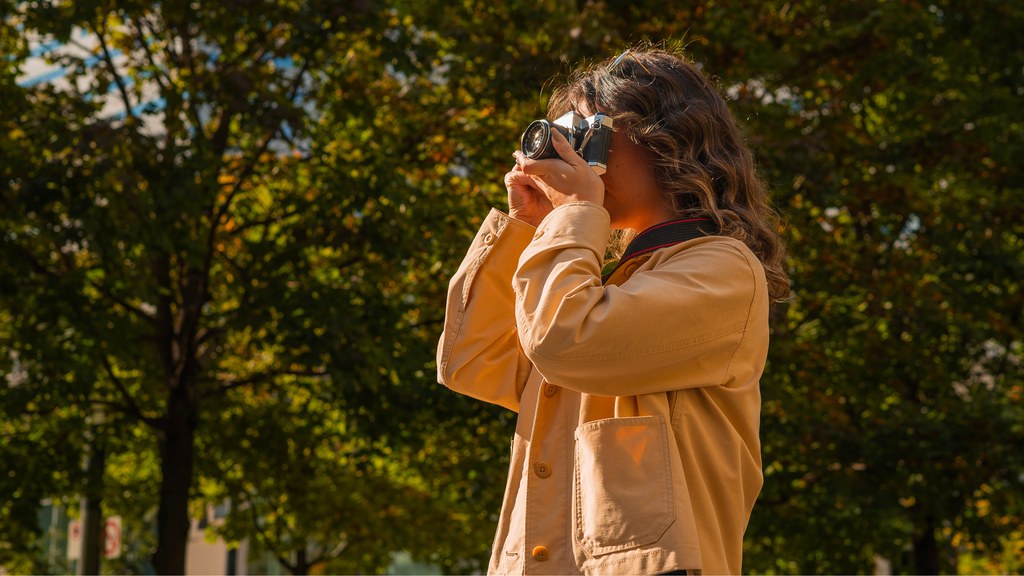
Taking the time to really connect with the place you’re visiting leads to a much better understanding of global cultures. Think about it: a breakfast buffet at a chain hotel is always nice, but a home-cooked meal at a beloved local restaurant that celebrates a region's traditions and flavours is much more memorable.
You can experience slow travel anywhere in the world, including your own country. For example, book a flight to Calgary through FlightHub and check out Heritage Park, Canada’s largest living history museum. This village from the 1860s is still operating, complete with a replica fur-trading post, horse ranch and small town centre. Immerse yourself in the old West through authentic dinners, brewing courses and canning workshops.
How to practise slow travel
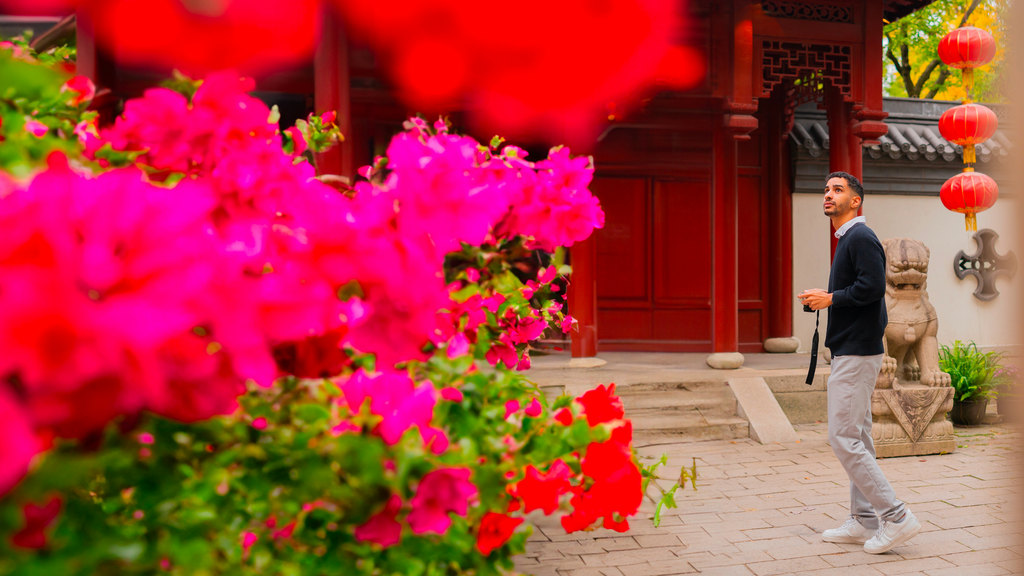
Give yourself lots of free time to wander, explore and enjoy meals at a relaxed pace. Using FlightHub 's intuitive My Trips tool makes it easy since you can access all your travel information in one spot. You can even make changes to your reservations or choose add-ons with just a click. Plus, FlightHub offers customer service 24-7 in case anything comes up that you need assistance with.
When it comes to making the most of slow travel, flexibility is key; if you can book more than a week, you’ll have plenty of time to take in all of the sights, sounds, smells and tastes. Or you might decide to extend your stay once you arrive. With FlightHub , you can easily extend your stay to make sure you enjoy a rich and profound travel experience. FlightHub also offers customizable itineraries and fun experiences, such as guided tours, at budget-friendly prices. Plus, you can set a fare alert for a desired slow-travel destination and get immediate notifications when prices drop, so you can finally take that dream trip to Naples and try every flavour of gelato possible. Pro tip: the best spots for pizza are the hole-in-the-wall joints with locals lined up.
Click here to learn more and book your next trip today.
Sign up to HELLO Daily! for the best royal, celebrity and lifestyle coverage
By entering your details, you are agreeing to HELLO! Magazine User Data Protection Policy . You can unsubscribe at any time. For more information, please click here .
- Travel Tips
- Travel guides
More Travel

Looking for a luxury stay in Thailand? The 5-star InterContinental Chiang Mai made my bucket list trip a dream come true
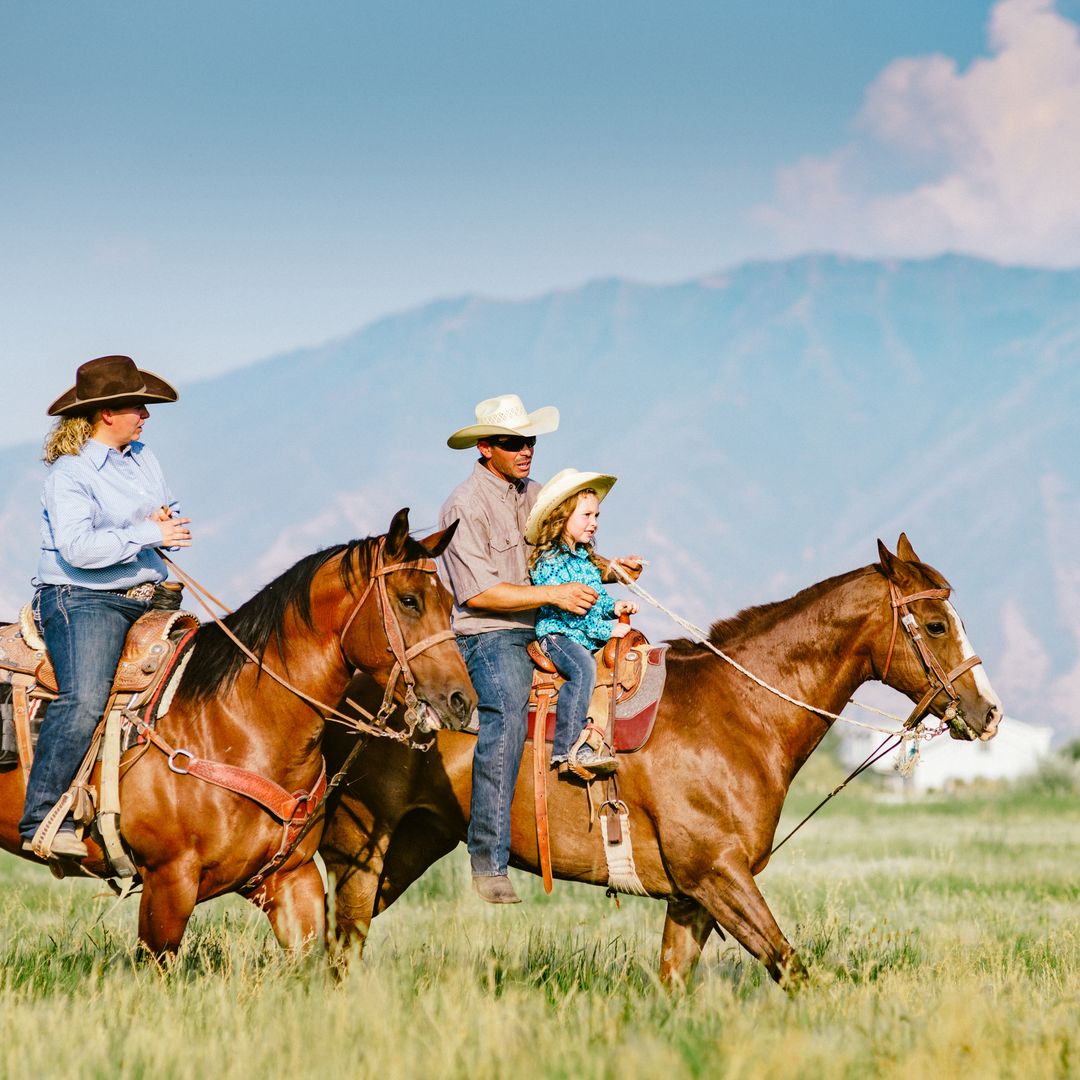
4 ways to embrace cowboy culture while travelling Texas
Created for Travel Texas

5 amazing outdoor adventures in Texas
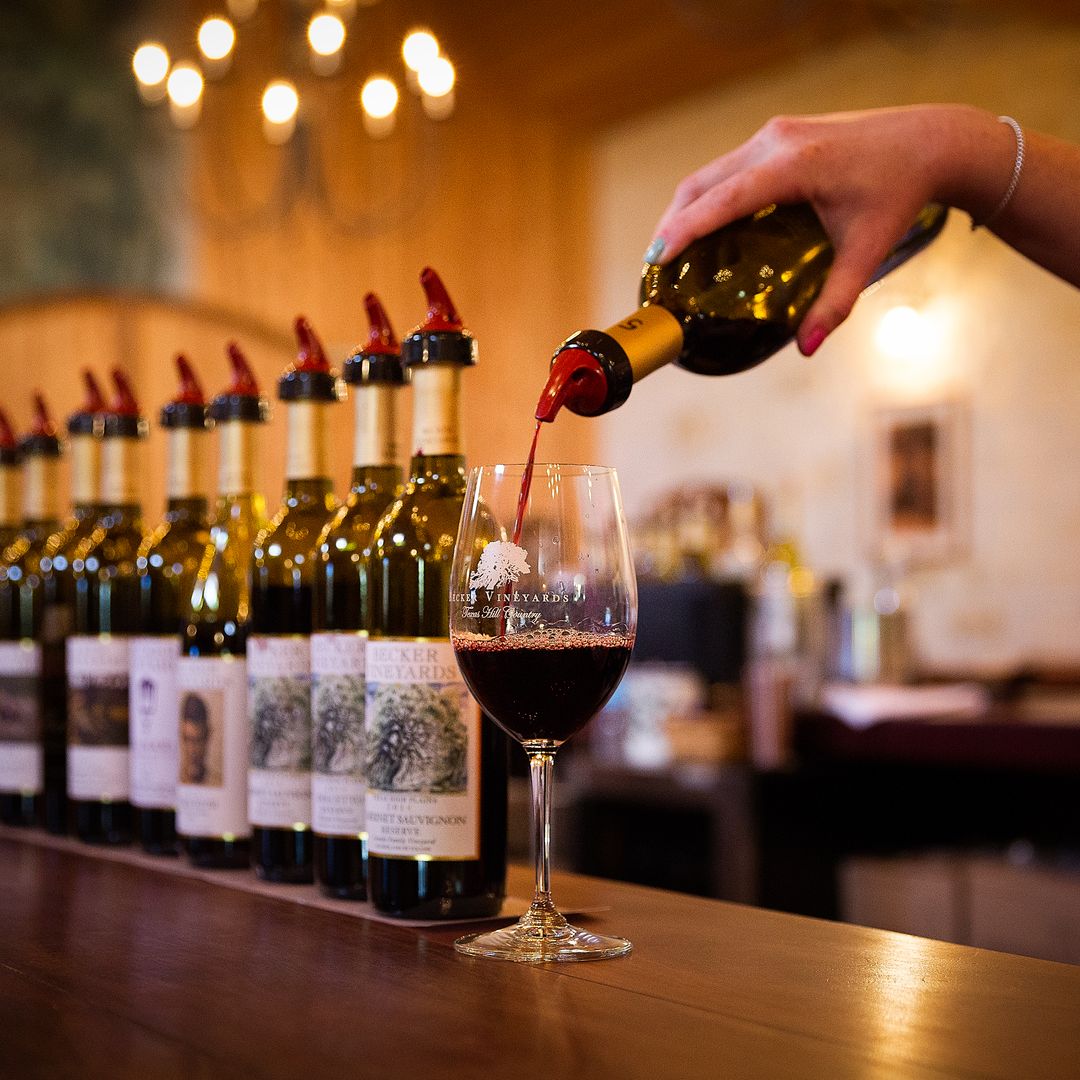
15 must-visit Texas restaurants

Visit the 7 unique regions of Texas
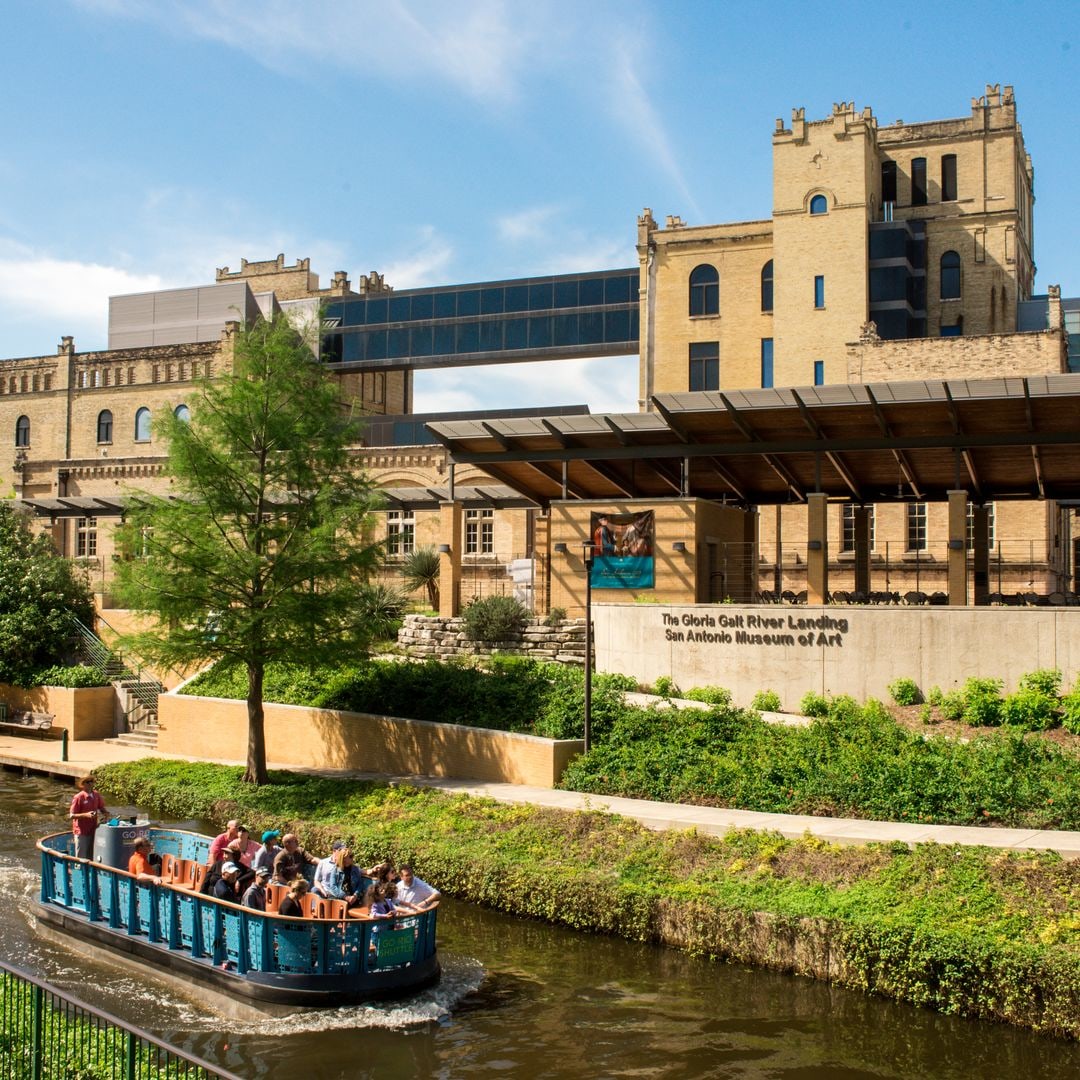
Explore Texas through art, culture and history
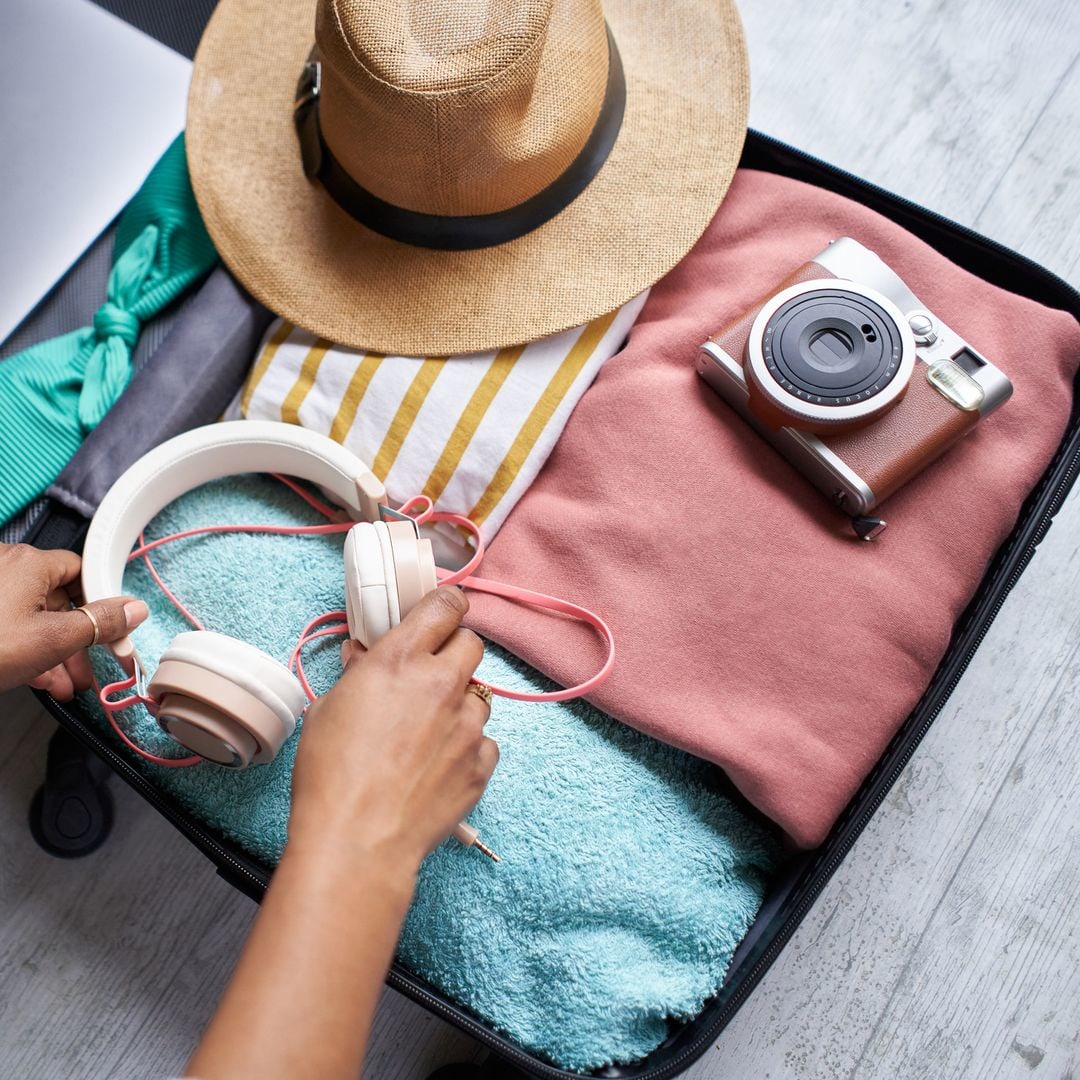
Best hand luggage 2024: These carry-on suitcases & bags make holiday travel so much easier
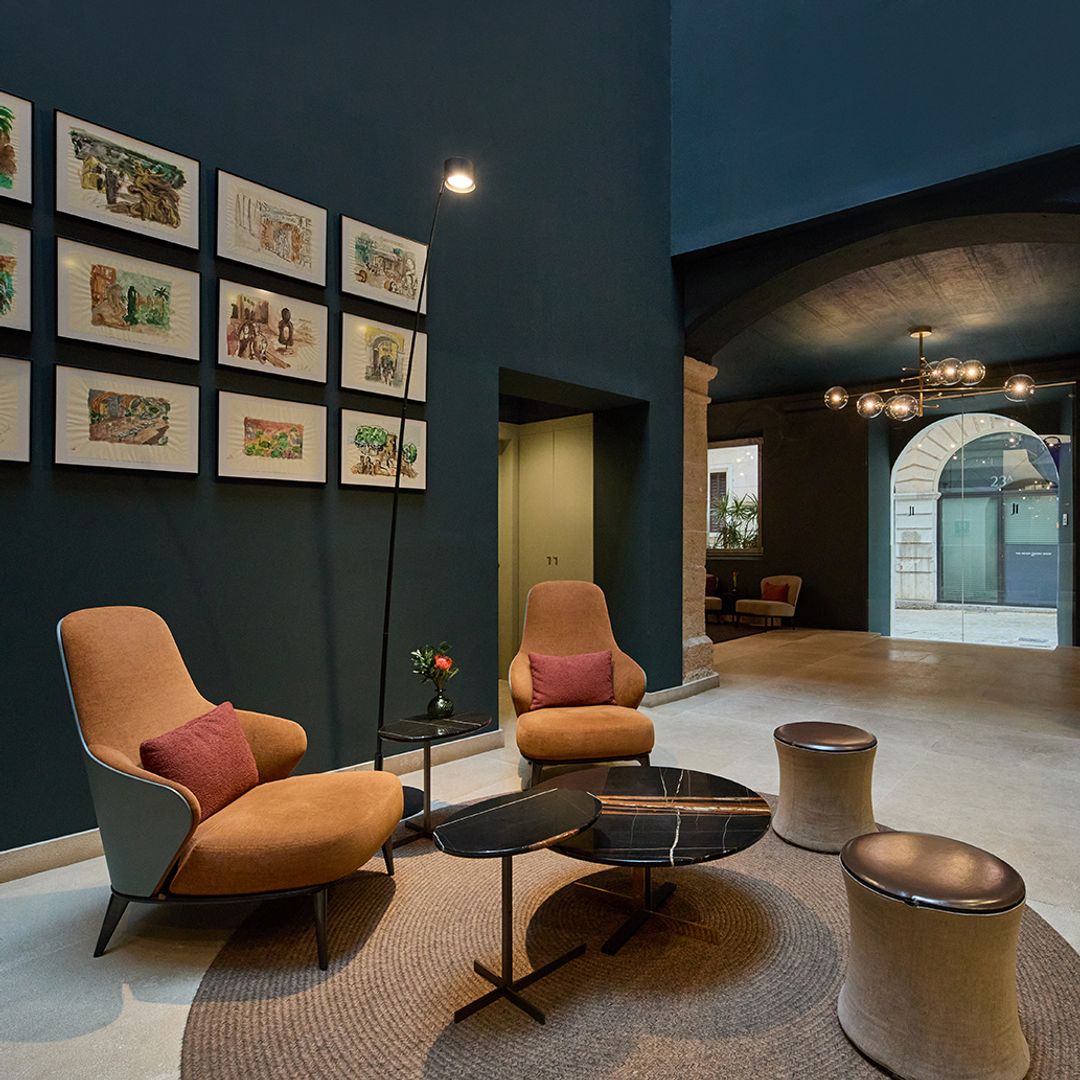
What makes the Sant Jaume Design Hotel one of the sleekest places to stay in the heart of Palma
16 hidden gems that make florida a memorable vacation destination, your perfect itinerary for a girls’ trip to tuolumne county, i’m a travel writer, and this is where i went on my mini-moon, i went to dubai in winter and this is why it’s the perfect sunny escape.
The Ultimate Guide to Slow Travel

Art & Culture
Sightseeing
Food & Drinks
Kelsie Colclough | Live the World
July 4, 2022
Slow travel to discover true wanderlust.
Slow travel is becoming more and more popular. We think it’s the future of travel. Our Ultimate Guide to Slow Travel is all about embracing this immersive travel trend. We’re not here to judge other ways of travelling. Heck, more people travelling is a good thing any way you can! But, if you’re curious about how to slow travel then our guide is just what you need.
Find the best activities for you on our map!
Trust us - travelling slowly is exactly what you need to do to fall in love with your next travel destination. We’re not about judging how people travel, only to show you that there’s another option! We’ve put together our Ultimate Guide to cut down all those myths about slow travel, tell you why we love it so much, and tell you how to slow travel to get you started!
Say bon voyage to the tourist crowds and join us on an in-depth journey. Keep reading to have all your questions answered, plus the best slow travel destinations recommendations and sustainable travel tips! Our ultimate guide is everything you need to begin your journey down the slow travel rabbit hole…
The slow travel basics

These are the questions we get all the time about slow travel; What is slow travel and how do I do it? The meaning of the word “slow travel” can seem obvious once you first see it, but we’re here to share all the info you need to really dig in and get your journey started.
What is slow travel?
Slow travel is a way of travelling that gets to the heart of why we love the journey. Go at your own pace to discover authentic experiences as you get off the beaten track and discover local gems. The slow traveler explores their dream destinations at their own pace, avoids the traps of mass tourism, and enjoys a rich travel experience. Keep reading to get all the info you need on the art of slow travel!
Where did slow travel come from?
Slow travel is a branch of the slow movement. You’ve probably seen the slow fashion movement that pushes against mass production of clothes in fast fashion. Maybe our foodie friends know slow food restaurants, which focus on local and seasonal dishes for authentic experiences rather than mass produced meals. Slow travel originates from the “slow food movement”, which got its start in Italy as a protest against McDonald’s.
Some define slow travel as public transport or taking months to explore one place. None of those definitions are exactly wrong, but they miss out on what makes slow travel so great. Whether you’re enjoying a 2 day city break or taking a road trip across Europe, any trip can become a slow travel trip as long as you stick to the intention and our top tips.
Who goes slow traveling?
You might have gone on a slow travel-like trip without even realising. Backpacking, camping, and hyper focused city trips all fall under the beautiful umbrella of slow travel. The slow travel movement is an accessible movement for all from students on a budget, luxury travellers, and retirees. No two slow travellers look alike! Slow travel has nothing to do with age or your income. It’s all about what experience you want out of traveling.
Since you can really customise a slow travel trip and delve in deep to a local culture, we find that slow travel is the best option for many solo travellers and those interested in getting a full and authentic experience of their destination.
Are slow travel and sustainable travel the same thing?
Eco conscious travel or sustainable travel does have some overlap with slow travel. But they’re not exactly the same thing. By moving away from mass tourism and into more sustainable practices, slow travel is by its nature more eco-friendly than other trips. Unlike the usual sustainable travel tips though, slow travel has its own mentality.
While sustainable travel focuses on the effect that trips have on the environment, slow travel looks more inward. All those busy trips, crowded places, and wanderlust social media posts can have a negative effect on our mental health. In slowing the pace and taking things one step at a time, slow travel is (in our opinion!) a better experience for all involved - you and the planet!
Can slow travel be luxurious?
You can absolutely make slow travel trips on a higher budget. We know there’s this myth that slow travel is all about backpacking and while that type of thing does fall under slow travel, that’s not all it's about. Taste local expensive food, stay at luxury Airbnbs, and discover the best of the local culture on a luxury budget that’s right for you.
Our top 5 reasons to travel slowly!
Now you know what slow travel is all about. But have we convinced you to plan your next trip in the slow travel way? We’ve got all the reasons why you should hop onto the slow travel movement right here to get you thinking.
You support the local economy
Hey, big spenders! There’s just something nice about going to your local market and actually meeting the sellers. Slow is that, but on an even bigger scale. Major travel companies do have a habit of pushing you to major tourist spots and always giving you popular itineraries. We’re not saying that’s a bad option if that’s what you want from your travels, but slow travel gives you a local and authentic option.
By travelling slowly, you’ll probably be spending more time in one place. Dive in deep to the local scene to discover hidden gems, restaurants, and local events. You’ll be giving your hard-earned cash to smaller businesses and local artisans who need the money a fair bit more than your average top 100 travel company.
Slow travel can keep your budget low
We all want to travel more often! Slow travel helps to keep your travel costs down by focusing on one place and its surrounding area. You don't need a bunch of flights or train tickets to get the most out of your journey. Of course, if you’ve got a higher budget there’s plenty of slow travel destinations, hotels, and things to do for you as well!
Many digital nomads (those who work remotely while travelling) are often slow travellers. Taking a slower pace by spending more time in one area before moving onto your next destination keeps your transport costs much lower. And, of course, you get all the benefits of seeing the most of your next travel destination.
Slow travel can help the environment
Slow travel trips can involve public transport or some other sustainable way of travelling. Public releases way less emissions than the average plane! Slow travel can be done via the plane too, so long as you take your time at the destination, search for hidden gems, and keep your focus on the local culture.
You meet new people
Yes, you will meet new people however you travel! But we’ve found the slow travel community to be super welcoming. As you join in on sustainable travel groups and hunt down the best local things to in your area, you’ll find yourself surrounded by people who share the same mindset. You’re not just one in a crowd of tourists - you become an explorer ready to find the next gem.
Of course, if you’re hunting down authentic experiences there’s nothing better than getting tips from locals. Mass tourism might bring in the money, but it can have backlash. But you’re actually here for an authentic trip, in our experience, locals are way more friendly once you express that especially in places where tourism has had some downsides.
Remember why you love to travel
Have you ever been stuck in the airport wishing you were back in bed? Have you ever arrived at a destination you thought was beautiful on social media, but you arrive and there’s just a queue of people taking photos?
Slow travel gets to the core of why we fell in love with travelling in the first place.
Not to sound like a boomer, but when you travel just for travel's sake then it loses a lot of its magic. The local food that just melts in your mouth. Discovering the amazing places and hidden gems no one tells you about. Relax in the forest, up a mountain, or even in the Roman ruins inside a city park! Slow travel is about having a truly immersive travel experience. Escape your normal life and totally immerse yourself in the sights, sounds and smells of a new place, of a new culture.
Whatever you love about travelling, slow travel will dial it up to 11 . So what are the types of slow travel journeys and where should you go? Here are our top recommendations!
The types of slow travel journeys

Slow travel is more of a mindset than a pigeon hole category, but there are some holiday types that fall naturally into this type of travel. Road trips, backpacking, cycling journeys, and camping, can all be types of slow travel trips.
So long as you’re seeking out authentic experiences and taking your time, you can make any journey into a slow travel one. But here are some of our favourite easy slow travel trip types to give you some ideas.
Hop in your car and drive wherever you want! Road trips are an easy way of getting the group together and getting around to your dream destinations. Take a road trip across Europe, America, and more. Driving might not seem sustainable at first glance, but it’s better than taking the plane to each stop! Make sure to stop along the way at the best local places! Along the road, you’re sure to find a hidden gem or two.
Backpacking
Nothing is slower and more beautiful than getting around on foot. Take your time climbing to the mountain top and enjoy the view! Is there anything more authentic than Mother Nature? Feel the rocky cliffs and rivers beneath your feet on a slow travel backpacking trip. You can go backpacking almost anywhere. Some countries, like Thailand and Sri Lanka, have seen a major increase in the number of backpackers paying them a visit. We actually recommend visiting a less popular country for backpacking to avoid crowds and have the least touristy experience possible.
A solid choice for any traveller! Pitch up a tent and sleep under the stars surrounded by nature. Camping is a great choice as sites tend to be not far off great slow travel attractions. It’s good to take it slow sometimes and just enjoy your time with family and friends! Use your tent as a starting point on your adventure as you make your way to the national parks or nearby cities. We actually think camping is an underrated option, especially when there’s more options than you’d expect in the camping world.
Campsites are one of the most sustainable places to stay on your holiday, but to really max out those slow travel points we’ve found Pitchup to be super handy to find campsites in Europe that use renewable energy .
Get on your bike and get peddling! Why wait for your flight or get stuck in the crowd, when you can peddle past them all? Explore your next destination on wheels. You’ll cycle through national parks, to castles, ruins, and make your way through the cities. Some countries are a lot better for cycling trips than others, so keep reading to find the best slow travel destinations!
Train Trips
Follow the tracks across the country, across continents even! On the train, you can travel affordably and sustainably across country borders. You’ll be literally travelling more slowly and taking more time to enjoy the journey as well as the destination. Europe is a super popular destination for train journeys. Check out our slow travel destinations below to get some ideas going…
Our top slow travel destinations

You can slow travel anywhere in the world. But at Live the World we absolutely love Europe for slow travel beginners. Here are our top slow travel destinations in Europe, plus the best things to do for each country. Take your pick!
Netherlands
Known for its windmills and tulips, the Netherlands is one of the most beautiful countries in Europe. SUP your way across the canals of Amsterdam, hike the beaches of the less travelled but unique Frisian Islands, or even pick out plastic as you sail across the rivers. The Netherlands is the perfect destination for a cycling trip, a city day trip, and more.
Amsterdam is the major tourist attraction, but other cities have great activities to offer too. Check out our map to find the best slow travel places to go!
The heart of Europe! Belgium is an underrated destination full of hidden gems and gorgeous city trips. Belgium has some of the prettiest castles and nature reserves you’d never know if you didn’t see it for yourself. A perfect pick for a road trip through Europe and city breaks, Belgium is one of our top slow travel destinations.
Follow our 2 day itinerary in Brussels for a slow travel experience in Belgium’s capital!
Czech Republic
Backpack in the Czech Republic to enjoy a central European location with gorgeous mountains on its border like Sněžka. Take a city break in Prague to uncover hidden gems in its castle, local markets, and so much more. Prague is the #1 stop in the Czech Republic, but there’s great places across the country too like the beautiful city of Czechy Krumlov.
Our top tips on how to travel slowly

After racking our brains and hunting down the top experts in the eco-travel field, we’ve got all the best slow travel tips just for you. From ditching the packed itineraries to bamboo cutlery, these are the top tips from experts. Read even more tips on how to travel sustainably here.
1 . Buy local
This top tip came up no matter who we asked! So often, tourists will stroll by all the local and independent shops and gather at only the major centres. Of course, you’re helping out the locals this way. But you’re also keeping your carbon footprint low, by reducing all the miles goods have to travel when you shop locally. We’ve found some surprises at farmers markets, from gorgeous flowers in Prague to handmade wooden clogs in the Netherlands. Check out our map to find local trading posts!
2 . Do what you can, when you can
When you’re trying to do right by the environment and yourself, it’s easy to get a bit depressed about climate change. We spoke to Coren Munday, founder of bamboo cutlery company SeaForYourselfco , to get her perspective on slow travel. Coren, like so many of us travellers, was shocked by all the plastic she saw on the beach. When you’re in that situation, what can you do about it?
Coren let us know that, in the true spirit of slow travel, it’s best to focus on the here and now. Do what you can! Whether that’s picking up some plastic bottles as you backpack, swapping to bamboo cutlery, or simply taking a bag with you when you travel so you don’t leave your rubbish behind. Every little bit helps!
3 . Electric Detox
OK, hear us out. We know how handy our gadgets can be when you’re in a whole new world. Our friends at IndieCampers let us know how important taking some time off can be, though. Take a break from your phone and social media! I actually tried this out on a recent trip to Nottingham. It was weird going without my laptop and phone most of the time, and sometimes I did have to use my phone just to get directions. If, like me, you’re not quite ready to go cold turkey then just turn off your notifications and enjoy a stress-free day without refreshing your email inbox!
4 . Give back
The mindset of slow travel doesn’t start and end with just one person. You can spread the mindset of slow travel by giving back as you go. We don’t just mean money, though supporting local artists and events does go a long way. We mean supporting the local culture and community. Whether that’s chatting to the locals in their language when you can, supporting local businesses, or volunteering on projects around the world, you can travel in a way that isn’t all take. Sometimes we need to give back too!
5 . Take it slow - literally
We’ve said it before and we’ll say it again. Slow travel doesn’t just mean sticking to the train. But! We’d be lying if we didn’t include this top tip. After all, public transport is one of the best ways to get around depending on where you go.
The main thing is not to rush about from place to place. If you’re in a rush, then you’re not enjoying the journey. You could be in the most beautiful place in the world, but if you’ve been jostled about by the tourist crowd, honked at in traffic, and need to go to the next activity in an hour, then it doesn’t seem that pretty. It’s important to take things at your own pace, so you can really enjoy your experiences.
Everything you need to pack for a slow travel journey
Alright, you’ve picked your destination and you basically now have a degree in slow travel. You’re ready to go. But what are the essentials to pack for a slow travel trip? Of course, having an umbrella, jacket, and spare bag for waste, are always needed. We’ve put together a list of the best things to bring!
While you’re out exploring, you’re sure to find beautiful places and hidden gems. Get your phone camera or DSLR ready for your best shot. Slow travel is all about taking your time and enjoying the moment. What’s more slow travel than capturing the moment forever on film? The big thing to remember is the intention. If you get caught up just taking photos to show people later, then you’re not enjoying the trip anymore. Use your camera to help you remember what you love later - don’t make the camera the star of the trip.
2 . Portable phone charger
Sometimes you’ll be out hiking and your phone will run out of battery and, next thing you know, you’re following a random sign to the nearest village in the hopes of getting directions. Don’t be like me. Learn from all the mistakes of trekkers before you and bring along a portable phone charger to save yourself the stress. Perfect too for group campaign trips and city day trips. You’ll never regret bringing one of these guys along.
3 . Cross body bag
Nearly every traveller under the sun has one of these for a reason. Keep an eye on your most important belongings without lugging around a massive bag as you go. Crossbody bags are a great pick for day trips in the city and hikes too (easy access to snacks!). You can get ‘em second hand, but sometimes you just want to splash out and get something nice. For a more luxury budget with a slow fashion heart, check out STOW .
4 . A notepad
Here’s a tip from me. When you’re in the pub, you’re not going to remember all the recommendations locals give you. And they give you plenty. Use the note app on your phone or go back to basics with pen and paper, to keep track of the ever growing list of things to do in the local area. You can also double up your notepad as a travelling journal. Look back on those memories years from now!
5 . A map or guide
Having an actual map or guide is handy if you have poor connection. But we don’t just mean that. Use our map and guide to find things to do near you that are recommended by locals. Dive in deep on your slow travel trip and find activities to fit your interests, not just the “top ten essentials to do” that you’ll find on every blog list. Keep reading to find our top things to do wherever you go for the best slow travel trip ever!
The best things to do on a slow travel trip

So, you banished your former ideas about travel and you’ve got our travel guide at the ready. But what do slow travelers do on their trips? We’re finishing up our ultimate guide to slow travel with some ideas to get your trip planning started.
1 . Take a hike
Hiking is booming and for good reason! Slow things down by travelling on foot. You never know what you’ll find. We’ve seen hikes marked by artsy sculptures, a walking trail through a witchy village, or go for a classic woodland trail. Whatever flavour of hike you pick, you’ll be enjoying the local nature and taking a breath of fresh air.
You can always find a good hike at the nearest national park, but we recommend using our map to find the best hikes and tips to make your trek the best one yet. You can find some good walks not too far from the city too!
2 . Explore the markets
We will keep on banging this drum. There’s no point going to a city just to explore the major shops. Sure, you’ll find some goodies there but you’re not really picking up the local vibe. Head on down to the local market to meet the artisans, the farmers, and so much more. Blend in with the local crowd!
3 . Find hidden gems
A slow travel trip is best when it includes a hidden place or two. Keep your eyes peeled for those places by asking the locals and checking out hidden gems on our map in Belgium, the Czech Republic, the Netherlands, and more to come soon! What we love about hidden gems is that they can be anything from a 19th century castle in the Netherlands to an alleyway covered in amazing street art.
4 . Taste it!
Don’t forget to taste the local food and try out the beer and wine. Take a brewery tour, book a wine tasting, and discover local spots on our map! We’ve found amazing local food trucks, rooftop bars, and even little wineries across our favourite destinations.
While you’ll always find plenty of cafes and restaurants in the city centre, they’re usually not the most authentic. Sometimes they’re good, sometimes they’re tourist traps! Wander out a little further to find the best options in the city.
5 . Go sailing!
OK, this one depends where you are but if you’re near a lake or river then you can’t go wrong by renting a boat. Sail out onto the waters and feel that sea - or river! - breeze. Want to be even more active? You can always go canoeing or grab a SUP board. SUP is basically stand-up paddle boarding! We’ve even found SUP rentals in the canals of the Netherlands.
6 . Bring your bike
Join the locals on the wheels. Slow down your travels by taking yourself from place to place. Sustainable, convenient, and a great thing to do, biking is one activity you have to add to your slow travel checklist. Cycle your way across nature reserves, past the cities, or even follow along a local ice skating route.
Our slow travel book recs
Need further reading? Want some more inspiration? We’re not here to give you homework, but you don’t have to take our word for it on how great slow travel is. Delve in deeper into the slow travel movement and community alongside these writers, backpackers, trekkers, and more. Discover new destinations and tips in their pages, then go out and explore for yourself!
The Art of Slow Travel by Bhavana Gesota
Read the true story and personal experiences of passionate slow traveller Bhavana Gesota. When I was reading this book, I was amazed by how deeply Gesota experienced each place she visited. But this book doesn’t just focus on the places. The Art of Slow Travel is one of the best travel books you can read as it actually goes into the internal journey we go on when we travel.
Slow Travel: A Movement by Penny Watson
This is your basic introduction to slow travel. Best for inspiration rather than a how-to guide, this book might not have all the answers you need to understand slow travel but it will pull you in and leave you wanting more. Discover beautiful places, tips, and tour company recommendations. We recommend Watson’s books for beginners to slow travel! Thanks to its fairly recent publication in 2019 and iconic photos, this book always ranks highly and our booklist would not be complete without it.

The Idle Traveller: The Art of Slow Travel by Dan Kieran
This book is essentially a longish essay on why you should slow travel. Reflect on why we should travel and if we have lost that purpose… Keiran’s book is best for those interested in the mindset of slow travel and the philosophy behind it. Some of the best parts of the book are Keiran’s adventures and anecdotes from his travels across the UK and Europe. More limited in location than The Art of Slow Travel by Bhavana Gesota, but still an interesting read.
Fancy embracing the slow travel way on your next trip? Check out our map for 100s of local, authentic activities that’ll perfectly fit a slower style. Find the best activities for you on our map! Psst! Try selecting Green Horizons and Local Trading Posts for some of our slow travel faves…
If your chosen slow travel destination isn’t there yet, don’t worry, we’re working on it! Follow our socials to be the first to know when we launch a new destination. In the meantime, happy (slow) travelling!
Book a nearby experience
Let our ai assistant help plan your trip.
Create a personalized plan and share it with your friends
Never run out of things to do! Sign up to our newsletter today, what are you waiting for?
- Skip to right header navigation
- Skip to main content
- Skip to primary sidebar
- Skip to footer

Slow Travel. Eat Local.
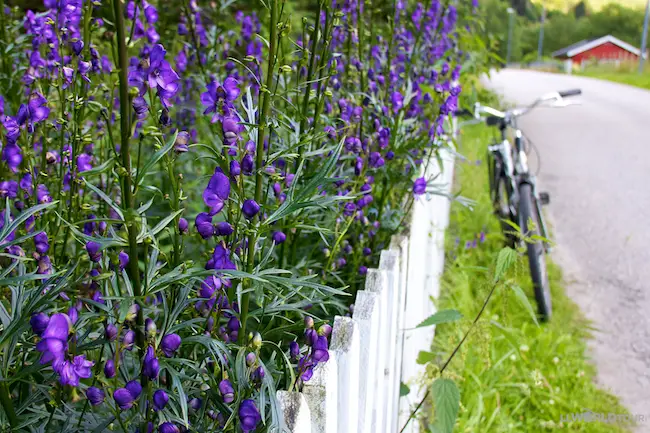
What is Slow Travel and How to Travel Slowly
// by Lisa 18 Comments
For me, the best way to travel is to slow down, meet locals, and share local food. It’s about immersing more in the local culture and ultimately…connecting. Read on to discover what is slow travel and how you can do it.
Table of Contents
What is Slow Travel?
What is slow travel and why should you do it? Well, semantically the phrase is sort of borrowed from the somewhat known food movement: Slow Food. Back in 1986, an Italian formed the Slow Food organization as a way to combat the growing “fast food” mentality and industrial food production. It now has chapters all over the world and promotes using real, local ingredients and traditional cooking.
You know when sometimes you return from a vacation exhausted because you were walking around a city from dawn ‘til dusk, trying to see as much as possible in five days? You zig-zagged from the Coliseum to the Spanish Steps to the Trevi Fountain . Your feet hurt, you brain was saturated with cathedrals and tapestries, and really when all was said and done, it was hard to really remember singular details because it turned into one big blur.
Imagine instead, waking up in a local neighborhood, sipping a cappuccino at a corner café, browsing the market for the day’s freshest produce and chatting to the woman you bought bread from a couple days earlier.
That is what slow travel is all about. To me, it’s about slowing down and maybe sightseeing less, but connecting more.
Slow tourism or travel isn’t necessarily literal: taking the slow, local train or laying in a hammock all day. It’s about connection – connecting to a place through its culture, its food and its people. And often this is achieved by slowing down your pace somewhat. So in other words, staying in one location longer, immersing yourself and pushing yourself to find ways to meet locals, and not trying to cram in every sight or activity.
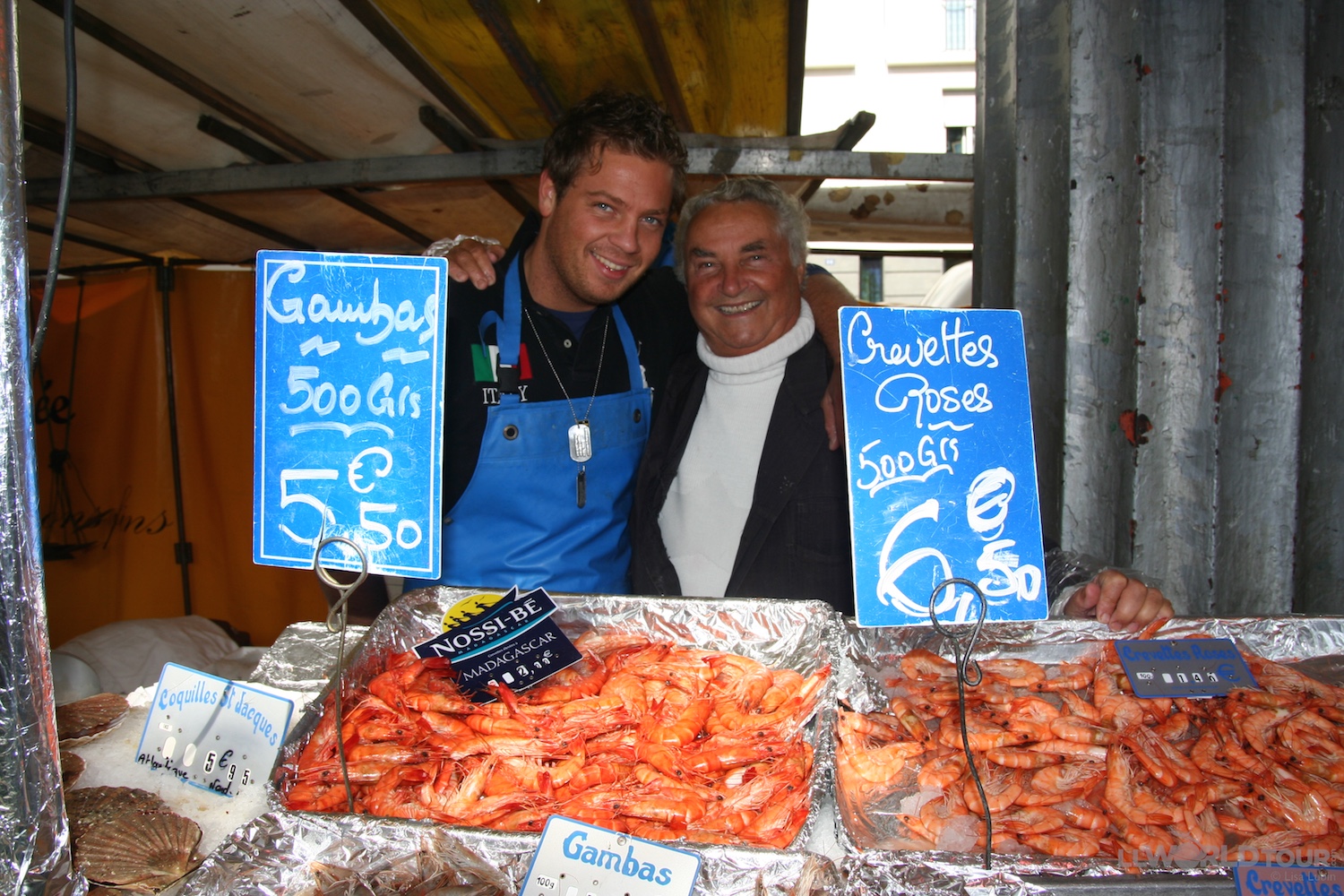
Why You Should Try Slow Travel
Be in the moment.
Once you slow down, you can let things happen. Freed from overly planned itineraries, you begin to see the kinds of things (and meet the kinds of people) that most tourists overlook in their haste to cross sights of their list. Don’t rush around like we have become programmed to do. Slow your roll and savor all the little moments of a new place.
Save money
Slow Travel also has a side benefit of saving you money . When you are not cramming in four different cities on a seven-day trip, you are buying less transport, which is typically the most expensive part of travel. Renting an apartment or even housesitting is much cheaper than paying nightly rates at a hotel. If you are staying in one place, it also means you save on food because you can buy food for the week and cook some meals at your airbnb or homestay.
Meet and get to know locals
Now that you are in one place for several days (or more!), you might meet your neighbors and you can start to frequent the same café and get to know your server. Talk to the people you might already be interacting with. Chat up your Uber driver, ask your food tour guide what she likes about living there. Or ask your airbnb host if they want to join you for lunch one day. Learn some key words in the local language and try just starting with “hello” to someone at a shop. I can tell countless stories of how my just chatting with someone turned into a dinner invite at their home or even a weekend getaway ! Meeting locals is my number one tip for what can turn a good trip a great trip!
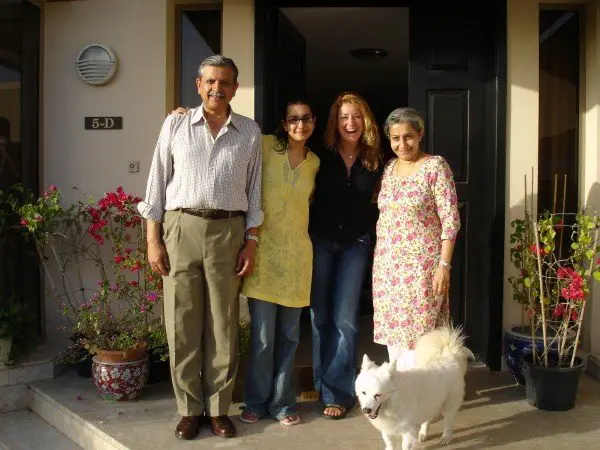
How You Can Do Slow Travel
There are so many great ways to experience slow travel. I asked some of my fellow travel bloggers for some of their best tips and experiences that are sure to give you some ideas for your next trip!
Simply Talk to Locals
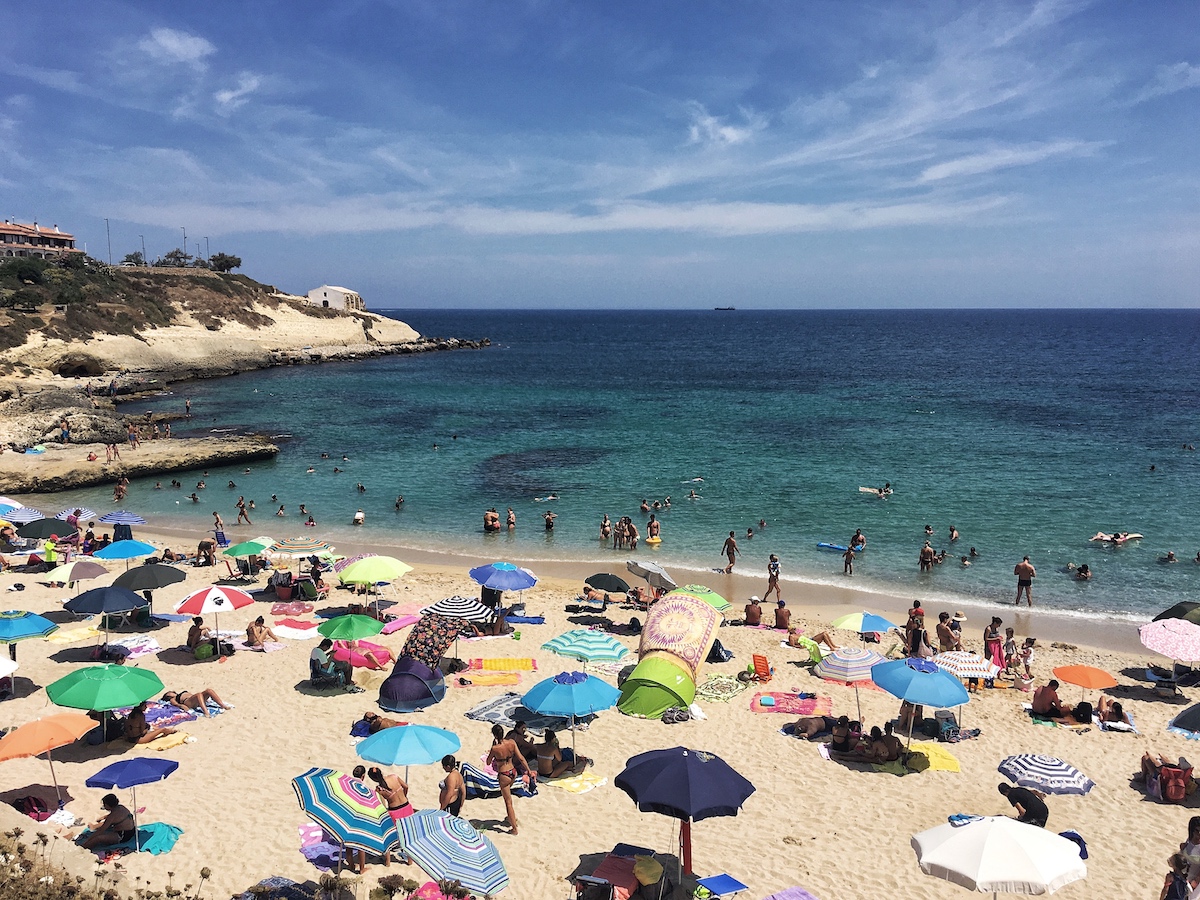
By Claudia Tavani of My Adventures Across The World
Slow travel doesn’t by definition have to be slow — you can travel slowly even when you don’t have much time to spend in a place, as long as you take your time to savor the atmosphere, appreciate the local way of life, and learn more about it.
One of the best ways to get into the local vibe is by making small talk with locals. In a lot of cases, this is easier said than done as language may well be a barrier , but at times it only really takes a few words, a smile and a funny comment to end up chatting with a local.
Head out of your hotel, look for the place where the locals love hanging out in the evening. If it is summer time, find a spot that is nice and breezy and you will see kids playing ball games and older folks playing cards and enjoying a sunset drink. Sit on a bench next to a local, say hello and after a while ask a simple, random question or make a comment or small talk. A good conversation starter may be something like, “it’s really hot today.” You may see that you catch them by surprise, but chances are they will be happy to exchange a few words.
That’s how you may learn that Getsemani, one of the oldest neighborhoods in Cartagena , has undergone some major changes and improvements in recent times; or that people in Porto Torres, a small town at the North of Sardinia, aren’t really happy with the new mayor.
The key is to keep it casual, to be friendly, and to listen to what others have to say.
Slow Travel through Transport
Ride the verde canyon railroad.

By Theresa Goodrich of The Local Tourist
One of the most relaxing experiences I’ve ever had while traveling was a ride on the Verde Canyon Railroad . This four-hour round trip tour departs from and returns to Clarkdale, Arizona, along tracks that have carted trains since 1912. It’s only about twenty minutes from Sedona, so you can imagine how beautiful the scenery is.
My husband, Jim, and I tend to be fast travelers. We’ve taken two month-plus road trips, but because they were both research for my books, we stayed in a new place almost every night. It was a treat to let someone else take the wheel, so to speak. During that train ride we could truly be present and enjoy the landscape, with its red rocks, cottonwood-lined riverbanks, and cliff dwellings.
It’s a pretty social excursion, and we met people from Minnesota and Michigan’s Upper Peninsula. We also met Dennis, the train’s engineer. Once he found out that Jim’s a classically trained musician, Dennis belted out Man of La Mancha. Turns out he was also classically trained and has a range of three octaves! That’s the kind of experience you can only have when you slow down.
Take a Train Across America

By Laura Clowes of Country Girl Explores
The California Zephyr Amtrak train ride is one of the most beautiful and scenic journeys in the USA. The passenger train runs from Chicago, Illinois to San Francisco, California and takes approximately 51 hours to complete.
The train cruises through seven different states, taking in the upper Colorado River valley in the Rocky Mountains and the Sierra Nevada. It passes through Denver, Salt Lake City and Reno before landed in Emeryville, in the San Francisco Bay area.
Taking the train halfway across the USA was one of the best decisions I ever made. It left me with memories to last a lifetime and stories to tell everyone about that one time I spent more than 50 hours on a train! Everyone always looks at me like I’m crazy, but just spending over two days taking in the dynamic landscape and views of the United States is something that you miss if you fly across the country. Four hours on a plane or 54 hours on a train with un-missable views? I know which one I prefer.
Top Tip: Get a seat in the observation car for the best views!
Take the Trans Siberian Railway

By Sinead Camplin of Map Made Memories
We travelled on the Trans Siberian Railway as part of a year-long family trip around the world. The Trans Siberian trip formed a section of our overland journey from Hong Kong to the U.K.
We decided to travel across the biggest country in the world by train as we felt we had ‘missed out’ on fully exploring other countries by flying over large sections of them. Using the extensive Russian rail network, we had the opportunity to slow travel across an enormous, diverse country that spans two continents and eleven time zones.
Long-distance Russian trains are not high speed so, by their very nature, you slow down! During our many hours and days spent on the Russian rail tracks between our sightseeing locations, our family played games, read books and spent hours daydreaming out of the window — activities which are often pushed to the background in favour of timetabled sightseeing and the general busyness of family life.
We had time to chat to other train travelers from Russia and all over the world who also had time to chat to us. Flying would have been cheaper and quicker but nowhere near as much fun or relaxing!
Slow Travel by Bike

By Marco Ferrarese of monkeyrockworld.com
I always believe that often times, the better-known destinations always have some gems hidden beyond their most beaten trails. This is the case of Kochi in Kerala, one of the most visited cities in South India.
If you stroll in Fort Kochi, a former colonial abode with leafy streets, ancient churches and sublime architecture, you’ll certainly have a good time, but you’ll also share the grounds with an ever-increasing number of tourists who breeze through on their whistle-stop tours.
I, on the contrary, decided to step out of that area and get to know that even Kochi has some beautiful countryside filled with backwaters — open marshland and waterways formed by the accumulation of brackish water between the Arabian sea and the inland rivers.
The best way to see this area was, to me, was pedaling on a bicycle tour of Kochi Backwaters . The perk here is stepping out of the tourist area and its touts, and truly see how locals still live in this region which is pretty unspoilt, and yet just about 10km south of Fort Kochi. Our knowledgeable biking guide took us for a half-day across a land made of water canals, small countryside roads and tiny villages where locals still make their boats by hand with the wood they source from their coconut groves.
By cycling slowly around Kochi’s less visited backwaters, I think I had at least a glimpse of what it means to live by the slow rhythms of the tide, and the constant seasonal changes that turn these waters from fresh to brackish, thus influencing the lives of the fishermen and farmers here. If I had remained in Fort Kochi, seated in a boutique hotel sipping an espresso, I would have breezed through and missed out on all of this treasure trove.
Slow Travel by Van Life
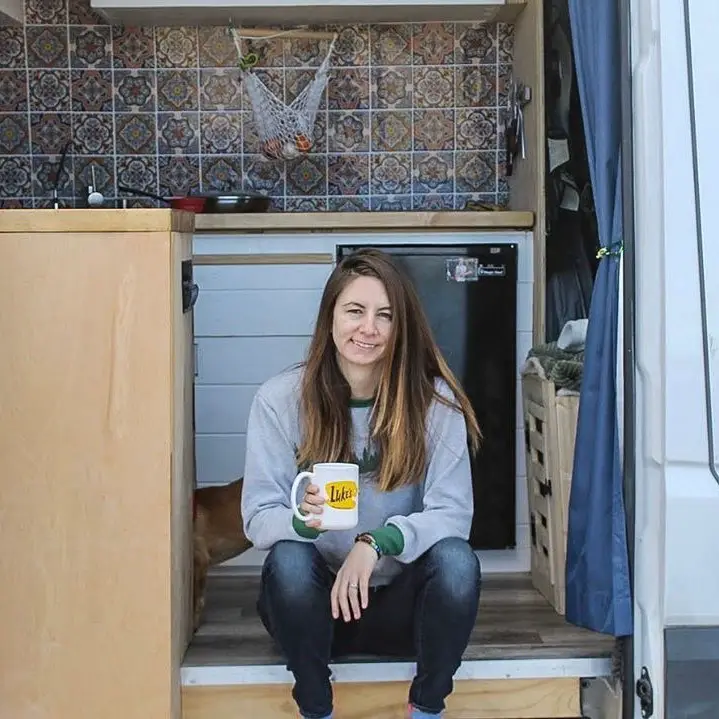
By Brie of Chasing the Wild Goose
I went on my first international trip when I was 25. It was a whirlwind, to say the least. I explored Barcelona, Paris, and Munich in a short two weeks. Once I finally got my bearings and accustomed to the time difference, it was time for me to head back. Over the next five years I experienced the same type of travel, with short trips to places like South Africa, Iceland, Australia, New Zealand, and Amsterdam. This left me feeling travel burn out , unhappy, and unfulfilled with my desire to travel and explore.
It wasn’t until my partner and I decided to build a Sprinter Van into a tiny home on wheels that I was finally able to experience the art and beauty of slow travel.
Living on the road working full time can force you to stay in cities or areas with cell phone service for longer than you planned to ensure you are able to get your remote computer work finished. This spring we stayed a month in San Diego, exploring Southern California experiencing the beach culture. We discovered our favorite coffee shop with the best cold brew we’ve ever had, the best vegan restaurants, and drank our fill among twenty different breweries inside the city. To read more on San Diego, check out my guide on San Diego.
Slowing down gave us the opportunity to become a part of the local van scene meeting many different nomads from across the globe. We had the chance to experience a new place, like a local, and understand what it would be like to live there. This is my favorite part of slow travel, you get to truly experience a place and the culture instead of just checking off boxes to say “you’ve been there.”
Slow Travel by Walking

By Campbell & Alya of Stingy Nomads
Slow travel for us is on foot. During the last year, we spent five months walking through Spain and Portugal following the famous Camino de Santiago routes. This experience changed the way we travel.
We walked our first Camino from Lisbon to Santiago de Compostela more out of curiosity to see what it’s and how it works. After finishing the walk we got completely addicted to this slow way of exploring a country, seeing off the beaten path places and meeting local people.
It even changed our perception of speed. After 30 days of moving only at a walking pace, taking a bus or a train became an incredible experience as all of a sudden you cover huge distances in a short time.
Pilgrims on the Camino live a very different life — there is nowhere to rush, every day you get up, pack your backpack and start walking, you can walk as far and as fast as you want, stop anywhere you want, and there are no rules or obligations of being in a particular place at a specific time.
On the Camino, we got to see some places that we would never visit as tourists — small towns and villages where everybody knows each other. When you go to a local bar (an important center of the social life in such places) you become a part of this small community — you talk to the people and you try local food, which is often cheaper, better and tastier than in popular restaurants in touristy places. Walking through different regions you discover local specialties and unique dishes that you can get only in a particular area like pimientos de padrón or pulpo a la Gallega in Galicia, pintxos in the Basque Country, and tostadas with jamón and cheese in Andalusia. All these enrich your travel experience and allow you to really get to know the country and its people.
Slow Travel Through Food
Take a cooking class .

By Cat Lin of For Two, Please
Taking a cooking class at a destination with locals is a great example of slow travel for me. Instead of simply dining out at a restaurant, this type of hands-on experience exposes me to a greater depth of culture through its food.
I recently participated in a cooking class on my trip to Lyon, France. My husband and I joined a local chef at his restaurant, where we went behind-the-scenes to his kitchen and learned how to make traditional Lyonnaise cuisine. Throughout the 3-hour workshop, we cooked a complete meal with starter, main course and dessert, featuring classic dishes like poulet bourguignon. The chef also went deep into the context and history of the dishes we were making. All of a sudden, it made sense to us why they put wine into the chicken stew!
To us, cooking classes are not just about learning the recipes and cooking tips. The most valuable part of this kind of activity is slowing us down to examine how its unique cuisine can reflect the distinct culture and history.
Pizza-Making in Italy

By Wendy Werneth of the Nomadic Vegan
On my most recent trip to Italy, I participated in a pizza-making class at a lovely vegan-friendly restaurant in Rome , called Origano. I’ve eaten hundreds of pizzas in my lifetime, but this was the first time I had ever attempted to make one. The class was very hands-on. A professional pizzaiolo invited a small group of us into the restaurant’s baking area and showed us how to stretch and knead the pizza dough, then guided us as we attempted it ourselves.
We then added the sauce, cheese and whatever toppings we wanted to our pizza. A couple of us even got to try placing the pizza inside the traditional wood-fired oven with a long-handled pizza peel! Before taking the class, I knew how pizza was made and had watched pizzaioli in Italy doing it many times before, but doing it myself definitely gave me a new appreciation for this local art form.
One thing I really loved about this class was that Origano offered vegan cheese for us to use on our pizzas in addition to the usual buffalo mozzarella cheese. I was traveling with a group of vegans, most of whom were experiencing Italy for the first time, and we were all thrilled to be able to participate in this very important part of Italian food and culture without compromising our values.
Try Meal Sharing with Locals
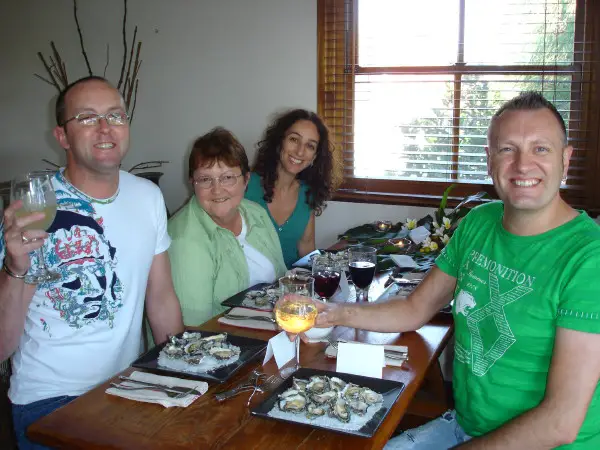
One of the best ways to get local is to share a meal with a local in their home. There have been times when I’ve met some wonderful people either through friends, or just striking up conversations. Of course you just can’t always make this happen, but now there are some companies that help facilitate this! Websites like MealSharing and EatWith are like the Airbnb of meals. You simply put in your destination and see who is hosting a meal while you are in town and sign up! You pay for your meal which helps your host cover the cost of ingredients and get to meet a local who wants to meet you and cook for you!
I’ve not only done this around the world in places like Rome and Copenhagen, I’ve even done it in my own city as a way to meet interesting people right in my own backyard.
How to Slow Travel with Your Accommodations
Get your own apartment .
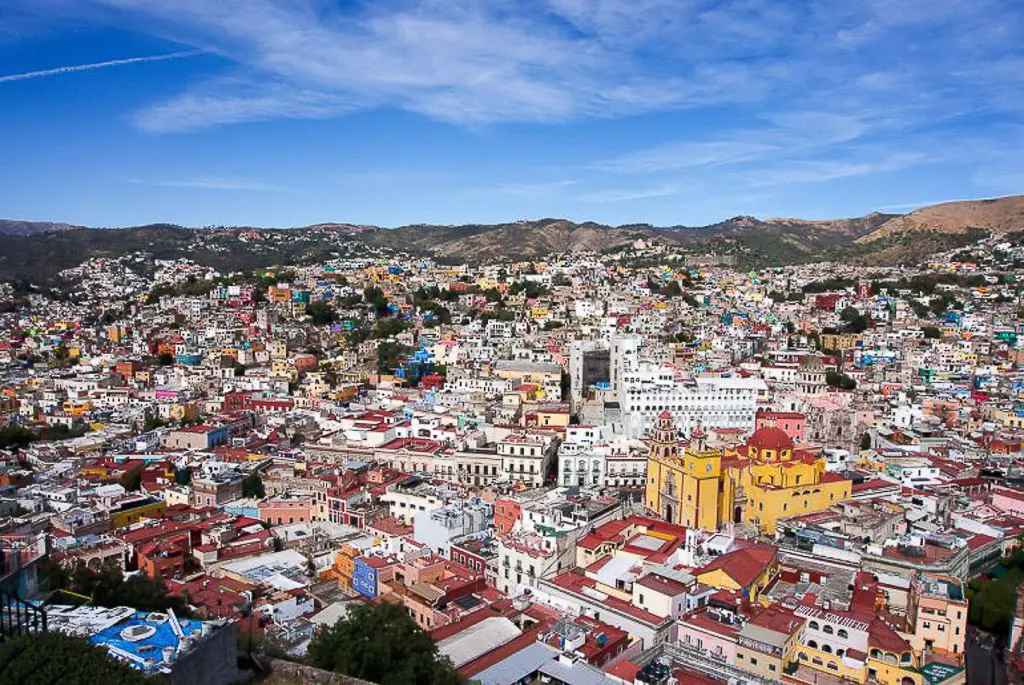
By Jess Drier of Unearth the Voyage
My fiancé and I have done all types of travel, but lately, we have really tried to slow down and spend more time in one place. We decided to do this because we feel we can have a more authentic experience and really get to know a place and the locals when we take more time to explore it.
One way we have found we have more opportunities to connect and get to know the locals is find alternatives to hotels such as renting an Airbnb from a local. We make sure when we are searching for an Airbnb that their profile says they are from that area instead of someone just renting out a property.
We have had some of the most amazing experiences renting an Airbnb from a local as often times they live really close to the property or you can even stay in their house with them. We are frequently been invited over for dinner, been given tours, and have developed a connection with our Airbnb host . We actually connected so well with our last hosts that they asked us to come back and housesit for them. Not only that, they are going to be attending our wedding!
Renting an Airbnb can definitely have ups and downs — but it’s one way we have found to connect on a deeper level to the places we visit.
➙ Need a place to stay? Use my airbnb link for $15-25 off your first stay!
Consider House & Pet Sitting

By Brooke & Buddy Baum of TrailingAway.com
We’re go-go-go travelers by default. Which is why house and pet sitting has been the perfect way to force us into slow travel. We find all of our house sits through a site called TrustedHousesitters .
When we commit to a sit, it becomes our home for the week, month, or part of the year. And since we started house sitting full-time more than a year ago, it has improved the way we see the world tremendously.
There is something so special about getting to live like a local in a new place – go grocery shopping, walk a dog around the nearby park, find a go-to restaurant, look up unique activities nearby. We leave the places where we’ve done house sits feeling like we know them intimately.
A great example of this was a five-week sit we did in Inverness, Scotland. Going into it, we really only knew it was close to Loch Ness. But while there, we found a handful of beautiful waterfalls, lush hikes, scenic drives through the Highlands, and multiple castles we had never even heard of. We even went to a local beach – definitely not something Scotland is known for! Plus, we had three pups to hang out with while there who really added to the memories with their silly antics.
We’ve had similar experiences in places like rural Spain, downtown Munich, lava-strewn Pahoa in Hawaii, and Milan, Italy. There is so much value in richly seeing a place, and we are very grateful house sitting is allowing us to do that.
Housesitting Around Mexico

By Crystal Egan of Castaway with Crystal
We love slow travel! We like to stay for a long time in places, getting to know them inside and out…like a local.
Recently, we were able to travel around Mexico for eight months by housesitting as we went. By looking after people’s homes we were able to stretch out our budget by eliminating the need to pay for accommodation — meaning we could stay for longer in one place.
On Cozumel Island, we house and pet sat for a month, lapping up the sights slowly with our borrowed motorbike. But our favorite housesit was for with a Swiss couple living in Puerto Escondido that was going back to Switzerland for a month to visit family. Their house was grand with a huge garden and a pool. While we worked hard to keep the place immaculate, we also had a lot of time to explore Puerto Escondido and the surrounding towns and beaches in Oaxaca .
Our Spanish skills were put to the test every weekend at the local markets, buying fresh produce and odd necessities needed to maintain the house. Once they got home, they invited us to stay longer and rent out the spare room for a great price, which gave us even more time to get to know them and live in the town like locals. Even now, we send the couple messages and updates and plan to visit them next time we visit Mexico.
Try Couchsurfing

By Halef and Michael of The Round The World Guys
When we travel, one of the most effective ways we slow down and really engage with a destination is by using Couchsurfing.com. When we stay in hostels and hotels, we often find ourselves in too much of a hurry to see all of the famous sights and tourist traps, and then move on.
Couchsurfing is different . It’s been our go-to method for slow travel since we started using it for hosting others in 2007. We love to stay with locals all over the world. It’s helped us discover that seeing a city from a local’s point of view, eating in their favorite restaurants, and doing the things they do, is a fantastic way to get away from the touristy crowds. The big advantage is that you come away knowing a lot more about the place than you otherwise would have.
We’ve all seen crowds and tour groups who visit a city, buy a trinket, and leave. Great Couchsurfing hosts want to show you more about where they live. They want you to see past the tourist traps and really get to know their homes. Because of this, you pace yourself and take it all in. Couchsurfing, especially with multiple hosts in the same city, is the perfect way to relax, learn more about the places you visit, and come away with a much broader, more in-depth experience.
Using couchsurfing during my round the world trip from 2006-2009 was one of the best decisions I made. It was truly THE main way I could immerse and get local extremely fast and easy. I made so many new friends and connections. It honestly defined what travel means to me.
Go Wild Camping

By Heather Cole of the Conversant Traveller
Wild camping is the ultimate form of travel that allows you to really slow down and explore the landscape properly, rather than just driving by, or taking day trips.
In the United Kingdom, you can camp pretty much anywhere in the wilderness, so long as you respect the land and local rules. We love wild camping in the Lake District . There’s something about being in the hills that really makes us see our location through different eyes. Everyday tasks like making a cup of tea take much longer when we’re wild camping, and that’s a good thing!
Sitting on a hillside overlooking a lake as the sun sets, whilst waiting for the roar of the kettle as our water boils, is a unique feeling. As our dinner bubbles away on the stove, we notice just how much wildlife there is, and appreciate not having to share it with anyone.
Even the daily chores of packing up the tent and heading off to a new mountain peak are a joy. Here, time stands still. We go at our own pace, never have to be anywhere in particular and can change our minds whenever we like. We’re often up early which means we enjoy sunrises, and as night falls it’s time for bed. Our day adjusts to be in tune with daylight and nature, there’s no need for a watch out here. It might sound like hard work, but it’s the most relaxing form of travel we’ve ever tried!
Experience Slow Travel by Taking Language Courses

By Ingrid Truemper of Second-Half Travels
Combining language study and travel has been the best way for me to forge a meaningful connection to the places I visit. Taking a language course allows you to spend a significant chunk of time in one place, form lasting friendships, and deeply explore the culture.
Language schools don’t have to be expensive. Prices are often very reasonable for a package including 20 hours of weekly classes and accommodation, especially outside of Europe, and there are usually discounts for longer stays.
Over the last 25 years, I’ve attended eight language programs in six countries: Egypt, Argentina, Uruguay, Mexico, Spain, and Brazil. Most recently, I took Portuguese classes in beautiful Rio de Janeiro for three weeks . The school arranged accommodation for me with a nearby host family, providing additional immersion into the language and culture.
During my time in Rio, I made many Brazilian friends; from teachers and staff at the school to locals I met on the daily excursions and cultural activities. Best of all, I was able to communicate with them in Portuguese.
Many of the other students were long-term foreign residents of Brazil, and it was fascinating to hear their stories and get to know them. I also loved being greeted warmly as a regular at neighborhood businesses and by the doormen of my building!
I had visited Rio once before as a tourist, but experiencing it at a deeper level really made me fall in love with the city. I’m already planning my return!
Slow Travel by Volunteering
Work on an organic farm.

By Katie Diederichs from Two Wandering Soles
Some of my very favorite travel memories have been when I slowed down and spent time volunteering on farms. While it’s not the most glamorous type of travel, it is a fantastic way to really get off the typical tourist path, interact with locals and learn about the country you’re visiting past the surface level.
Volunteering on farms allowed me to meet other likeminded volunteers from around the world. It also has given me the opportunity to learn a ton about permaculture, organic growing, gardening, plants, and natural ways to care for them.
It’s also an incredible opportunity to see a part of the country you’re visiting that few other travelers see. In Ecuador, for instance, the farm I stayed on was located deep in the Andes Mountains, and the only people that ever get to this place are those volunteering on the property. We were able to discover hidden waterfalls and jungle paths.
And while volunteering on a farm in northern Thailand, our host gave us directions to a secret hot spring that only locals know about.
Volunteering on a farm also gives you the unique opportunity to interact with locals in a meaningful way. You can create relationships that go deeper, and you’ll get a glimpse into their daily lives. It’s a pretty special way to learn about local culture and practice the language.
And on top of all of this, volunteering is a fantastic way to save money, as you typically get room and board covered in exchange for your work.
You can find all sorts of farm work opportunities around the world on sites like WWOOF (World Wide Opportunities on Organic Farms) or WorkAway.
Insider Tip: Not all farm experiences are created equal! Be sure to read the reviews from past volunteers and choose a farm that has consistently good feedback.
Volunteering at a farm near the Amazon Rainforest

By Sean Lau of Living Out Lau
My “slow travel” experience was in a finca (small farm) on the edge of the Amazon rainforest in Ecuador. After traveling for six months straight, the constant movement of changing hostels and going to a new city were getting too stressful for me. So I decided to stay at the finca to volunteer for two weeks. It enriched my whole travel experience in Ecuador.
Even though the finca was not situated deep in the amazon (we had Wi-Fi), I was able to experience a little bit of what it is to live in the Amazon rainforest. The owner of the finca took the volunteers out on hikes into the rain forest where he showed us the different types of plants and their uses. For example, he showed us a tree that bleeds when you cut it, and the tree’s blood is actually used for anti-itch and to treat inflammation. He also showed us a fruit, even though completely tasteless, will save you from starvation when you are trapped in the rain forest.
I learned about the different types of spiders that were in the area, including the Brazilian wandering spider, which is the world’s most dangerous spider. There was actually one less than 10 meters from where I was sleeping guarding her egg!
I experienced what the “rain” in word rainforest really meant. There are times where it would be pouring rain for several days straight. It was slowing down my travel that made me learn and appreciate what traveling allows you to see.
Volunteering with Animals in Greece

By Nadine of Le Long Weekend
Volunteering to spend six weeks caring for the stray dogs of Syros, Greece was my first introduction to real slow travel.
The accommodation provided was a simple studio on the grounds of the animal shelter. I’d spend my mornings feeding the dogs and cleaning their enclosures before heading out to walk around the island — choosing a different path each time, or simply following my nose.
Syros was devoid of tourists in the chilly month of January and local encounters were limited to stilted conversations with the staff at the local store and the curious old men who’d see me walking by with a different dog at my side each day.
The caring, but slightly eccentric lady who ran the shelter (entirely on her own, and on a shoestring budget) would sometimes invite me to ‘dinner with friends’. These were the most memorable nights of my time in Syros – homemade dinners created with seasonal, local ingredients, and the conversation flowing as fast as the wine. It was an incredible experience and one that cemented my love of slow travel.
Slow Travel by Working
Use workaway.

By Erin Morris of Curiously Erin
When I’m traveling, I love to do so by using Workaway programs. Workaway is an online platform that connects volunteers to hosts in 180 countries around the world. It’s a fantastic way to slow down and learn about the culture and people within a country.
I am currently doing a Workaway program in Switzerland. I live with a family of six, helping them with their treehouse accommodation business. In exchange for the few hours of work I do each morning, I am invited to eat three meals a day with the family and go on any outings with them. I was able to try my first cheese fondue and was shown how to prepare it and what ingredients are used. Yummo!
This is the fifth Workaway program I have done this year and I absolutely love it. You get a local’s knowledge for exploring the area and usually stay in one place for weeks or months at a time.
Not only does this help you slow down your travels, it s a great budget tip as you receive free food and accommodation in exchange for around 25 hours of work per week. If you would like to know more about Workaway you can read my post on how and why you should join Workaway .

Subscribe now and get my downloadable FREE Travel Tips Guide with all my best tips to help you travel cheaper, safer, and easier today! No spam, I promise!
You have Successfully Subscribed!
Lisa Lubin is an established travel/food writer and photographer, three-time Emmy® award-winning TV producer, video consultant, and travel industry expert. After more than a decade in broadcast television she took a sabbatical, which turned into three years traveling around the world. She created this blog in 2006. Lisa also owns LLmedia, a media & video consulting business. Her writing and photography has been published by American Way, Hemispheres, Wall Street Journal, Chicago Tribune, West Jet Magazine, Scandinavian Traveler, Orbitz, and Luxury Las Vegas. Her book, The Ultimate Travel Tips: Essential Advice for Your Adventures, is available on Amazon.
These posts may also interest you!
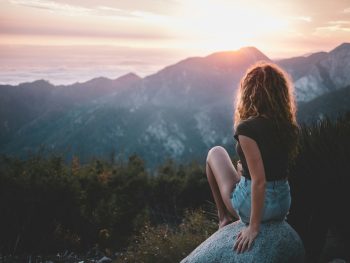
How To Care For Curly Hair While Traveling
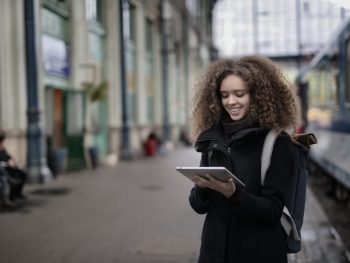
Planning the Gap Year Adventure Before College for Students

Essential Tips for Getting Car Insurance Before Your Road Trip
5 health factors to consider before traveling.
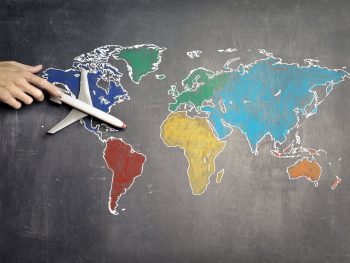
10 Best International Destinations For Gift Buying
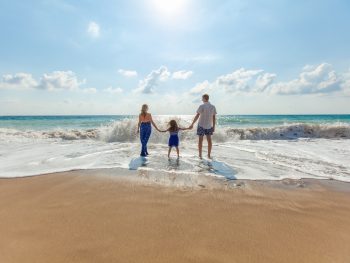
How to Travel With Kids & Stay On Their School Schedule
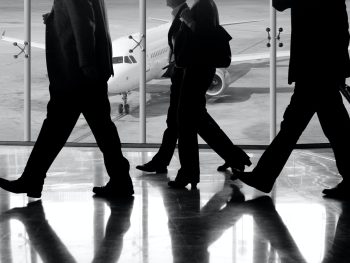
4 Tips For A Stress-Free Work Travel Experience
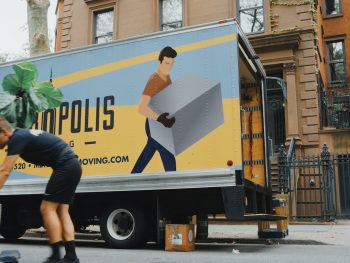
Essential Things You’ll Need To Do If You Want To Move Abroad
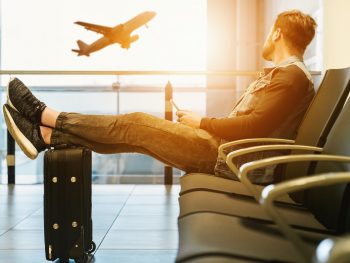
Tricks from Fit Travelers: What to Carry To Stay Fit While Traveling
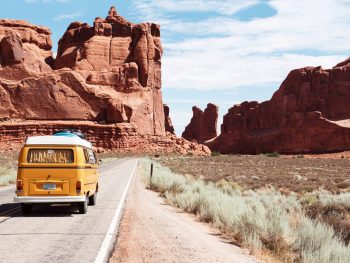
How To Save On Fuel When Going On A Road Trip
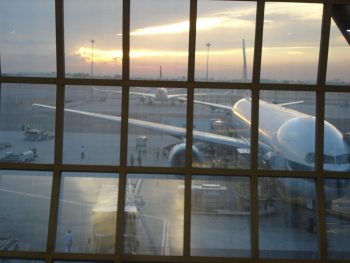
Planning a Trip? Here are the Countries That Lifted Covid Restrictions

Popular Beach Activities That You Might Want to Try
This post may contain affiliate links. If you make a purchase through a link, I receive a small commission at no additional cost to you. Read the Disclosure .

Reader Interactions
August 31, 2019 at 12:05 am
As fulltime travellers, we’ve learnt about slow travel the hard way. After crazy travel year one, we have learnt the art of being more mindful and putting the handbrake on,getting the bikes off and just wondering around a village. We’ve still not got it quite right as we need a better balance with our blogging activities, although as British Rail says, ‘We are getting there.’
August 31, 2019 at 4:52 am
Even back in my 20s I couldn’t understand why people would want to do “31 countries in 33 days”! I could never bring myself to do it and always wished for a month in a little Greek fishing village and a vespa! I honestly don’t know what people actually get out of “fast” travel!
August 31, 2019 at 9:30 am
For me Slow travel is definitely about connecting more and less of ticking off boxes. Although I wasn’t like this all the time but have learnt to embrace life and live in the moments more. Great blog post!
August 31, 2019 at 2:12 pm
This is THE best way to travel! Thanks for sharing this…funny because I have a post about this planned too, it’s like the new thing lol!
August 31, 2019 at 9:53 pm
Definitely the way to travel! I used to pack so much into our trips, but now I’ve realised it’s far more interesting – and less stressful – to spend more time in places really getting to know them.
September 12, 2019 at 3:59 am
Great blog thanks for sharing…
October 31, 2019 at 5:07 pm
We totally agree with traveling slowly! It’s important to take your time and really experience where you are. Take in the scene and meet local people. It’s so much more worth it than rushing through a vacation hitting the “main spots”. Live wild, be free, take it slow. You’re an inspiration for us Lisa!
November 16, 2019 at 8:47 pm
It’s always a balancing act to be able to slow down, but still see the sites that you want. It’s been a 40 year learning experience, but we’re getting better at slowing down. I can’t wait until we’re retired, so we can really slow down and stay in each place longer. Thanks for all the info.
November 16, 2019 at 9:09 pm
I love slow traveling! It really allows you to get to know the people, the culture, and the environment. I think everyone should experience this way of travel at least once.
November 16, 2019 at 10:16 pm
I prefer slow travel, but it hasn’t always been possible. It is a great way to immerse yourself in the culture and country. Great post!
November 18, 2019 at 12:08 am
I really like the idea of this, I think people in general need to slow down and just enjoy the moment 🙂
November 23, 2019 at 8:07 pm
I’m trying to find the balance between deeper connections with locals and experiencing everything. This post came at just the right time for me. Thanks!
November 24, 2019 at 5:37 am
It’s a very important post you’ve written, I think. Slow travel is such an amazing experience, I believe it’s a whole different experience to not-slow travel.
I’m a slow traveler myself too, recently backpacked across South America, couchsurfing, volunteering, learning Spanish, talking to locals and I feel that it changed my perspective on life.
Thank you for writing this important post with concrete tips!
December 12, 2019 at 7:51 am
this is great post
September 29, 2020 at 9:23 am
i have a question how can i travel to europe in cheapest way? im indian i have to face lot of problem to get visa please help me.
December 18, 2020 at 2:55 am
September 26, 2022 at 5:51 am
very nice article !! Your blog is full of information, Thanks for sharing with us.
[…] tourist areas and meet the real locals, it’s pretty special. That is why I recommend “slow travel” because you need to see the sights of course, but then you need to take time to visit the […]
Leave a Reply Cancel reply
Your email address will not be published. Required fields are marked *
Save my name, email, and website in this browser for the next time I comment.
This site uses Akismet to reduce spam. Learn how your comment data is processed .
Be Inspired

Subscribe now and get my downloadable FREE Travel Tips Guide with all my best tips to help you travel cheaper, safer, and easier today! No spam, I promise!
- Celebrities
- Diseñadores
- Modelos & Iconos
- Complementos
- Tratamientos
- Entrenamiento
- Alimentación
- Calculadoras
- Canciones infantiles
- Dibujos para colorear
- Diccionario
- Nutrición y dieta
- Gastronomía
- Restaurantes
- Manualidades
- Economía doméstica
- Medicamentos
- Enfermedades
- Guía de Japón
- Horóscopo chino
- Numerología
- Test de compatibilidad
Slow travel: la forma de viajar que te va a encantar
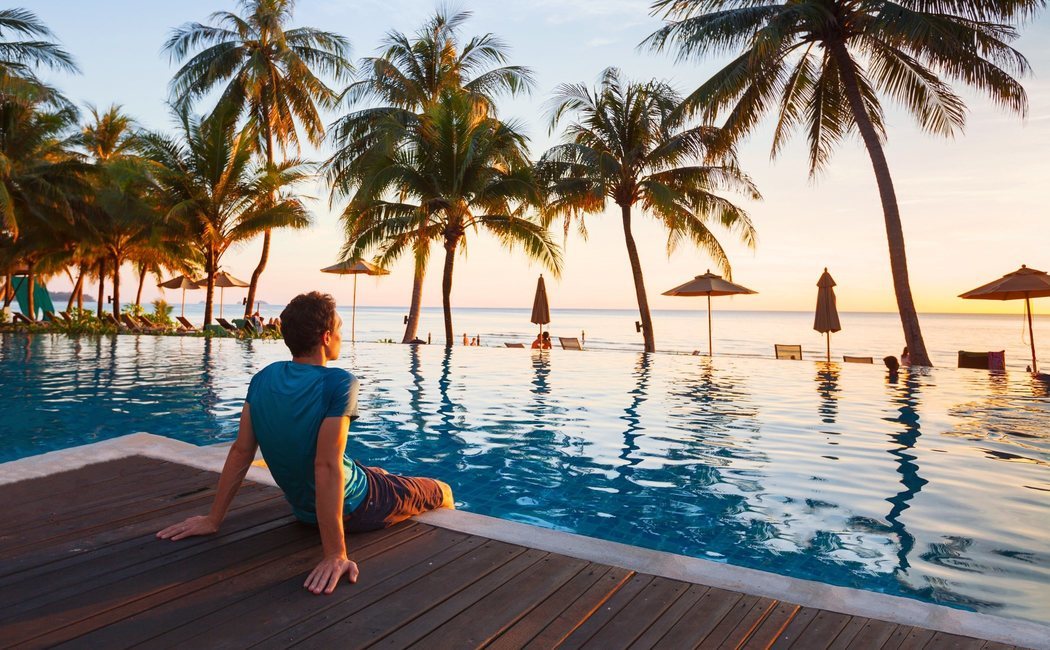
¿Qué es el slow travel?
Vivimos en una sociedad en la que tenemos la sensación de tener siempre prisa . Trabajos cada vez más estresantes, que exigen mucho de nosotros y no suelen estar remunerados de la misma manera, deben añadirse a la larga lista de cosas pendientes que podemos tener por hacer, sobre todo si vives de manera independiente o si tienes familia a tu cargo.
Todo el mundo parece tener prisa y las cosas que deben hacerse del mejor modo posible, por lo que la presión que podemos sufrir es siempre muy elevada y esto conlleva problemas de salud, además que psicológicos. Existen varias maneras de saber si estás estresado , pero normalmente los nervios suelen manifestarse afectando de forma directa a tu estómago, cabeza o bien con la alteración de sueño . En el campo psicológico notarás que estás estresado si estás bastante más irritable, si tienes cambios de humor, te sientes abatido o crees que no vas a poder con todo lo que tienes pendiente.

Por eso, es normal que muchas personas trasfieran estos nervios a sus vacaciones , ya que es una actividad más que deberás planear de antemano y, seguramente, querrás que salga lo mejor posible. Sin embargo, son unos días de descanso , por lo que deberías poder dejar los nervios y el estrés a un lado con tal de poder relajarte y descansar, que es lo que más necesitas después de un año tan duro.
Hacer un viaje largo o ir con la familia pueden ser aspectos estresantes. No obstante, ha surgido una nueva forma de viajar que te ayudará a conseguir podemos disfrutar de estos días de fiesta de manera que no te sientas tan nervioso y puedas realmente gozar de la tranquilidad y el respiro que te mereces. Descubre qué es el slow travel y cómo puedes disfrutar de una forma de viajar que te va a encantar .
En un mundo en el que todos tenemos prisa, nos hemos convertido en turistas que queremos hacerlo todo en muy pocos días , haciendo que nuestras vacaciones lleguen a generarnos mucho estrés, desde el momento en que las planeamos (buscando el mejor precio o la mejor oferta calidad/precio) o bien mientras disfrutamos de las mismas, pensando en todo lo que podemos hacer en el destino y, a veces, queriendo abarcar más de lo que deberíamos.

Por esto, es importante que si queremos hacer unas vacaciones para relajarnos debamos limitarnos, no sólo a hacer de turistas , sino también a relajarnos y a pasárnoslo bien. Siendo de esta manera esencial que aprendamos a disfrutar de nuestras vacaciones planeándolas de manera que podamos hacer cosas que nos gustan, pero sin querer exprimir demasiado el tiempo, puesto que de lo contrario seremos unos turistas estresados y no podremos disfrutar de la experiencia como se merece. Lo esencial no será ir a un destino para hacer muchas cosas, cansarse y poder demostrar a los demás todos los sitios que hemos visitado, sino viajar y disfrutar de la experiencia , más allá de lo que puedan pensar los otros, haciendo lo que a uno le gusta y sacando partido a sus días de vacaciones en la justa medida, porque ya que no se trabaja lo que se debe hacer es disfrutar y descansar.
El concepto de slow (despacio, en español) se aplica a muchas disciplinas hoy en día. Por ejemplo, el slow cooking reivindica la cocina tradicional y busca diferenciarse del fast food, es decir, de la comida rápida, puesto que cada día son más las personas que prefieren comer con tiempo y comida más elaborada, ya que seguramente será mejor para su salud y podrán disfrutar más de la experiencia.

Durante las vacaciones son muchas las parejas que suelen pelear, los problemas que pueden surgir en la familia y la tensión que pueden sufrirse al organizar el viaje, querer hacer demasiadas cosas o la presión de encontrar la mejor oferta. Así pues, el concepto de slow se aplica a viajar con el slow travel , lo que reivindica el poder disfrutar de unos días de fiesta con mayor tranquilidad, con tal de rebajar los nervios vividos durante el resto del año y poder disfrutar tranquilamente de las vacaciones, reduciendo el estrés.
Mucho más Bekia Viajes en Instagram
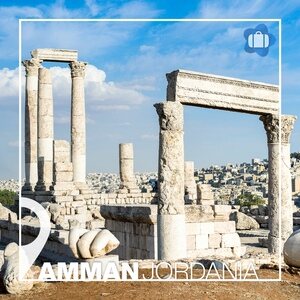
La mayoría de alojamientos para el slow travel suelen ser en zonas rurales o de montaña, alejados de las grandes ciudades y de las zonas de playa, las cuales suelen ser las más concurridas en verano . Suelen, además, combinar el concepto de slow cooking o slow eating, para que también los turistas puedan disfrutar de la comida con más tranquilidad, regalándose unos días de vacaciones diferentes , disfrutando del paisaje, de la comida y de la zona, sin prisa y cuidando de su salud mental, la cual merece también un descanso durante estos días tan importantes del año. Porque ser un turista no tiene porqué ser estresante , dedícate unos minutos, sin nervios, para ver si el slow travel es el mejor concepto de vacaciones para ti este año.

Artículos recomendados
Travelling is ultimately a tool for growth. If you want to venture further, click this banner and take the leap 😉
- Meet the Team
- Work with Us
- Czech Republic
- Netherlands
- Switzerland
- Scandinavia
- Philippines
- South Korea
- New Zealand
- South Africa
- Budget Travel
- Work & Travel
- The Broke Backpacker Manifesto
- Travel Resources
- How to Travel on $10/day
Home » Responsible Travel » The Art of Slow Travel (How to HACK Travel 2024)
The Art of Slow Travel (How to HACK Travel 2024)
I’m going to let you in on a secret. I don’t like bucket lists . I know, I know, I’m aware of the irony that a travel blogger doesn’t like a cornerstone of the travel industry.
The thing is, I feel like we go travelling and miss the entire point of travelling . Somewhere between seeing the fifth and seventh wonder of the world, the world stops seeming so wonderful.
So what do I like instead?
I like squatting in the corner of a kitchen in a far away country making the perfect tortillas with my Guatemalan neighbour. I like making flashcards for a language I don’t speak yet so that I can tell dirty jokes with my Portuguese work mates.
I want to take time to become neighbours and friends and familiar with the places I travel to.
I like to travel slowly.
Slow travel is a way of structuring your travels so that you are completing quests and seeking meaning rather than ticking things off your itinerary. There’s also a near spiritual satisfaction when you know that you have earned your way in blood, sweat, and literal tears to make it to a destination.
It can be intimating to Marie Kondo the crap out of your itinerary that no longer serves you joy. But trust me, my dude, the sweet reward of slow travel is so worth it.
Come with me as we dive into the world of letting go of where we need to be. Come learn about slow travel.
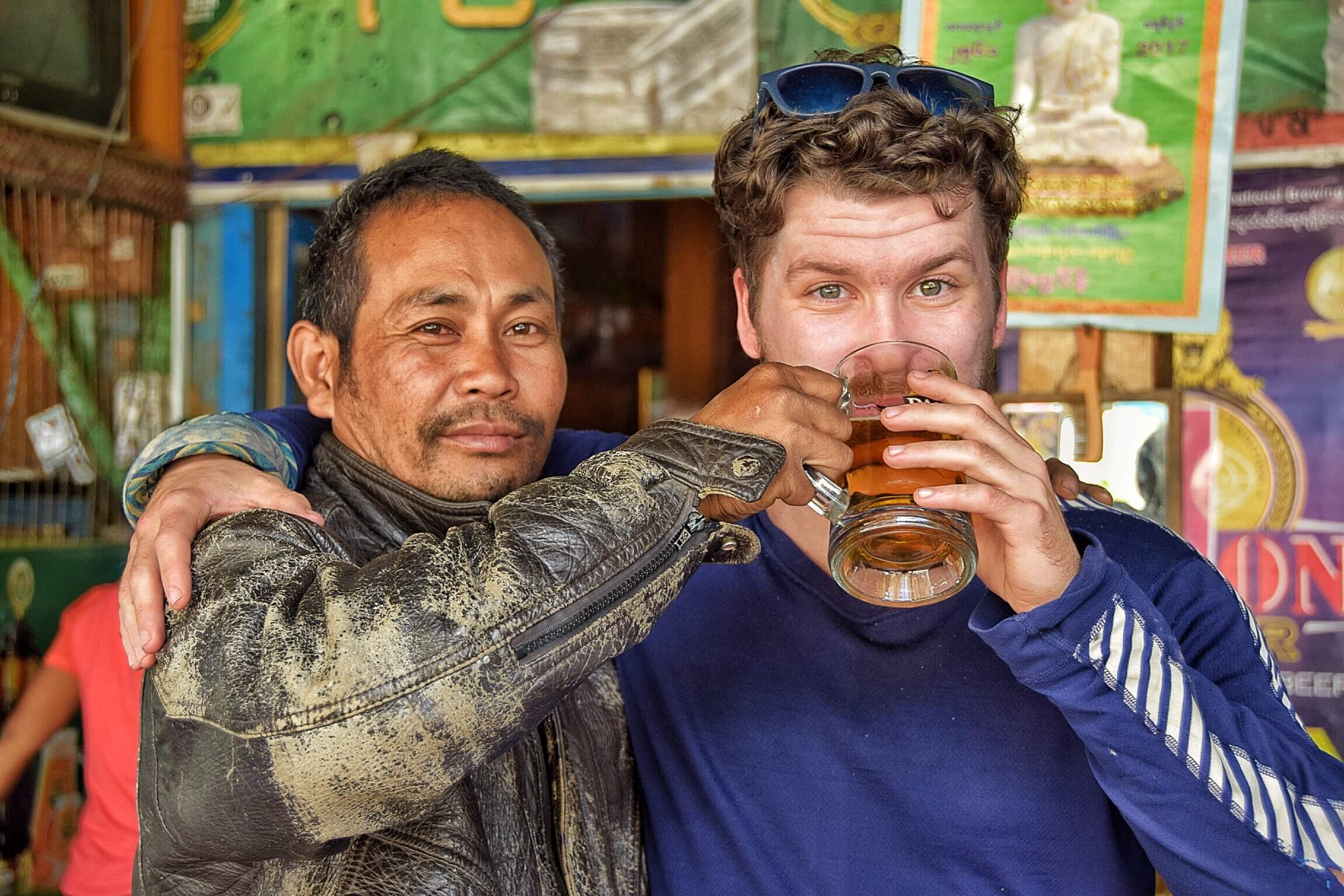
The Broke Backpacker is supported by you . Clicking through our links may earn us a small affiliate commission, and that's what allows us to keep producing free content 🙂 Learn more .
Slow Travel Origins
Why should i travel slowly, how to slow travel, ultimate slow travel experiences, slow travel faqs, the slow travel finale.
Slow travel is actually a splendid offshoot of the slow food movement. The slow food movement arose in Italy during the 1980s as fast-food chains like McDonalds attempted to infiltrate and outcompete local businesses.
Italy said, no – but in Italian (which is really just an overly-emphatic ‘no’ with wild hand gestures), and the slow food movement was born. It emphasises a connection to place and valuing local businesses and their high-quality products over cheap, mass-produced food.
Essentially, it’s a movement of quality over quantity .
Slow travel , then, is a f*ck you to the vacuous Insta-famous travel bloggers and their fast food take on travel. It’s about throwing your caution to the wind and travelling without a phone.
You prioritise connection with local people over another selfie with the Eiffel Tower. It’s about sitting in a hole in the wall store on tiny plastic chairs and trying the best soup you’ve ever had in your life. As you look around, the smallest details create an imprint on your mind. So this is what travelling is about .
It’s about writing your own manifesto . Slow travel is the whole reason you hit the road in the first place.
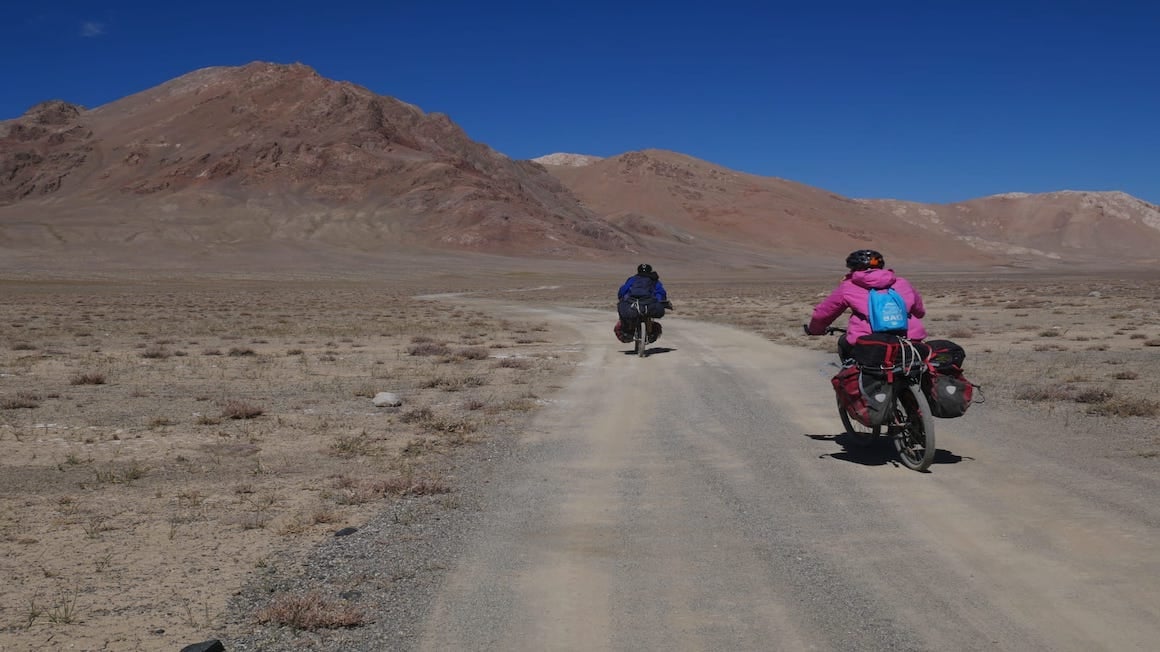
Skip Your Itinerary
For me, there’s a mindset shift that is crucial to slow travel. My rigid itinerary would have me up at 6 am to try Trip Advisor’s best croissant and then shuttle on to the top 10 places you have to see before you die. You then rinse and repeat for 12 exhausting days. It’s a life-changing experience and then we go back to clocking in and out of the 9 – 5.
My slow travel itinerary would have me impulsively buy a bus ticket to a town I’d vaguely heard of. It gives you time to scour local newspapers for some part-time work. There’s time to learn the recipes of my housemates; eat at local restaurants. It’s about getting under the skin and becoming part of the fabric of the town.
I let my travels genuinely change me.
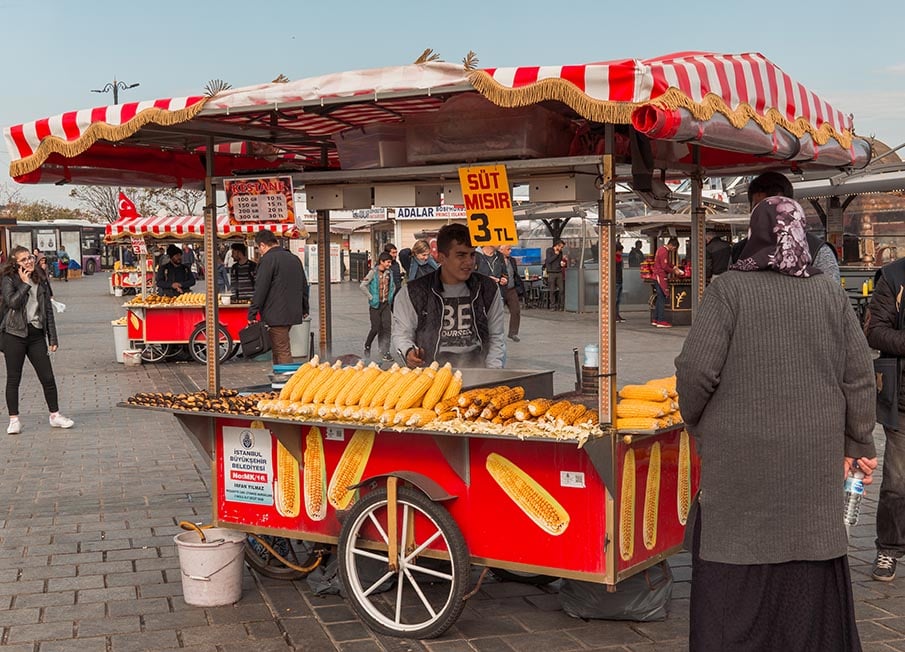
But if we want our travel experiences to change us, we’ve got to let them in. When I found myself working on a sailboat, we ended up spending a lot of time in the Caribbean. Every Monday morning, the cruise ships come to St Thomas and every Monday evening the cruise ships leave.
The times we ended up sharing the island with twenty thousand cruise ship passengers, a strange sense of helplessness came over the crew and me. Here were all these people in such a rush , that they seemed to miss the entire point of their vacation.
Not only did they not seem relaxed as they ran about the island, but they seemed to miss all the little details about the streets too. It was like travel knocked on the door and they said, go away I’m looking to go travelling.
I thought it would be great if someone missed their cruise ship home. How much more interesting would they find this island if they worked in the bar for a few months and made friends with weirdo sailors like us. I wanted to show them through the backstreets and local buskers.
I wanted them to travel slowly.

Unlock Our GREATEST Travel Secrets!
Sign up for our newsletter and get the best travel tips delivered right to your inbox.
If the most simple way of describing slow travel is quality over quantity, then I think it becomes clear why you should do it – to enhance the quality of your travels!
How exactly does travelling slowly enhance the quality of your travelling? I think it prevents traveller burnout . You know the feeling: you get back from an exciting and jam-packed trip more tired than you left. You need a vacation from your vacation!
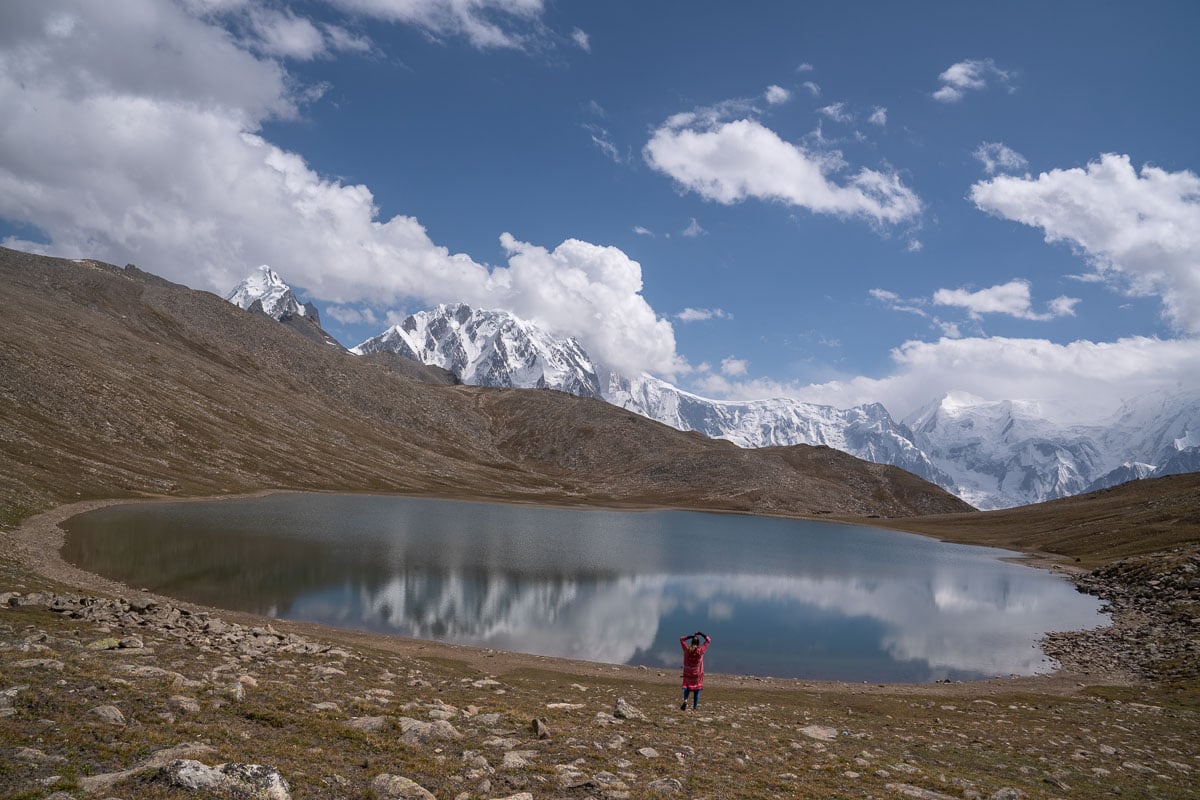
By slowing down, you get back to the roots of what it means to take time out from your life. It’s not to see as much as you possibly can – it’s about restoring yourself and your energy levels.
Slow travel is also far more sustainable, far less expensive, and far more enjoyable than a high-speed tourist chase of attractions.
Slow Travel and Sustainability
Yeah, look, the world can feel pretty f*cked. It’s on fire, it’s running out of water, plastic is choking turtles, Keeping Up With the Kardashians is in its 20th season… And yet even as we look on at this slow-moving asteroid of destruction, it can feel like we have very little in our power to change the course of action.
We are too accustomed to next day shipping, international flights, and being able to buy travel experiences like we do new clothes. If I want to go see the Great Barrier Reef, provided I have the money, I can leave tomorrow and see the damn reef.
So on the one hand, we know that in order for there to be a Great Barrier Reef in thirty years we need to take drastic action. On the other hand, that round the world ticket just went on sale…
Do you travel fast or travel slow? For the sake of being a responsible tourist , I think you should travel slowly.
The first step is to take this literally. If you set yourself on the quest to see the Great Barrier Reef, you understand that the journey is as enjoyable as the destination.
Consider how you will arrive at the reef? Will you fly into Cairns and take a boat tour one day, and a scuba diving trip the next, before flying to the Whitsundays and staying the night?
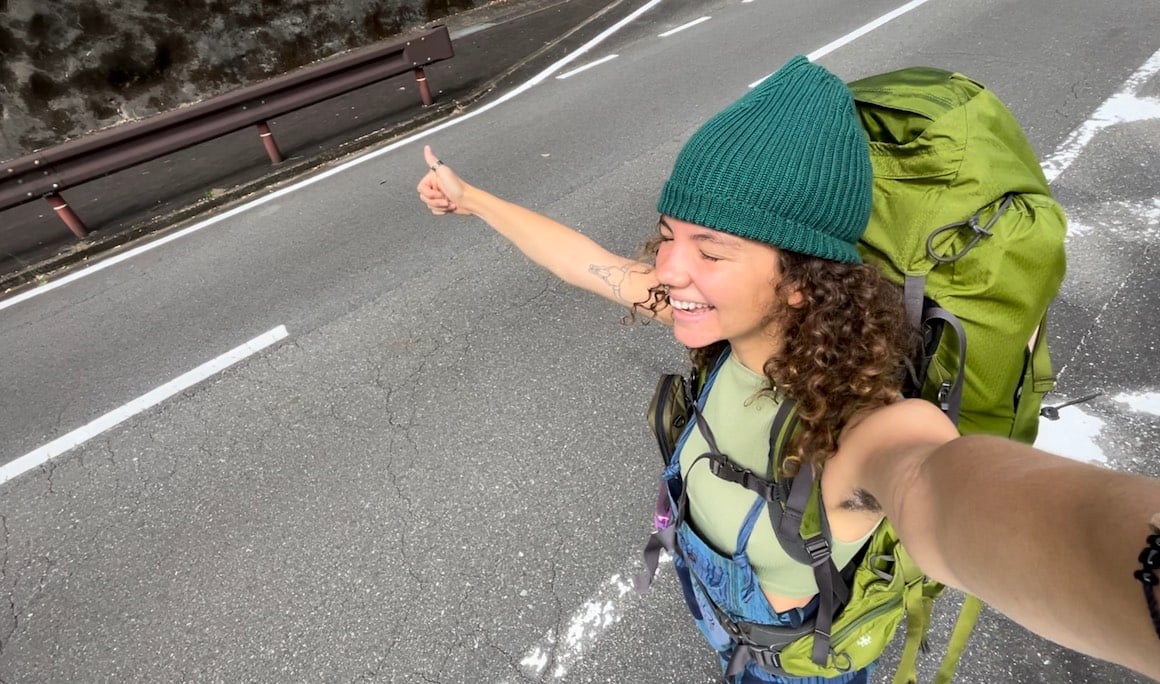
Or will you hitchhike to Cooktown? Will you live the boat life and sail your way from Bundaberg through the Torres Strait? You could swap hotel chains for homestays, Couchsurfing, or Airbnb. A few weeks instead of a few days? There’s always local produce to eat – or even try your hand at spearfishing (where it’s permitted, of course).
Not only do you cut your carbon emissions by flying less and eating local, but I would argue you see the ‘real’ Great Barrier Reef. Australians are known for being sarcastic, a little abrupt, but on the whole, decent people. If you’re just another tourist flying in and flying out, you’re going to get the bare minimum from the locals.
If you slow down – or do something a bit out of the ordinary like get seasonal work or hitchhike into town – you might get a few funny looks at first. “You wanted to see the reef, did you mate? So what, you had to stay for the season to do that, did ya?”
But underneath the bluntness, is an appreciation that someone slowed down and stayed .
Slow Travel and Combating the Travel Blues
I think there is pressure these days to ‘see it all’. You might never come back! Quick, make sure you get a selfie and post it to Instagram – or you might as well have not come!
This need to travel glued to your phone and to tick off destinations keeps you in a constant state of stress. Now while the best travel pushes you, it shouldn’t leave you feeling like a pile of limp, wet noodles.
The fact of the matter is, you are never going to see it all. So you might as well make what you do see worthwhile. Going back to the Great Barrier Reef example: rather than going on one scuba diving trip before flying back to your soul-crushing 9 – 5, you could live in Cairns for a few months.
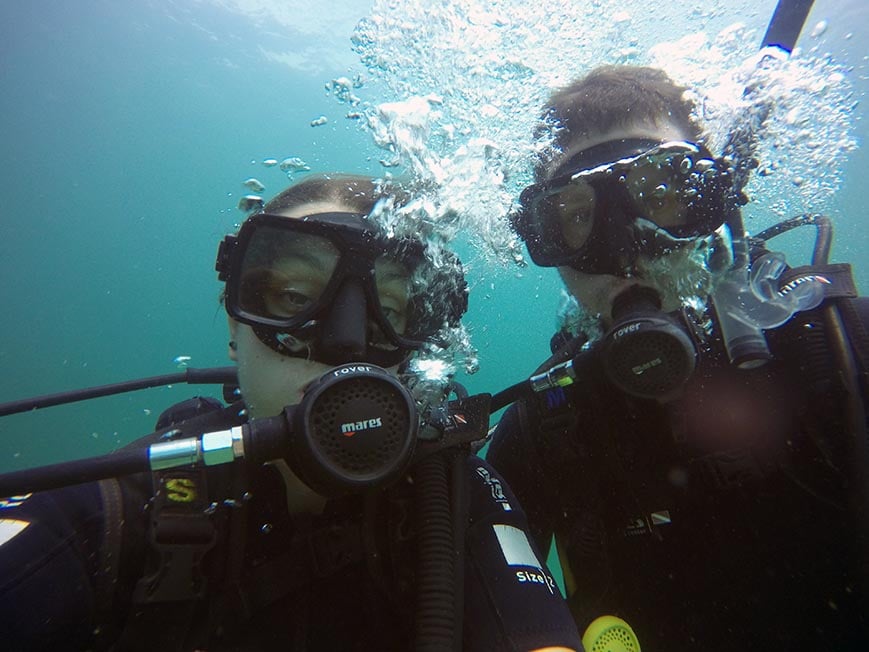
Instead of being ushered onto the boat after two hours of splashing in the water, every morning at 7 am, you could swim with the fish before making your morning coffee. You’d get to freedive, snorkel, scuba dive, sail, and generally play water baby goodness as part of your daily routine.
Travel is supposed to be a step away from the grind culture. You should travel to offbeat locations to challenge yourself, sure. You should learn new skills, new languages, new ways of life. But there’s no need to attach KPIs to your regimented travel routine. You’re not going to “fail” travelling if you don’t see the best places in the worl d .
You’re going to beat the travel blues by slowing down; by living somewhere and making a morning routine out of what most people consider a mere bucket list item .

Wanna know how to pack like a pro? Well for a start you need the right gear….
These are packing cubes for the globetrotters and compression sacks for the real adventurers – these babies are a traveller’s best kept secret. They organise yo’ packing and minimise volume too so you can pack MORE.
Or, y’know… you can stick to just chucking it all in your backpack…
Slow Travel IS Low Budget Travel
This ties into the next point. Slow travel is cheap. So while I could write an epic guide to broke backpacking , I could also just tell you to slow down .
But that doesn’t make any sense? How does staying somewhere longer turn out to be cheaper?
The thing is, it’s not usually the place itself that is expensive – it’s getting there! The main expenses around travelling are:
- The overland transport
- The accommodation
- The attractions
So it follows if you fly from Paris to Rome to Madrid and back to London over the course of two weeks – that’s going to add up!
Limiting your timeframe means you have fewer options and can’t keep an eye out for cheap flight deals, for example. You also take away the slower travel options of trains, buses, hitchhiking, or van life. When you HAVE to be somewhere, you pay for immediacy.
Once you arrive in a place, the concept of slowness continues to save you hard-earned dosh. If you don’t have anywhere in particular to be, you can opt to scout out a sick local homestay. You could also try fly and swap vacations – the most authentic way to experience life as a local IMO.
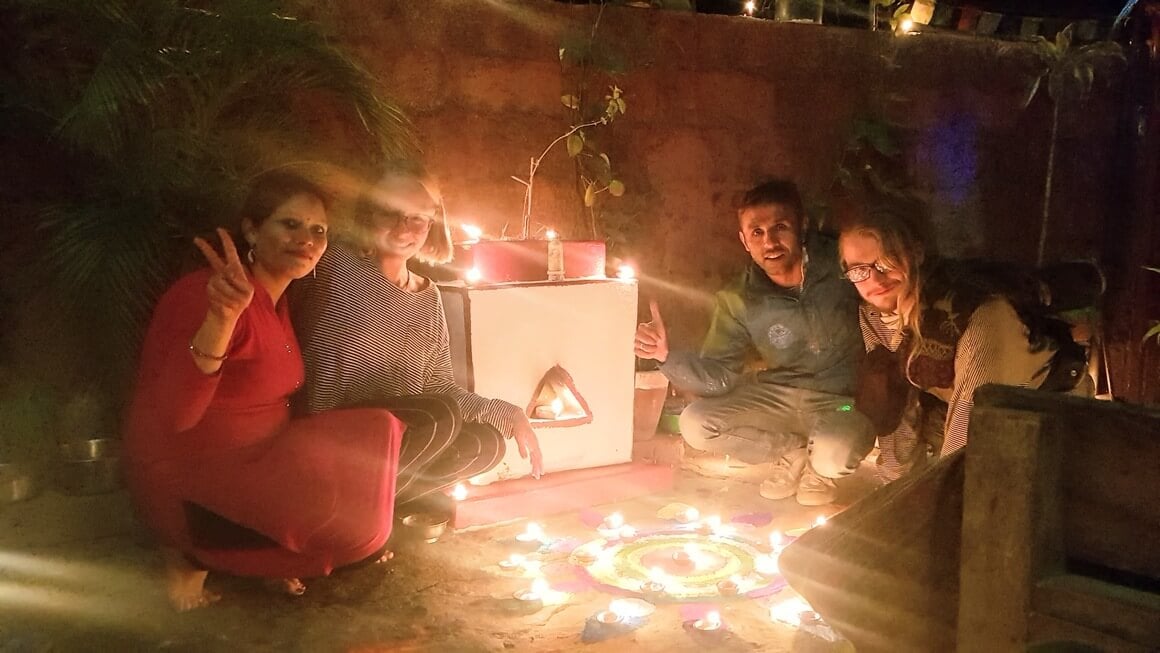
All of this cuts down on your accommodation costs. This leaves you a good chunk of coin for food and touristy attractions.
If you really want to stretch your coins, you could learn to dumpster dive for your food. Even if you don’t fancy plating up discarded food, slow travel can lead to cheaper and higher quality meals.
Slow Travel and Quality
Travelling slowly is simply more enjoyable. Quality is a bit of a sticky, and deceptively unknowable concept. It really asks, what is best?
The dominant cultural messaging for the last few generations was that you needed to see everything, do it all, be well rounded, but don’t lose your job! This led us to cram ourselves into these rigid little itineraries that leave no room for a regenerating planet – or self.
Luckily, we’ve said ‘no, it’s not a phase, mom’. Slow travel simply feels better.
Like anything, there’s an art to doing slow travel well. But, also like anything, it’s better to get out there and start doing it – even if at first you are doing it imperfectly.
Remember, that above all slow travel is about connection . It’s about seeing life from a perspective other than your own.
I feel like there isn’t a whole lot of point in giving you a prescriptive guide on travelling slow – it defeats the whole point. The point of opening up your travels to chance and spontaneity is to ignore travel bloggers like me and make your own adventure!
Buuuut, here are a few tips to get you started with travelling slowly:
- Give up some “purpose” – i.e leave gaps in your itinerary!
- Train, don’t plane.
- Get a little lost.
- Learn a new language .
- Spend more time in one place .
One way you can foster a genuine connection with a place while spending more time there is by volunteering. Giving back and getting involved in a local community is the core value of slowing down your travels. You get to sink your teeth into a new culture and learn more about the people there.
While I am quite comfortable turning up in a new town and checking the local notice boards for volunteering opportunities, I think there’s something to be said for organising a volunteer placement before you hit the road.
You can use a platform such as Workaway or, our personal favourite, Worldpackers ! It’s a review based platform specialising in connecting volunteers with meaningful projects all over the world.
The website is easy to use and you know exactly what to expect out of a program before you get there. And broke backpacker readers get a 20% discount on their subscription!
So now that you’re juiced up and inspired to slow down and perfect the art of meandering, what kind of epic travel experiences do you have to look forward to?
You can start by exploring your hometown! Maybe there is a local farm to table restaurant that you’ve always wanted to try, or a pottery class that you’ve always wanted to attend! It pays to think of your own town as somewhere full of layers and hidden secrets, too.
When you do hit the road, and you want to do so sustainably, there are a few epic slow travel experiences that come to mind.
Living the Vanlife
Your first foray into the world of travelling at a snail’s pace may involve getting yourself a little home on wheels. In the same way that a snail goes about life with their house on their back, living the van life means taking your home with you.
Living out of your van encourages you to appreciate the journey between destinations. The road less travelled is usually bloody gorgeous – and has way less traffic. When you do arrive in a new town, you already have your accommodation sorted!
Vanlife is wonderful because your possessions are pared down, your pace of living is slow, and your appreciation of long term slowness is increased. Plus, it’s cosy!
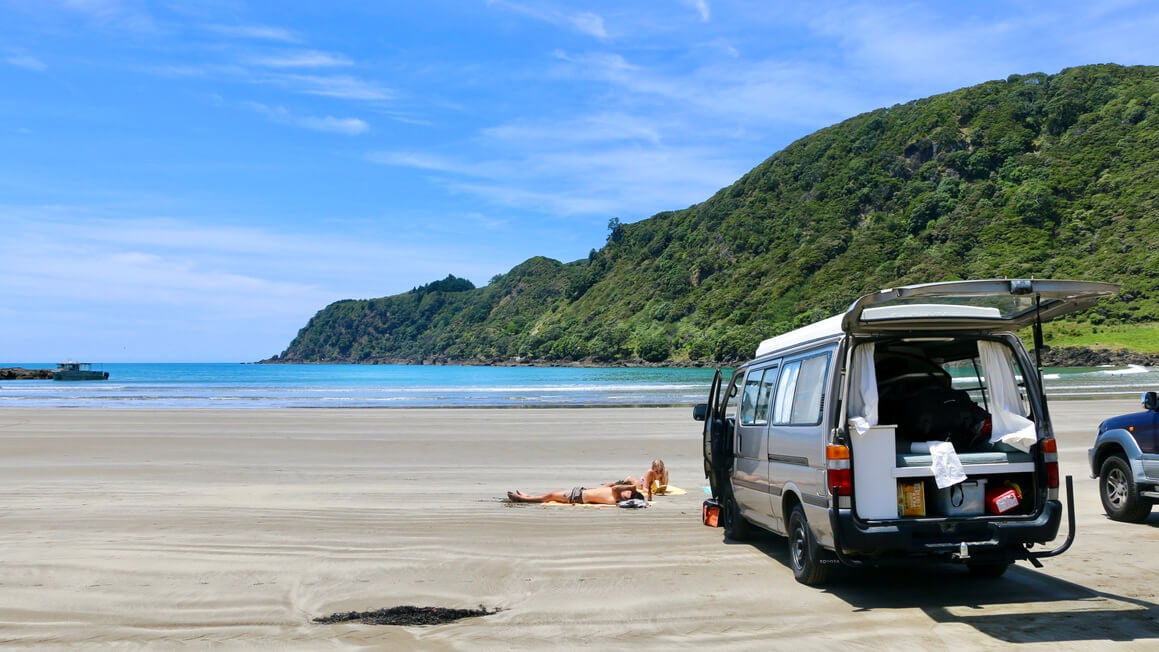
But you know what? Vanlife is also grotty, challenging, and hardly ever goes to plan.
I remember living out of my van and driving with my mate on a South Island road trip . Now, I knew that it was winter and I knew that New Zealand was prone to flooding and I had even checked the weather forecast and seen a hectic storm was on the way. But I (recklessly) said, fuck let’s keep driving.
We woke up to discover that we couldn’t drive onwards in the morning because the road was closed. Oh shit, no worries, we’ll just drive back to where we came from.
Except that road was closed too. We found ourselves stuck in a town, with no motel, in the middle of the largest flood in 10 years.
After getting us bogged, and then unbogged, and restarting our battery in torrential rain, I made the decision of any rational person: I said, well we can still go to the pub. Drinking in a local pub with the road closed in two directions is probably the best thing that could’ve happened to someone who decided to keep driving through a flood warning!
Anyway, a fair few drinks were shared. In the end, we had multiple offers for a place to stay until the roads were open again. Vanlife is not always easy and it’s not always pretty. But man, it certainly forces you to slow down and forge connections in the strangest of places!
The Dreamiest of All Slow Travel – Boat Life
Sailing takes slow travel and turns it into poetry. You rely on the wind and the currents to take you from A to B. Having the weather as your decision-maker forces you to think about your travel in terms of seasons.
Working so hard to reach a destination makes it that much sweeter – and the destinations are already pretty sweet. But after sailing across the Pacific for 30-odd days, the first sight of land touches the sublime. Earning your way to a destination in blood, sweat, and night watches is one way to ensure you have a deep and unending appreciation for a place!
The old salts live by the phrase, the best plans are written in the sand at high tide . You make a plan to spend a season sailing the Caribbean. But then, you realise that there is an excellent weather window to cross the Atlantic , and you heard that the wine over there is really quite nice.
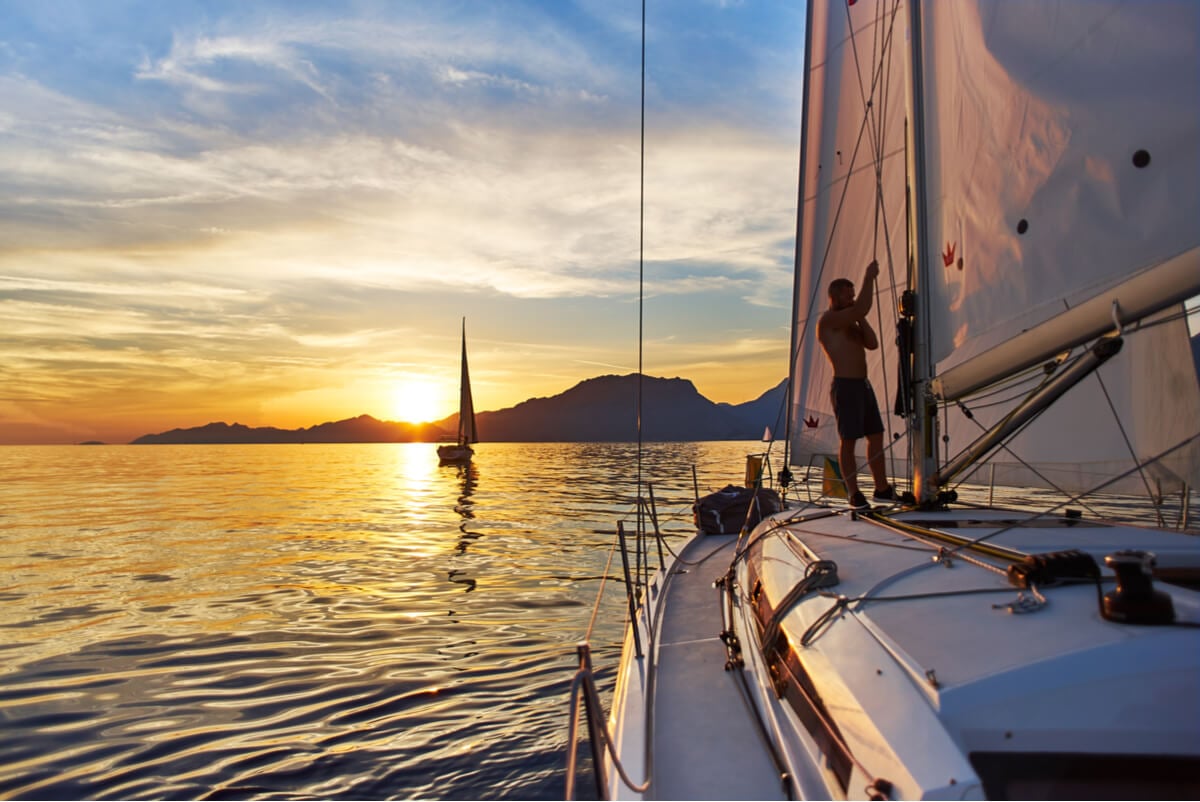
Provided your boat is in tip-top shape and your crew haven’t mutinied, you may find yourself somewhere in Portugal thinking, huh, this is nice .
Sailing is also environmentally sustainable. The adventures you and your floating tin have really drive home this sense of responsibility for this pale, blue dot we call home. And that, more than anything, is the point of travelling slowly.
Hitchhiking
So this one time in Mexico, my pet chicken and I stood on the side of the road in the Yucatan and decided to hitchhike.
My chicken ended up falling asleep because it was taking a while for someone to stop for us. I kept myself busy by spotting shapes in the clouds. It’s truly astounding how beautiful the world is when you’ve got nowhere to be.
Eventually, someone pulled over and offered us a ride. Of course, we got to chatting. There is not much I like more than a good old fashioned chit chat with a stranger. The next thing I know, we had taken a turn from the main highway in order to find the best taco my new friend remembered having as a kid.
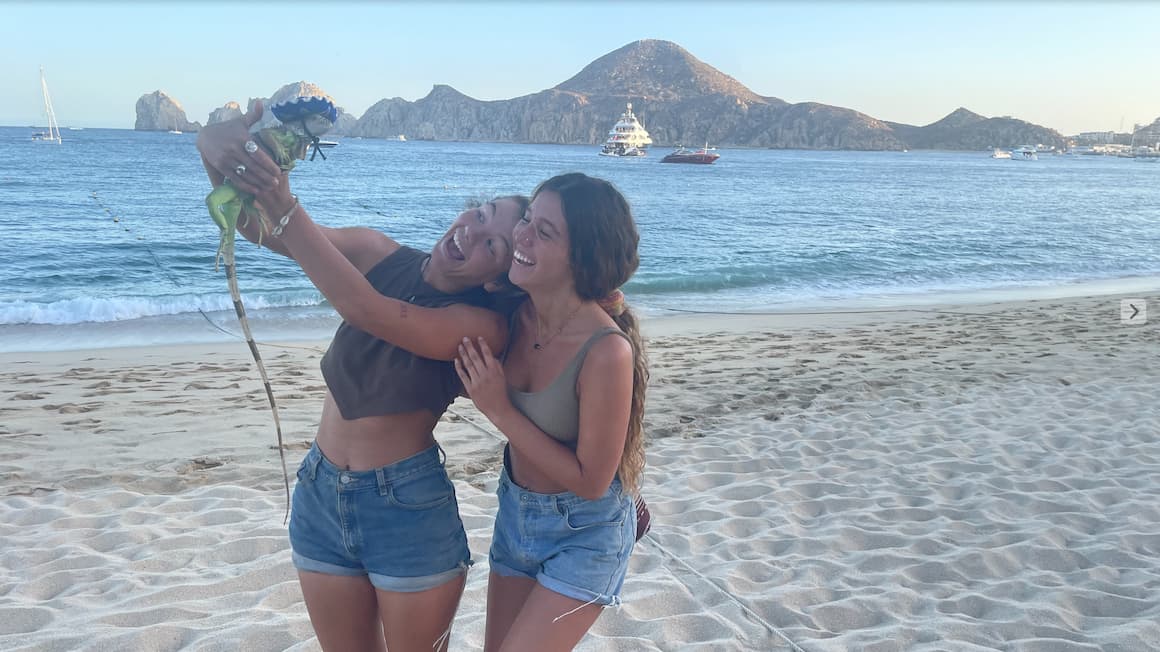
The best tacos turned into sampling the best mezcal in town which somehow turned into karaoke in a small bar in rural Mexico. My chicken was given so much free food that she fell asleep in the middle of the blaring karaoke music!
When I started that morning, I had absolutely no idea where the day would take me. Perhaps I’d end up camping by another beautiful beach again. Perhaps I would make it closer to the border. But as it turned out, I made a good friend and was privileged to try the best tacos in the Yucatan.
Hitchhiking is a special form of slow travel because it puts you right in the thick of it. This is what travel is about. You slowly, slowly make it somewhere. The where becomes less important. The when becomes almost irrelevant. The locals become your neighbours and the country becomes your home.
What is slow travel?
Slow travel is about swapping a high-intensity itinerary full of 12 cities in as many days, for a leisurely stroll through the same town for the duration of your getaway. It’s about taking the train, eating local, and camping more often than you get on a shuttle bus to the nearest wonder of the world. It’s essentially about quality over quantity.
How do I start slow travelling?
You can start in your hometown! I think it starts with a sense of curiosity and openness to conversations with people you’ve never met. You leave gaps in your itinerary and deliberately get a little lost. You give yourself more time, rather than less time in a destination so that you can start to follow your curiosity more than your planner.
Why is slow travel the best?
I think it is a more enjoyable and restorative way to travel. You don’t come back from your holidays exhausted! But it’s also kinder to the planet, and better for local economies. There is no need to scale up your adventures and send you money to large travel chains. Instead, you can take tours run by local guides, stay for a couple of weeks in a local homestay, and enjoy the small things about the town you’ve found yourself exploring.
When you do hit the road, ask yourself this: Where do I have to be?
The world is big and life is short, sure. If you can’t ever see everything, then you should enjoy what you do see. By slowing your pace through the world you are able to let the world change you.
Over the years that I have travelled the world, I have certainly seen some incredible landmarks. But a country has never felt ‘done’ to me. I’ve never completely seen or experienced everything a place has to teach me. I have lives and homes scattered across the globe.
There is also a mystical element to the unknown. And slow travel emphasises the element of chance. When you don’t have to be somewhere, you allow spontaneity to guide your travels.
When I didn’t have to cross the border by a certain date, I got to enjoy a night of karaoke in a small-town bar in rural Mexico. I got to make friends that I stay connected with to this day.
This has been slow travel’s ultimate lesson to me. That my neighbours in Mexico have more in common with my friends in Germany than they have differences. We are united in the pursuit of a life in which we feel free.
Next time you plan to hit the road, take your time and stop to chat with the fruit vendor, the bus driver, and the people at the park. You will enjoy throwing your itinerary out the window and allowing the world to change your perspective. I think you will enjoy travelling slowly.
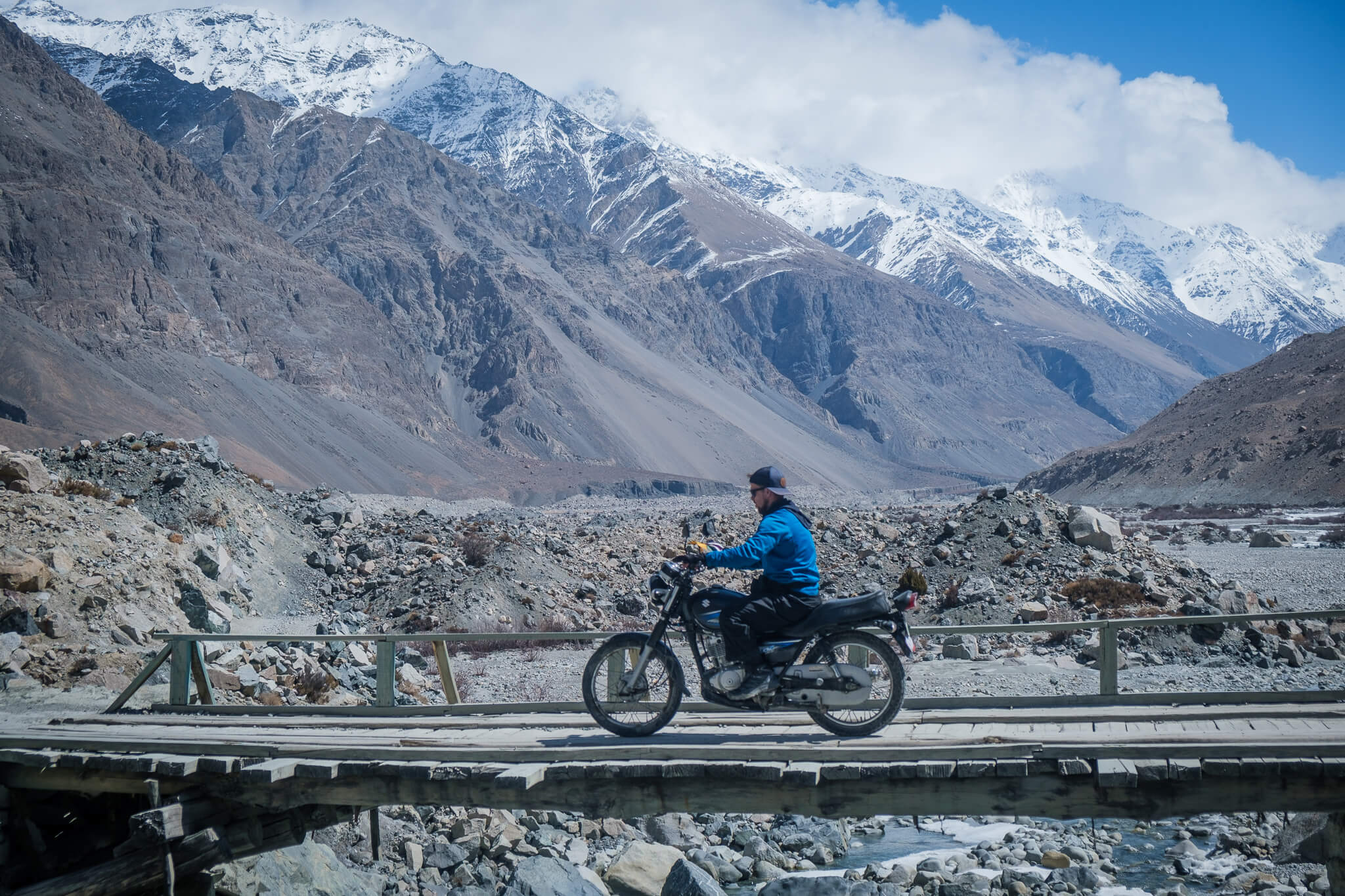
Indigo Blue
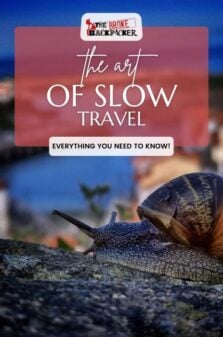
Share or save this post

Love this! We spent last year slow traveling through Mexico and the Lesser Antilles and we can’t wait to get back & sail around the rest of the Caribbean. Im determined to slow travel at least 4 months a year. It’s the dream life.
Love this article!
Great write-up! We are currently slow-travelling the world and much prefer this way of travel to bouncing around from place to place. Slow travel allows you to immerse yourself more fully into a culture and make long-lasting friendships all over the world.
Leave a Reply Cancel reply
Your email address will not be published. Required fields are marked *
Save my name, email, and website in this browser for the next time I comment.
Notify me of followup comments via e-mail.
Solo Traveler
Solo travel tips, destinations, stories... the source for those who travel alone.
Slow Travel: Tales, Tips & Meaning
March 7, 2022 by Janice Waugh

Traveling slow and solo through a city, noticing the planning and design, the pace of the people, the use of green space, the sounds, the cuisine, the architecture, and the street art, I gain a deeper understanding of a city.
The amount of time spent in one place affects the depth to which one can understand the place.
It also affects the variety of experiences one might have from surprise meetings to unexpected discoveries.
Traveling slow and solo enriches travel.

Table of Contents
What is Slow Travel?
Slow travel is about going beyond the tourist sights so that you enjoy the nuances of the culture, meet locals, and live a bit of life as they do.
The more time you have for your destination, the easier it is to experience it more deeply. However, as revealed in the story below about my experience at an onsen, you can have a slow travel experience in a short period of time.
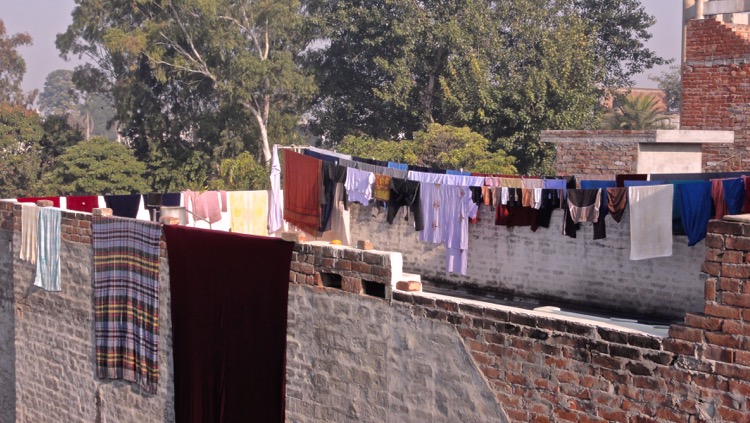
3 Wonderful Slow Travel Experiences
Concentrating on slow travel can result in surprising travel experiences.
Slowing Down a Short Trip at a Japanese Onsen
On a trip to Japan I was anticipating, with great excitement and some anxiety, my first experience of an onsen , a quintessential Japanese experience that involves complete nudity and lots of rules. To complicate matters, I went to a super onsen where none of the staff spoke English. I was the only westerner in the onsen. I tried to do everything in the correct way (I did a lot of advance research), but there were so many pools and showers and washing stations that I know I didn't get it all right. But I did the naked part and, I must say, the experience was far more enjoyable than I had anticipated. It was a day on a busy trip that slowed me down, let me truly relax, and allowed me to watch how the women lived their leisure time in this very particular cultural experience.
Four Days to Understanding in an Indian Home
When I was in India in 2012 I stayed at the home of an acquaintance for five days. I watched the household in action: how the daily cooking and cleaning was done and what the sleeping arrangements were. The pattern of the house slowly revealed itself to me. But it wasn’t until the fourth day that I understood the loud, periodic chants that I had been hearing. I had asked about it on the first day and had been told that it was a call to prayer. Yes, that’s what I had thought. Yet, no one seemed to respond. No prayers were said. Ah, well, I guessed that this was an optional task and, like everywhere, some people are more observant than others.
But on the fourth day, to my amusement I realized that the chant, the call to prayer, was actually the doorbell! If I had been traveling faster, if I had left on day three, I would have held a completely different understanding of the chant in my mind. Slow solo travel gives one the time to see some of the nuances of a culture.
Three Weeks in Bologna and the Ordinary Becomes Extraordinary
Going to the movies when traveling is not something that typically makes it onto an itinerary, unless one is traveling slow. In week two of a three-week stay in Bologna, Italy, I went to the Cineteca di Bologna, which has the largest film and related arts library in Italy. It is also a cinema that shows international films. Standing in the lobby waiting for the film to start, I overheard two women speaking English. It was a rather empty lobby (being a Thursday afternoon) so I gently said hello. I met Linda and Rosie who were both American. Linda's husband Gabe (who is Italian) was also there. When we entered the theater, they invited me over to join them. As we were leaving after the film, they invited me to join them for dinner.
We went to Rodrigo's, Gabe's favorite. At the restaurant, no menu was offered. Instead, after some conversation with the server and a few suggestions in English, our meals were decided. Linda and Rosie had pasta. Gabe and I went for the seafood–four kinds of it. We started with a salad with prawns, then had plates of Mediterranean sole and squid with a platter of monkfish on the side. The squid was so good that Gabe ordered more. Traveling slowly gave me the chance to go where tourists never go, to meet locals, and to experience one of their favorite restaurants. The kindness of Linda, Gabe, and Rosie gave me the type of travel experience that I most treasure.

10 Steps to a Rich Slow Travel Experience
Slow solo travel is one part the time you have available, one part a state of mind, and one part a willingness to get out of your comfort zone and do something new. Even if you don't have a lot of time available to you, it is possible to enjoy the benefits of slow travel.
- Read and watch the culture before leaving. Watch films from the country you're planning to visit. Read novels by their most important writers. Enter into your destination before you leave home.
- Travel on the off season . See your destination without a lot of tourists in the way. Travel in the off season when fewer are going where you want to go. You may find that some tourist sites are not open but you will find more of the local culture.
- Stay where the residents live . Book your accommodation away from the business hotels and in neighborhoods as much as possible. This will help you enter the life of locals. I did this in Bordeaux .
- Go again and again . Whether it's to the destination as a whole or to an experience within the destination, go repeatedly as you will gain more insight and have new experiences every time.
- Eat local and what's in season . Harvest festivals and other food celebrations are great opportunities to live in the culture rather than just look at it.
- Walk or take above-ground transit. See your destination at the pace of your body or the transit system that takes locals where they need to go on a daily basis.
- Sit and watch. People watching is fun at home but it is the best when traveling.
- Go to local sporting events . Cheer for the home team and experience the thrill (and possibly disappointment) of the local crowd.
- Go to a musical event. Whether you speak the language or not, attending a music event is accessible to all and, again, puts you in the middle of a local experience.
- Shop local . Avoid the stores where products are brought in from all over the world. Shop at markets and small stores where you find local products.
Planning a solo trip? Check out our ultimat e guide to traveling alone and our recommended trip planning resources .
Sharing is caring!
Publisher Janice: info @ solotravelerworld.com
Editor Tracey: tracey @ solotravelerworld.com
Sales Simon: simon @ solotravelerworld.com
Get Solo Travel News & Deals
- Create Your Advertiser Account
- Login to Your Advertiser Account
- Solo Travel Statistics
- Media & Speaking
- Privacy Policy & Disclosure

The content of Solo Traveler and any resources published by Solo Traveler are meant for entertainment and inspiration only. Please note that while we have advertising clients promoting destinations, products, services, trips and tours on Solo Traveler and that we endeavour to only work with companies in which we have confidence, we are not responsible for the delivery or quality of their products or services. Every person and every travel situation is different. Your safety, satisfaction and fun traveling solo are your responsibility alone and not that of Solo Traveler, its publisher, editor and/or writers.
PRIVACY POLICY & DISCLOSURE: In accordance with FTC guidelines, I disclose that I may be compensated if consumers choose to utilize links located throughout the content on this site. Additionally, some posts might be sponsored to support this site. Please do the appropriate research before participating in any third party offers. All opinions are my own. Please read our full Privacy Policy here.
- Skip to primary sidebar
- Skip to content
- Skip to footer

My Five Acres
Make Travel Truly Transformational
15 Reasons to Travel Slowly + 10 Tips on How to Do It!
Do you want to travel slowly? Or are you just curious about what slow travel is? Fast travel can be stressful and exhausting, but slow travel has the power to transform . Read our slow travel guide to find out why you should try travelling slowly and get tips on how to do it.
What’s in our guide to travelling slowly?
As full-time travellers, sometimes we travel slowly, sometimes we travel fast. When Stephen’s yoga teaching schedule is in full swing, there are times when we have to be in a new city every weekend.
Fast travel is stressful, exhausting, and soul destroying.

That’s why, when our schedule is our own, we slow down as much as possible. We book a place and stay for a week or more. Or we rent bicycles and move from place to place at 15 km per hour.
Our days of leisurely travel remind us why we started travelling in the first place. These are the moments we live for — and the ones we will remember for the rest of our lives.
If you want travel to be truly transformational try travelling slowly.
If you want to become a slow traveler, read on for our top…
15 Reasons to Travel Slowly + 10 Slow Travel Tips
Get More from Your Travels Grab our 63 tips for a truly transformational trip , our guide to eco-travel and our tips on being a greener traveller .
What is Slow Travel?
Why people travel too fast.
We meet a lot of people when we travel and, naturally, the conversation turns towards where they’ve been and where they’re going during their travels.
It usually goes something like this:
Us: So, where were you before this? Traveller: Well, we started in Paris, then flew to Rome, Amsterdam, London, Venice, and now we’re here. Us: Oh wow, how long have you been travelling? Traveller: 10 days. Us: [Silence as we nod slowly, trying not to let the shock and dismay show on our faces.]
It’s no mystery as to why people do this to themselves. Many feel that this trip to Europe or Asia or America is once-in-a-lifetime. If they don’t see it ALL now, they never will.
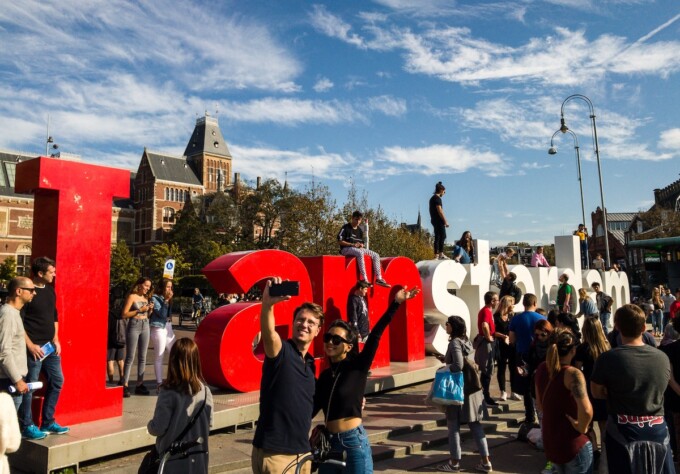
First of all, that’s just not true. Most of us, as long as we make travel a priority in our lives, will get to see more of the world than we think.
Second, if it is your only chance to travel, do you really want to spend the whole time rushing from place to place, never really seeing anything? Do you want to be so focussed on the next destination, the next experience, that you forget to enjoy the moment you’re in?
One of my favourite novelists puts it this way:
We residents sometimes pity you poor tourists not a little—handed about like a parcel of goods from Venice to Florence, from Florence to Rome, living herded together in pensions or hotels, quite unconscious of anything that is outside Baedeker, their one anxiety to get ‘done’ or ‘through’ and go on somewhere else. The result is, they mix up towns, rivers, palaces in one inextricable whirl. E.M. Forster, A Room with a View
This style of travel, where tourists see everything but absorb nothing, is the antithesis of slow travel. And it’s becoming increasingly common.
In our Instagram world, most people only spend as long in a place as it takes to get the perfect shot, then it’s on to the next sight without ever stopping to appreciate or understand what they’ve just seen.
So what is slow travel?
There’s no single definition of slow travel — and you don’t need a long vacation to try it. You can travel slowly for a weekend, a week, or take years — it’s up to you.
More than anything, slow travel is a way of thinking about travel that prioritizes immersion and experience over sights and tourist attractions. It’s a preference for sinking your teeth into the culture, rather than following the guidebook blindly.
Slow travel gives you the chance to learn not only about the culture you’re visiting, but about yourself as well.
Done right, travelling slowly has the power to transform your life.
Why Travel Slowly?
1. travel slowly to save money.
Not only is slow travel better (at least we think so), it’s cheaper!
First, slow travel helps you save on transportation costs, often the biggest travel expense. Accommodation can also be cheaper because you can avoid booking big chain hotels that are usually right next touristy attractions. Instead, stay further out to experience more local life at cheaper prices.
Slow travel also helps you save on food. You’ll have time to explore local restaurants and avoid the tourist traps that charge more for less.
2. Travel Slowly to Save Time
If you just have a short break it might seem smart to travel faster, packing as many places in as you can. But the flipside is, whe you travel quickly, you waste a ton of time in the act of travelling. Transferring to and from the airport, sitting on trains and busses, checking in and out of hotels, queuing up for attractions and tickets…
All of this time could be spent relaxing and absorbing a new culture.

3. Travel Slowly to Save Energy
Have you ever needed a vacation from your vacation? We’ve been there, trust us!
If you pack every minute of your itinerary with a different activity or sight, you’ll be exhausted by the end of each day. Pile a week or two of busy days on top of each other and, by the time you get home, you’ll need a week off to recover.
Travelling slowly gives you time to sleep in, take a nap in the afternoon, or just sit sipping coffee while the world goes by.
Slow travel gives you time to relax — and isn’t that what a vacation is really for?
4. Travel Slowly to Save the Planet
Airplanes suck (and not just because they treat you like cattle). Planes are extremely destructive to the planet — and they’re my least favourite thing about our travel lifestyle.
If you can take a train or bus to reach your destination, definitely do it, even if it takes longer. And if you have to fly to get there, don’t compound the problem by taking a lot of short hop flights during your trip.
Overland travel, by bus or train, will help decrease the environmental impact of your trip.
Staying in homestays, apartments, or small hotels, which is easier if you are travelling slowly, also reduces your impact, since these places tend to be more eco-friendly and less wasteful than big hotel chains.
5. Slow Travel Helps you Avoid Tourist Crowds
One of the biggest bonuses of slowing down your travels is getting away from other tourists!
On a slow trip you’ll have time to explore off-the-beaten track places and destinations. And when you do choose to visit the big sights, like the Sistine Chapel or the Louvre, you can choose a day and time when crowds are thinner. You’ll avoid the queues and have more time to spend in a staring contest with the Mona Lisa!

6. Make a Bigger Impact
This is one of our favourite things about slow travel. Fast travellers book their hotels for proximity to the biggest sights, and these hotels usually belong to international conglomerates.
When you travel slowly, you are more likely to stay in independently owned accommodation, like a family Airbnb or an out-of-the-way homestay. This means your travel money makes its way directly into the local economy and benefits local people.
7. Connect with People
When you choose to stay in locally owned accommodation, you’ll have contact with locals (the hotel owners) from the second you arrive. We’ve had amazing, enlightening conversations over dinner or coffee with our hosts around the world.
They are also able to recommend independent drivers, restaurants, and other attractions — you might be the only tourist there! Locals are naturally curious about a tourist who manages to find their favourite haunts, so don’t be afraid to strike up a conversation and learn what it’s really like to live in a destination.
8. Connect with the Culture
You’ve heard the expression “going native”, right? OK, it probably has racist origins, and it can be used in a derogatory sense. But we’re not ashamed to adapt to foreign cultures.
Staying in one place a little longer lets us learn all the similarities and wonderful differences between our culture and the one we’re living in. We are happy to adopt aspects of the local culture that seem better than how we do it back home.
9. Connect with Yourself
Not every moment of your slow trip will be spent partying with the locals. Perhaps our very favourite aspect of slow travel is that it gives you time to absorb what you’ve experienced.
Instead of seeing a bunch of stuff back to back to back, you’ll have time in between experiences to consider them, contemplate, and decide what they mean to you. As you learn more about the world, these slow reflective moments will teach you more about yourself, too.

10. You’ll See More Travelling Slowly
This one sounds counter-intuitive. How will you see more if you’re moving around less? Well, what we mean is, you’ll see more of your destination and less of the airports, train stations, busses, trains, and taxis.
Travelling quickly often means taking long journeys between places — all you’ll remember is the tarmac flashing by outside your bus window. With slow travel, you might tick less off your bucket list, but can go deeper in one place, allowing yourself to follow the unexpected twists and turns of a slow journey.
11. Slow Travel is Where Adventure Lives
When you have time to follow intriguing pathways, duck down twisting alleyways, or say yes to unexpected offers, something incredible happens — your holiday turns into an adventure!
We’ve been invited into stranger’s homes for coffee, taken on hikes in incredible hidden places, and found beaches that only locals know about.
The world is full of hidden marvels and when you slow down you have a chance to discover them.

12. You’ll Make More Lasting Memories
Some itineraries are so jam-packed that there’s no time so sit back and absorb the experiences. When we don’t have time to think, our brains don’t have a chance to make permanent memories. One sight or city pushes the memories from the last place out of your mind.
(I think that’s why people take selfies at iconic places. It helps us remember places that we didn’t really experience at the time.)
When you get home after a period of fast travel, the trip might seem hazy, like a dream, each memory indistinct. When you slow down, you give your brain more time to form complete memories, and you’ll be able to call up the scents, colours, and feeling you had for years to come.
13. You’ll Learn to Live with Less
If you take a longer trip and travel slowly, you might just start to realize an important truth.
You don’t need all the gadgets, gizmos and tchotchkes you have at home. When you’re out in the world with just what you can fit in your suitcase, you start to realize that it is more than enough.
You might find a sudden urge to declutter, minimize, and downsize when you get back home.
14. Travel Slowly to be Happier
Modern life tends to prioritize being busy over being happy. We rush from here to there, every moment of the day scheduled to the last second, until we fall into bed, exhausted.
(That’s exactly how most people travel, too.)
Travelling slowly is a great way to prime you for living more slowly when you get back home. We hope you’ll realize that the most valuable moments on your trip were the slow, silent moments — and start to build those into your regular life, as well.
Once you do that, you’ll make room for happiness to grow.

15. Travel Slowly to Change Your Life
If we believed the glossy marketing in travel magazines and on billboards, it’s the grand (expensive) travel experiences that change you. We’ve found the opposite to be true. The big experiences and sights, shared with hundreds of other tourists, are interesting enough. But there’s nothing transformational about wrestling 100 other tourists for your chance to glimpse the Mona Lisa.
Wandering down a quite alleyway, sipping espresso in a cozy cafe, hiking up a peak, cycling the outskirts of a busy city… these moments make travel special.
The moments when it’s just you and your sense of adventure, are the moments that tug at your heart, feed your soul, and call on you to transform into the person you’ve always wanted to be.
How to Travel Slowly — 10 Tips to Change the Way you Travel
1. plan to not plan.
Whether you’ve got two weeks or two months, it’s easy to let travel planning take over your life. Before our big bike trip, I spent hours with a map, planning our exact route, what sights we would see, and where we would stay. It only took about 24 hours before the plan was shot and were winging it.
It’s hilarious when I think about it now, but what a waste of time!
Travelling slowly means leaving the moment-by-moment plan far behind and letting the world take you where it wants you to go.
So for your next trip, plan the bare outlines of your journey, and let the blanks fill themselves in as you travel.
2. Don’t Fly
Sure, you might need to fly to get to the country or region you want to visit (if you don’t need to, don’t!). But from there, use only ground transportation, preferably busses and trains.
You don’t usually have to book ground transport ahead of time, so it’s far easier to change your plans on the spur of the moment.
Ground transportation is also more efficient, better for the environment, and allows you to actually see the place you’ve come so far to visit.

3. Rent a Room in an Apartment
If you really want to become part of local life, rent a room in an Airbnb apartment. No, don’t rent a whole apartment — get a room in someone else’s house. If you find a good one, you’ll get a chance to chat with your host, or maybe even share a meal, and learn about what life is like from their point of view.
4. Try Housesitting
If you really want to “try on” somebody else’s life, housesitting is the perfect way to do it. We have experienced what it’s like to be an expat in Hanoi, Brno, Brighton, Casablanca, Riga, and lots of other places around the world. Housesitting is brilliant, too, because it’s free accommodation (woohoo!) and if you’re lucky, you’ll get a fluffy pet to keep you company.
We recommend TrustedHousesitters to find your next house sitting gig.
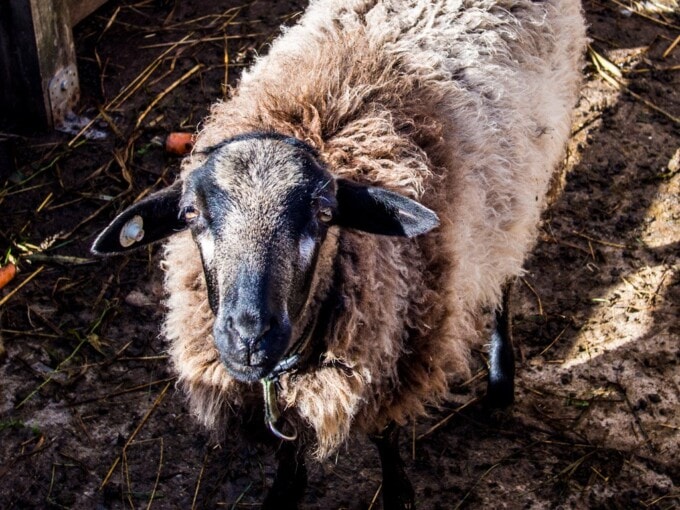
5. Make Time to do Nothing
For some of us, doing nothing sounds like heaven. For others, it’s the worst punishment ever. If you’re in the second category, I suggest you deliberately schedule “nothing” time into your travel calendar. But don’t worry about being bored. Doing nothing in a strange place is the quickest route to adventure that we’ve ever found.
6. Learn a Few Words in the Local Language
Since you’ll be travelling slowly, you can take a little time to learn a few words of the local language.
Start with “hello” and “thank you”. Then work you way up to “how are you?”, “what’s your name?”, and other phrases of small talk. Even if that’s all you can say, it’s worth it to see the expressions of delight on local’s faces when you actually adress them in their own language.
7. Get Lost
Wander wander wander. If we have one rule for slow travel, this is it. Put down your map, people, and just go!
The “do nothing” time you built in your schedule is the perfect time to wander. Keep your eyes open, observe the people, the buildings, and the life around you.
Once you’ve had enough wandering for the day, pull out your smart phone and use your favourite map app to get unlost.
8. Take a Tour
We used to think that tours were only for fast travellers or travellers who didn’t know what they were doing. Now, we realize that good tours are like your backstage pass to a destination!
A good guide will open doors that are usually not accessible to tourists. Of course, you want to avoid big group tours that chug you from place to place in a giant, smelly bus. Look for small group tours with companies who focus on independent-style travel. These types of tours can reveal facets of your destination that you would never experience on your own.
For independent and transformational small group tours, we love Intrepid .

9. Try a Cycle Tour
Cycle touring is not for everyone, obviously, but if you’ve ever felt the sheer joy of hopping on a bike, we highly encourage you to try a cycle tour.
If it’s your first time travelling by bike, we recommend joining a short multi-day tour. That way, everything is provided for you, you’ll have all the right gear, and a guide who can show you the ropes.
I don’t think it will take long for you to discover the indescribable joy of travelling by bike — our favourite method of slow travel.
If you want to get out on a bike anywhere in Asia, we recommend Grasshopper Adventures .
(Related: Read Jane’s post The Truth About Cycle Touring to see if it’s right for you) →
10. Book a Retreat
If you really want to make your slow travels transformational, a retreat is a good option. You can spend your entire trip on a retreat, or just dedicate a few days of a longer trip to a retreat.
Many retreats include yoga, others teach you about nutrition or cooking, while still others focus on your mental wellbeing and include lots of massages! Whatever style you choose, a retreat will give you vital time to slow down, peel away the busy-ness of life, and remember who you are and what makes you happy.
If you’re looking for a retreat, you’ll find a great selection on BookRetreats .
So, are you ready to try to travel slowly? Can you let go of your guidebook, your minute-by-minute plans, and your checklists and just let yourself slip into the local lifestyle? Where will you slow travel to next?
♥ Happy transformational travels, Jane & Stephen
We’re not going to lie, it takes a LOT of work to create travel guides like this. But it’s easy to help us out! If you book or buy something using one of our personal links in this post, we’ll earn a small fee at no extra cost to you. Of course, we would never recommend anything we didn’t 100% believe in! Huge thanks in advance! –S&J

Share With Your Friends
Get 101 travel tips.
Get our free ebook, 101 Travel Tips for Mindful Adventurers. It’s packed with our best tips for saving money, planning for travel, booking flights and accommodation, traveling sustainably, and staying on the road for longer! We ask for your email address so we can send you an email about once every month with our latest travel tips, destination advice, and personal stories about life on the road.
Thanks for joining My Five Acres.
Oops. Something went wrong. Please try again.
No spam ever. Your privacy is protected!
About Jane Mountain
Hi, I'm Jane, founder and chief blogger on My Five Acres. I've lived in six countries and have camped, biked, trekked, kayaked, and explored in 50! At My Five Acres, our mission is to inspire you to live your most adventurous life and help you to travel more and more mindfully.
Get Your Copy of How to Transform Your Life Through Travel!

About My Five Acres
Eight years ago, we sold our house and quit our jobs. Now we travel full-time and help others transform through travel.
We're here to help you find life-changing travel experiences that widen your perspective, challenge your beliefs, and shake you awake into your own life.
Find out how →
Useful Links
- Our Favourite Travel Tools
- Our Latest Blog Posts
- Press & Awards
- Privacy Policy & Disclaimers
Affiliate Disclosure
Search my five acres.

Slow Travel Guide: The Best Slow Travel Destinations
by Melissa Giroux | Last updated Feb 19, 2024 | Budget Travel , Travel Tips
By now, you have probably heard of the latest travel trend, slow traveling.
Many backpackers and budget travelers enjoy slow traveling – spending a month or two in each place before moving on.
In the past few years, many travelers are now opting to travel to fewer destinations and stay in each one for longer.
So what exactly is slow traveling, how do you do it, and which countries should you do it in?
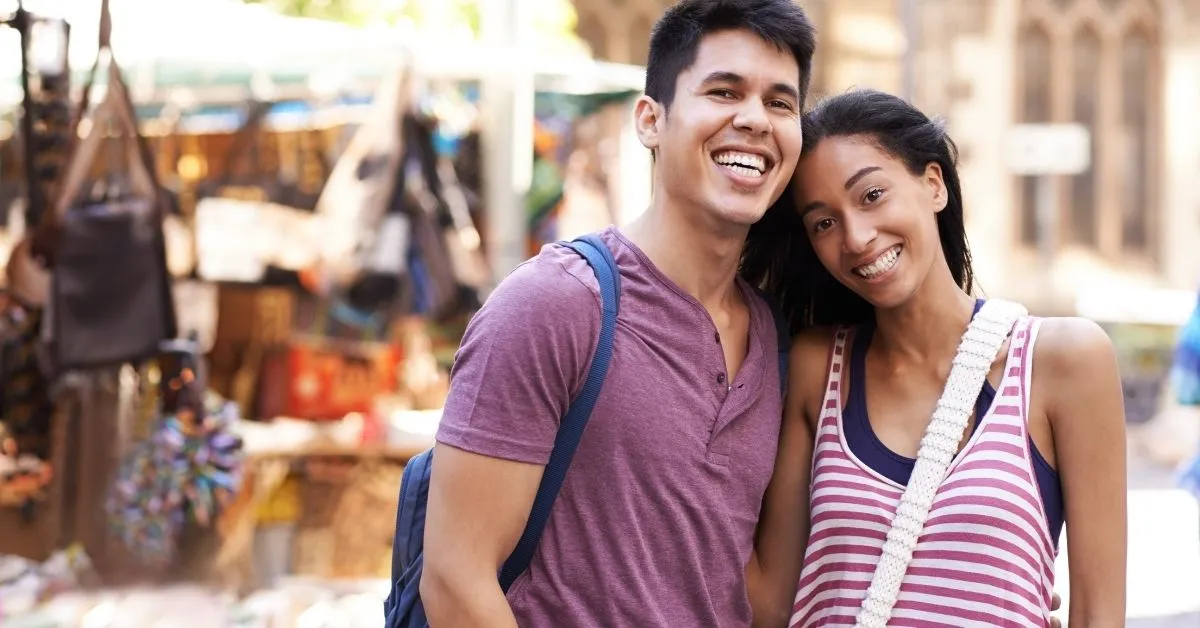
What Is Slow Travel?
Most backpackers typically seek to visit as many destinations as possible on a trip. Therefore, they choose to spend a few days in each place, seeing only the highlights before moving on.
By traveling in this way, you can visit around ten or so spots on a one-month trip, swiftly getting through your bucket list.
A slow traveler typically spends longer in a destination than a traditional backpacker.
Slowing down your trip in this way allows you to experience each place on a deeper level, learn more about the culture, and even get involved in the community.
A slow traveler who spends one month in a particular city will have a completely different experience than a backpacker who passes through for a weekend.
Slow traveling allows you to get a greater sense of life in other parts of the world. By spending a few weeks to a few months somewhere, you may feel more like you temporarily live there rather than on vacation.
The additional time allows you to explore more of the city and the surrounding areas. You are also likely to do more ‘local’ activities than just the tourist attractions.

How To Slow Travel
Slow travel is ideal for anyone who wants to travel for longer. However, it can seem that a one-year trip would be much more of a financial investment than a one-month vacation.
Therefore, many travelers worry that they will run out of money if they travel slowly like this.
However, there are ways that you can slow travel around the world without spending more money than you would on a shorter backpacking trip.
Here are five tactics you can use to travel slowly on a budget.
Visit Destinations During Low Season
We slow travel to break away from the traditional tourist mindset.
Therefore, to see a destination differently and save money, I recommend planning your trip so that you visit each destination in the low season, or at least towards the end of the high season.
As you know, hotels, tour operators, and even restaurants raise their prices at the beginning of the high season in anticipation of flocks of tourists.
However, as the season draws to a close and the crowds leave, prices come back down. So, arriving at this point is a brilliant idea if you want to travel on a budget.
Not only will you get better deals everywhere in the off-season, but you will also experience a much more peaceful and relaxed atmosphere.
Without the tourist crowds, it’s much easier to see a city for what it truly is and integrate yourself into the community.
However, the low season can mean extremely high temperatures in some parts of the world. Or, like in many tropical countries, the low season corresponds to the rainy season.
Even so, tropical rainstorms are usually short and heavy and don’t last all day. Therefore, you will still have plenty of opportunities to enjoy your time there.
Spend (At Least) One Month In Each Place
I recommend staying in each place for one month. If you’re used to staying just a few days in each location, one month may seem very long.
But I promise you, it is not. Aside from slowing down and exploring at a leisurely pace, you can snap up great accommodation deals if you commit to staying for a month.
You can usually get monthly discounts at hotels and Airbnbs. However, you might be able to rent a studio apartment for one month for even cheaper.
You’ll also be able to save money on car or scooter rentals. Usually, rental companies have better deals for long-term rentals.
Live Like A Local
To keep your day-to-day costs low, look at and copy how the locals live.
Although the western restaurants may feel familiar and comforting when you’re in a foreign land, the food in these restaurants is often 5 times the price of local eateries.
While it’s OK to treat yourself to home comforts once in a while, doing so daily will seriously dent your budget.
Some local restaurants also aim more towards tourists than locals, so prices will be higher. An easy way to find a proper local restaurant is to look for where you see the most locals eating.
Unless you’re traveling in Asia or South America, where eating out is extremely cheap, you’ll probably want to cook your own meals too.
Visiting food markets and buying groceries is a brilliant way to experience local life and keep your daily spending under control simultaneously.
PSSST. Want to get FREE accommodation in exchange for work?

Choose Land Travel Instead Of Flying
Traveling without any time restraints opens up the opportunity to travel via different (and cheaper) modes of transport.
Instead of flying, look into the possibilities of traveling between destinations via car, bus, or train.
Yes, the journeys will be much longer and less comfortable than taking a flight.
However, you could save a considerable amount of money. Plus, traveling by land allows you to see very rural parts of the country.
Volunteer In Exchange For Accommodation
One of the best ways to slow travel around the world on a budget is to volunteer in exchange for free accommodation and food.
For example, many hostels will let you stay for free if you spend a few hours each day cleaning the dorms and common areas.
While it’s not glamorous work by any means, the money it will save you could allow you to double the length of your trip!
Many other ‘ volunteer for accommodation ‘ options are available if you’re not a fan of the hostel environment. I recommend using a trusted platform like Worldpackers to find opportunities.
Worldpackers vet and verify all the ads posted so you can rest assured that the placements are legit and trustworthy.
On Worldpackers, you can find community projects run by local organizations or NGOs. This is a fabulous way to get involved in the community and make a real difference during your time there.
Volunteering on these kinds of projects can bring real meaning and purpose to your trip, with the bonus of having free accommodation, meals, and other benefits.
There are also work exchange placements in schools, where you will get to teach English to underprivileged children.
Or, if you want to get in touch with nature, you can volunteer on a farm, an eco-lodge, or a campsite.
Want to learn more? Read our Worldpackers review .
GRAB YOUR DISCOUNT ON WORLDPACKERS
Best Destinations For Slow Traveling On A Budget
Now, let’s talk about the best destinations for slow travelers.
United States
The great news is, if you’re based in the US, you don’t need to leave the country to travel.
The USA’s diverse states and landscapes make the country perfect for slow traveling.
What’s more, you can take scenic road trips from one destination to the next without having to splash out on any expensive flights.
However, the downside of traveling in America is that it is generally more expensive than in other parts of the world. Even so, one way to significantly cut your costs is to volunteer for accommodation at each destination.
Worldpackers has over 150 US volunteer programs on its platform, ranging from hostel work to homestays to farm work. Some unique opportunities you can get involved in in the USA include:
- Caring for abandoned and neglected horses in Reeds
- Working in a hostel bar in Lake Tahoe
- Volunteering on a yoga retreat in Hawaii
- Browse more opportunities here
South America
South America is a slow traveling paradise for those on a tight budget, dance lovers, and anyone looking to learn Spanish.
The continent is exceptionally cheap, both to travel around and for day-to-day expenses. Plus, South America is just as diverse as North America.
Slow traveling in South America presents a wide range of potential opportunities.
For example, you can trek Machu Picchu, explore the Amazon, party in Rio de Janeiro, and learn to salsa in Cartagena.
With so much to do and see here, you’ll undoubtedly want to extend your stay. You will find many brilliant charity organizations working across the continent.
They are always keen to offer free accommodation and meals to anyone who helps them out.
In fact, South America is one of the easiest parts of the world to find volunteering opportunities in.
For example, Worldpackers has over 1000 listings for volunteer placements in Brazil alone! You can:
- Learn about sustainable farming in Brazil,
- Paint artwork in a hostel in Chile
- Help to build an Earthship inspired art studio in Argentina
- Take care of the stray dogs in Peru’s Sacred Valley.
Asia is an incredible place to slow travel. You can take your time to experience the unique way of life in each Asian country and give some much-needed help to the communities.
Asia is also full of beauty, and short backpacking trips often miss out on so much. By slow traveling, you can get off the beaten path more and discover some of the hidden gems of this vibrant continent.
If you’re a native English speaker, you will find hundreds of volunteer opportunities to teach English to underprivileged kids in Vietnam, Cambodia, India, and many more countries.
There is also plenty of charity and community work that you can get involved in where you will actively see your help making a difference.
Some cool and meaningful volunteer placements you can find on Worldpackers include:
- Working with Autistic children in Ha Noi, Vietnam
- Teaching yoga in the Philippines
- Caring for stray animals on Thai island
- Volunteering in an orphanage in Nepal
- Browse opportunities here
Australia is one of the most loved backpacking destinations worldwide. The country offers so much natural beauty, tons of adventure, and plenty of once-in-a-lifetime experiences.
However, traveling around Australia and taking trips to the Great Barrier Reef, Whitsunday Islands, and Uluru can quickly become costly.
Many backpackers in Australia fall in love with a particular town or city and begin volunteering in hostels, enabling them to extend their stay.
It’s easy to find hostels that will let you volunteer in exchange for a bed in a dorm.
However, there are also other types of volunteering options available that offer a more authentic Aussie experience.
For example, on Worldpackers , you will find opportunities to:
- Help on farms in Western Australia’s wine regions
- Care for llamas in the Southern Tablelands of New South Wales
- Clean the campgrounds on the gorgeous South Stradbroke island
There are so many wonderful European countries worth visiting, all with their own unique heritage and charm.
There is so much to see, like the lush green English countryside, Portugal’s medieval cities, Italy’s beautiful wine regions , and the immense Swiss Alps.
Therefore, it is essential to travel slowly through Europe.
However, like the USA, Europe can be an expensive continent to travel around. Therefore, volunteering for accommodation is a helpful way to explore more places while controlling your expenditure.
There are so many fun volunteer opportunities on offer in Europe. Many help the environment, too, such as rejuvenating a forest in Portugal.
Other unique European volunteer placements on Worldpackers include:
- Au pairing in France
- Leading pub crawls in Croatia
- Living and helping on a yacht in Montenegro
- Taking care of reindeer in Norway
Final Thoughts On Slow Travel
As the travel industry finds its feet again, many parts of the world choose to keep additional entry requirements in place.
Therefore, it’s the perfect time to travel slowly, spend longer at each destination, and volunteer for a good cause.
And to help you have the best slow travel experience, we’re giving you $10 off your next Worldpackers membership .
Want to learn more about volunteering abroad? Read one of the following blog posts:
- Hostel work
- Workaway vs Worldpackers
- Worldpackers promo code

MY TOP RECOMMENDATIONS
BOOK HOTEL ON BOOKING.COM
BOOK HOSTEL ON HOSTELWORLD
GET YOUR TRAVEL INSURANCE
LEARN HOW TO START A TRAVEL BLOG
LEARN HOW TO VOLUNTEER ABROAD


- Audio Lessons
- Video Lessons
Advanced English - Level 7 Listening

Keep Listening
Go back to the level list.

More Levels
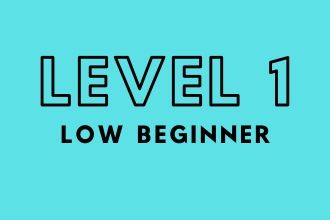

IMAGES
COMMENTS
People won't invest their time in you. So if at least you're going to stay in a place for three to four months, I think that's sort of the turning point with a lot of people and they'll say, "Hey, yeah, you know what, let's go try to be friends. Let's go out and do something together.". Todd: So Dan, you're talking about slow ...
#1325 Slow Travel Travelling vs staying in one place. ADV 7. Dan / Todd #1324 Where to Work in Asia Places to work in Asia. ADV 7. Dan / Todd #1323 Business in Bali Doing business from Bali. INT 6. Aimee / Paul #1322 The Recovery An accident that ruined a special day. INT 6. Aimee / Paul #1321 Car Smash Ups Traffic accidents.
Advanced English - Level 7. Advanced English. - Level 7. ESL students can learn English with lessons featuring audio or video, a script, interactive quiz and vocabulary activities. Are you outgoing? Curtis talks about his dream house. Spencer talks about her dream house. Travelling vs staying in one place.
Slow travel means tamping down our own built-in, conditioned obsessions with time and allowing the world to move just a little slower so that we can actually notice it. If slow food is defined, at ...
Rocio answers the question: Do you travel for business?For more natural English listening, go to Elllo.org. We have plenty of 1-minute videos like these on t...
1. Plan to take some extra time. "Unfortunately, in today's society, it's hard to step away for an extended period of time," says Shieh, noting that travel itself is a luxury. "It's important to acknowledge that slow travel is a huge privilege," she says. "I feel so lucky to be able to experience the world at a slower, more ...
Hoy vamos a hablar de todo ello en profundidad. De cómo el Slow Travel es bueno para ti, bueno para los lugares a los que visitas y bueno para el medio ambiente. En ese sentido, tiene mucho que ver con el ecoturismo. De hecho, Antonio G y Cris llevan bastante tiempo defendiendo y practicando este tipo de turismo que tantas ventajas ofrece.
Slow travel is a deliberate, unhurried approach to exploring destinations, emphasising meaningful experiences, and cultural immersion. Travelers stay longer in one place, support local economies, and seek sustainable, mindful journeys that promote a deeper connection with people and environments, in contrast to traditional, fast-paced tourism.
Slow travel allows you to set a more relaxed pace, reducing stress and anxiety. You can take the time to be spontaneous, relax, and appreciate the beauty of each moment. This approach results in a more enjoyable travel experience. 3. Enhanced well-being.
History of Slow Food and Slow Travel. Slow travel is actually an offshoot from the slow food movement which began in Piedmont, Italy in the 1980s as a backlash to fast food.. Local food producers rallied behind Italian journalist and activist Carlo Petrini to call more attention to the local chefs, farmers, producers, and artisans who were already growing the best local food, after a McDonalds ...
How to practise slow travel Give yourself lots of free time to wander, explore and enjoy meals at a relaxed pace. Using FlightHub 's intuitive My Trips tool makes it easy since you can access all ...
Otherwise, the travel quote "It's about the journey, not the destination" wouldn't be such a hit! 7. You'll Leave a Traveler, Not a Tourist. Tourists often get a bad rap. Sadly, tourists are often negatively perceived because they come in hoards with a "me mentality" often leaving a place worse than when they found it.
Join the locals on the wheels. Slow down your travels by taking yourself from place to place. Sustainable, convenient, and a great thing to do, biking is one activity you have to add to your slow travel checklist. Cycle your way across nature reserves, past the cities, or even follow along a local ice skating route.
"Slow travel can be broadly defined as low carbon travel practices resulting in longer stays, less travel, enriched experience, the emphasis of the journey itself, and a deeper connection with a place, thus stressing more sustainable, responsible consumption practices," states a research paper published by ScienceDirect.In simpler words, slow travel is about quality rather than quantity.
It's the world's first platform for flight-free holidays and aims to mainstream the emerging trend of slow travel by making it easy to visit lesser known locations without needing a car. "It ...
Slow tourism or travel isn't necessarily literal: taking the slow, local train or laying in a hammock all day. It's about connection - connecting to a place through its culture, its food and its people. And often this is achieved by slowing down your pace somewhat.
Slow travel: la forma de viajar que te va a encantar. ¿Qué es el slow travel? ¡Comenta! En los últimos años, los turistas viajan llevando consigo el estrés de su vida diaria. Por ello, slow travel reivindica poder disfrutar de unas vacaciones con mayor tranquilidad. Vivimos en una sociedad en la que tenemos la sensación de tener siempre ...
Slow travel is about swapping a high-intensity itinerary full of 12 cities in as many days, for a leisurely stroll through the same town for the duration of your getaway. It's about taking the train, eating local, and camping more often than you get on a shuttle bus to the nearest wonder of the world.
Slow Travel: Tales, Tips & Meaning. March 7, 2022 by Janice Waugh. Whether your time in Japan is short or long, you can experience slow travel by taking a day and going to an Onsen. Traveling slow and solo through a city, noticing the planning and design, the pace of the people, the use of green space, the sounds, the cuisine, the architecture ...
When you slow down, you give your brain more time to form complete memories, and you'll be able to call up the scents, colours, and feeling you had for years to come. 13. You'll Learn to Live with Less. If you take a longer trip and travel slowly, you might just start to realize an important truth.
448 Travel Tips. Greg gives travel tips on how not to get lost in a new location. . INT 4. Shuan. 447 Trip to Mexico. Shuan and Senem plan a trip to Mexico. . INT 4.
Australia is one of the most loved backpacking destinations worldwide. The country offers so much natural beauty, tons of adventure, and plenty of once-in-a-lifetime experiences. However, traveling around Australia and taking trips to the Great Barrier Reef, Whitsunday Islands, and Uluru can quickly become costly.
Advanced English. - Level 7 Listening. ESL students can learn English with lessons featuring audio or video, a script, interactive quiz and vocabulary activities. Anthony talks about bitcoin and crypto. Anthony talks about bitcoin and its history. 1498 Breaking Bad Habits!
Michael Ceely once spent a four-hour flight just zoning out - no magazines, no movies, no podcasts, just looking out the window and watching the flight map. Ceely, a therapist in California who ...